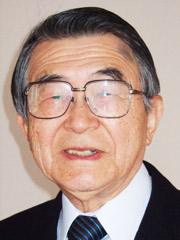
Congress Program
The Scientific Program of the 9th IOC will have two parallel components; one to cater to the Orthodontist and one for the Allied Health Professional which includes dental technicians, hygienists, dental attendants and office staff.
A variety of sessions topics are planned, from clinical to political, as well as dedicated time for the poster session.
The 9th IOC will be a virtual 24/7 online “on demand congress”.
The Congress starts on Sunday, October 4 and until Tuesday, October 6, new sessions will be released in each day. All lectures are available on demand from October 7 to November 3, 2020.
Program at a glance is available by clicking on the button below.
The 9th IOC Virtual will begin on Sunday, 4th October with the Opening Ceremony and WFO Keynote Lecture. This lecture will be given by Prof. Takayuki Kuroda. The Opening Ceremony will start at 4:00pm in JST on October 4, 2020.
Please check what time your local time will be and view the the Opening Ceremony and WFO Keynote Lecture. (*later on it also be available on demand as well.)
Time Zone Converter
Doctors’ Program
WFO Keynote lecture
Takayuki Kuroda, D.D.S., Ph.D.
Professor Emeritus, Tokyo Medical and Dental University
WFO Honorary Member
Evidence-based Orthodontic Treatment: What Is the Evidence?
Biography
Takayuki Kuroda, DDS., PhD.
Professional education
- Faculty of Dentistry, Tokyo Medical and Dental University. D.D.S., 1961
- Graduate School, Faculty of Dentistry, Tokyo Medical and Dental University, PhD. 1965
Academic Appointment
- Associate Professor, Department of Orthodontics, Faculty of Dentistry, Tokyo Medical and Dental University, 1974~1981
- Professor & Chairman, Second Department of Orthodontics, Faculty of Dentistry, Tokyo Medical and Dental university, 1981~1999
- Professor & Chairman, Maxillofacial Orthognathics, Department of Maxillofacial Reconstruction and Function, Graduate School, Tokyo Medical and Dental University, 1999~2002
- Professor Emeritus, Tokyo Medical and Dental University, 2002~Present
- Research Associate, Department of Orthodontics, The Royal Dental College Copenhagen, 1966~1967
- Research Associate, The Center for Human Growth and Development, University of Michigan, 1969~1970
Academic Activity
| Japanese Orthodontic Society | Honorary Member (Past Board Member) |
|---|---|
| Japanese Association of Cleft Lip and Palate | Honorary Member (Past President) |
| Japanese Association for Jaw Deformity | Honorary Member (Past President) |
| Japanese Association for Dental Research (JADR) | Life Member (Past President) |
| International Association for Dental Research (IADR) | Life Member (Past President) |
| World Federation of Orthodontists (WFO) | Honorary Fellow |
| Charles H. Tweed International Foundation for Orthodontic Research | Honorary Academic Fellowship |
Award
- President Award of Japanese Association for Dental Science 2000
- Louis Ada Jarabak Memorial International Teacher and Research Award, American Association of Orthodontists 2010
- The order of the Sacred Treasure, Gold Rays with Neck Ribbon, Japanese Emperor 2016
Doctors Program 31 themes
As of September 28, 2020
Imaging and Digital Orthodontics
no img
Automation in 3D cephalometrics and volumetric craniofacial imaging
no img
C"LOUD" & CLEAR!
no img
Three-dimensional diagnostic application for graduate program in United States
Imaging and Digital Orthodontics
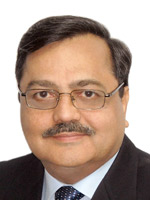
Automation in 3D cephalometrics and volumetric craniofacial imaging
Om P. Kharbanda
Dr CG Pandit National Chair of ICMR
Department of Plastic Surgery
All India Institute of Medical Sciences, New Delhi 110029 India
Formerly: CHIEF of the Centre for Dental Education and Research (CDER), Professor and Head, Division of Orthodontics and Dentofacial Deformities, Director WHO Collaborating Centre and CHIEF: KL Wig Centre for Medical Education, Technology and Innovation (CMET-i), All India Institute of Medical Sciences, New Delhi.
Orations
Indian Orthodontic Society Oration 54th Indian Orthodontic Conference Bhubaneshwar 2019
Dr R Ahmed Oration at 71st National Indian Dental Conference Bhubaneswar 2018
Dr Suresh Raghunath Tambwekar Founders Oration during 15th Annual Conference of Cleft Lip and Palate and Craniofacial Anomalies Chandigarh 2016
Maj Gen Kartar Singh Oration during 30th Annual Pierre Fauchard Academy (PFA) Convocation and Award Ceremony Thiruvanthapuram 2016.
Invited Speaker 43rd Annual Moyers Symposium, Michigan University, USA, March 2016.
Prof V Surendra Shetty Oration during 8th World Implant Orthodontic Conference, Goa, November 2016.
Prof HS Shaikh Oration of Indian Orthodontic Society 2014
KOSG Oration of the Indian Orthodontic Society delivered during 49th Indian Orthodontic Conference Kolkata, 2014
Professor S Ranagachari Oration of the Government Dental College Chennai 2013
VASAVI Memorial Oration of the Indian Orthodontic Society delivered during 37th Indian Orthodontic Conference Lucknow 2002
Honours and Awards
Shakuntala Amirchand Award by the Indian Council of Medical Research. 1994
Best Research Paper Award presented in the Indian Orthodontic Conference, 1987
Dr PP Jacob Gold Medal for the Best Research paper published in the Journal of the Indian Orthodontic Society 1999.
Best Research Poster Award Australian Orthodontic Society Brisbane 2008
National Academy of Medical Sciences Award 2013
Outstanding Professor Award of the Indian Orthodontic Society 2018.
Research interests
3D Technology in Orthodontics NonExtraction Treatment Miniscrew Implants Cleft lip and palate
Abstract
The science and technology of 3D imaging at relatively low radiation and advanced software capabilities have enabled clinicians and researchers three dimensional visualisation, measurements and volumetric analysis of the craniofacial region. Researchers have proposed new 3D landmarks and 3D cephalometric analysis. The complexity of on-screen three-dimensional landmark plotting requires considerable effort and time notwithstanding the experience of the operator as compared to landmark plotting on 2D conventional cephalogram. Such issues necessitated the urge for automating the process of 3D landmark plotting and measurements. In the last few years, three types of approaches for automatic detection of cephalometric landmarks have been proposed. The first being registration-based and second knowledge-based and third deep learning-based. We have developed an innovative knowledge-based technique and tested its reliability for automation of useful 3D cephalometric landmarks. The automated detection can also generate linear, angles and ratios measurements. One step ahead, using template matching extended to a knowledge of anatomical definitions on CBCT, our group has developed an automated volumetric analysis of paranasal sinus and nasal-respiratory passages.
This presentation will deal with the current automated 3D cephalometric analysis and novel patented technology of automated 3D cephalometric and airway analysis with the least indulgence of an orthodontist for 3D plotting and measurements. The presentation will dwell upon how the possibilities of knowledge-based automation could add new dimensions in the understanding of malocclusion assessment and how functional jaw orthopaedics, orthodontics and surgical treatment would affect the craniofacial structures in three dimensions of space and volume of the functional spaces.
Imaging and Digital Orthodontics
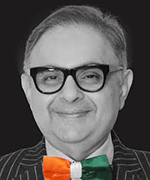
C"LOUD" & CLEAR!
Nikhilesh R. Vaid
Prof Nikhilesh R. Vaid is currently the PRESIDENT -ELECT of the World Federation of Orthodontists. He is a Past President of the Asian Pacific Orthodontic Society & the Indian Orthodontic Society. Prof Vaid is Editor in Chief of APOS Trends in Orthodontics -the Journal of the Asian Pacific Orthodontic Society and three issues of Seminars in Orthodontics, including one on "Digital Technologies in Orthodontics"
He has a practice in Mumbai, India and Dubai ,UAE. He is the VICE DEAN and Professor of Orthodontics at the European University, Dubai Health Care City, DUBAI,UAE.
Abstract
The past decade in Orthodontics has made some very "emphatic statements",which will chart the course of how orthodontics is practiced, marketed, researched and taught over the next decade and probably the rest of this century!
The presentation will discuss the technological kaleidoscope from an evidence based perspective, as influencing the speciality of orthodontics. The application of cloud based services to clinical care and their futuristic possibilities will be analyzed. Core Data Sets (CDS)of tech infusion research in orthodontics will be presented.
The learning objectives will be -
1) Identification of seminal literature on technological developments and their impact on the speciality.
2) Analysis of "what we know" about technological infusions in the last decade,"what we don't" and bridge the gap between the two.
3) Understand with clinical examples-where technology can enhance patient outcomes, where it can't !
Imaging and Digital Orthodontics
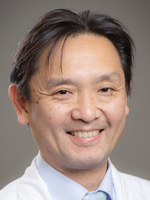
Three-dimensional diagnostic application for graduate program in United States
Toru Deguchi
Professional Experience and Education
| 1992 | Graduated Aichi-Gakuin University School of Dentistry |
|---|---|
| 1996 | Graduated PhD course in Orthodontics in Okayama University |
| 2001 | Graduated Master course in Orthodontics in Indiana University |
| 2001 | Clinical instructor in Department of Orthodontics in Indiana University |
| 2002 | Assistant professor in Department of Orthodontics and Dentofacial Orthopedics in Okayama University |
| 2010 | Associate professor in Division of Orthodontics and Dentofacial Orthopedics in Tohoku University |
| 2013 | Associate professor and Program Director in The Ohio State University Division of Orthodontics |
Honors and Awards
| 2002 | Distinguished Scientific Award in 62nd Annual Meeting of the Japanese Orthodontic Society |
|---|---|
| 2005 | Distinguished Research Award in Okayama University Graduate School of Medicine, Dentistry, and Pharmaceutical Sciences |
| 2005 | Distinguished Scientific Award in 53rd Annual Meeting of the Japanese Association for Dental Research |
| 2005, 2007, 2011, 2013, 2014, 2019 | |
| Excellent Presentation Award in Annual Meeting of the Japanese Orthodontic Society | |
| 2010 | Young Investigator Award in The 3rd Interface Oral Health Science International Symposium |
| 2014 | Michael Matlof Memorial Teaching Fellowship Award from American Association of Orthodontics |
| 2016 | Burstone Indiana Biomechanics Award from American Association of Orthodontics |
Research Interests
Dr. Toru Deguchi has been focusing his clinical interests in the field of temporary anchorage device, lingual orthodontics, and interdisciplinary cases. He has been also engaged in the research field such as histomorphometric studies related to tooth movement and pain related studies. Recently, he has initiated research related to three-dimensional diagnostic system in clinical orthodontics.
Abstract
In recent years, there have been a significant progress in three-dimensional (3D) diagnostic system in the field of orthodontics. Remarkable development of intra-oral scanner, the use of digital model, 3D printer, and cone beam CT has contributed to these innovative changes. Combining these 3D tools will be able to visualize the problem and help patients understanding the treatment goals and may contribute in enhancing the work efficiency for the orthodontists. These techniques also have influenced in constructing various orthodontic appliances including in-house aligners and retainers. In this presentation, I would like to introduce how we apply these 3D systems in diagnosis and treatment planning such as setup models, visual treatment objectives, and managing surgical prediction and constructing the splints in our post graduate orthodontic program. I will also present some of our current research with regard to reliability and the usefulness of 3D diagnostic system in clinical orthodontics.
Accelerated Tooth Movement
no img
How can we accelerate tooth movement? Do we need external Aids ?
no img
Adjuncts to orthodontic tooth movement. Are they really worth the bother?
Accelerated Tooth Movement
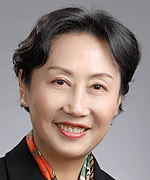
Class II correction with the use of TADS
Fang Bing
In the correction of convex deformity, it is often accompanied by high angle, opening and closing, bimaxillary protrusion and so on, which are all challenging malocclusion and difficult to treat. This topic is about the joint application of implant anchorage and orthodontics device to release the appropriate mechanics, so as to achieve the effective correction of these patients and achieve the goal of functional and aesthetic balance and health.
Abstract
Class II correction with the use of TADS
Accelerated Tooth Movement
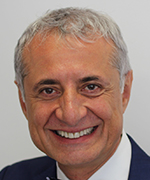
How can we accelerate tooth movement? Do we need external Aids ?
M. Ali Darendeliler
Dr Darendeliler is Professor and Chair of Orthodontic, Discipline of Orthodontics, at the University of Sydney and Head of Department, Orthodontics, Sydney Dental Hospital, Sydney South West Area Health Service. He received his dentistry training from the University of Istanbul and his PhD from the University of Gazi, in Turkey and his first specialist training in orthodontics from the University of Geneva, Switzerland and his second specialist training from the High Education Council, Turkey. During the course of his career he has undertaken duties as a clinical instructor, research and postgraduate coordinator (Maitre d'Assisstant et de Recherche) at the University of Geneva, Assistant Professor at the University of North Carolina, Research Professor at the University of Southern California. Dr Darendeliler has been recognized for his efforts with multiple prizes including the Sheldon Friel Award, the highest recognition from the European Orthodontic Society, the Begg Award, the highest research award from the Australian Society of Orthodontists, and the Huston award for best research from the European Orthodontic Society. His research interests include orthodontic tooth movement, root resorption, obstructive sleep apnoea, temporary anchorage devices, sequential aligners, self-ligating brackets, orthopaedic treatment modalities, accelerated tooth movement, magnetic fields and forces and dentofacial orthopedics. He lectured in North and South America, Europe, Asia, Africa and Australia. In addition to his research and teaching commitments he also maintains a private specialist orthodontic practice.
Abstract
Clinicians have been looking at the ways of accelerating tooth movement for several reasons: Patient's demand due to increase in number of adult patients, to avoid problems related to treatment duration such as demineralization, periodontal issues and root resorption, to increase the productivity, profitability and efficiency, to have better anchorage control and to differentiate themselves from other practitioners. Several methods were used to accelerate tooth movement however the benefits of the methods used have to be looked at in terms of side effects and clinical significance. The only way to accelerate the orthodontic tooth movement is to accelerate bone resorption via biological response from the periodontal ligament as a result of mechanical loading. In fact the question to be asked is: Accelerated bone resorption; What is the evidence? Several methods, drugs and external stimuli were tested over the years and most of these were promoted by companies usually with little or no evidence. The lecture will address all available methods used to accelerate orthodontic tooth movement and will discuss their validity based on evidence.
Accelerated Tooth Movement
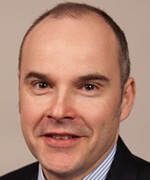
Adjuncts to orthodontic tooth movement. Are they really worth the bother?
Martyn T. Cobourne
Martyn Cobourne is Professor and Head of Orthodontics at Kings College London and Honorary Consultant in Orthodontics at Guys and St Thomas NHS Foundation Trust. His research is primarily focused on investigating the role of molecular signaling pathways during early craniofacial development. However, he is also interested in the effectiveness of contemporary orthodontic treatment and has led a number of multi-centre clinical trials investigating treatment efficiency. His clinical research won the B. F. and Helen E. Dewel Award of the American Association of Orthodontists in 2019. He has published over 145 peer-reviewed articles and is the author of two successful orthodontic textbooks. He was Director of Research at the British Orthodontic Society between 2012 and 2016 and is currently Editor in Chief of the Journal of Orthodontics. He is an elected member of the Board of Faculty of Dental Surgery at the Royal College of Surgeons of England and a full member of the North Atlantic Division of the USA Angle Society.
Abstract
A key goal for all orthodontists is the minimisation of treatment duration whilst maintaining excellence of treatment outcome. In recent years, a number of techniques have been popularised that aim to reduce orthodontic treatment time by speeding up rates of tooth movement. These include the use of different bracket designs and archwire sequences, customised appliances, vibrational force application, photobiomodulation and surgical-assisted orthodontics. This lecture will review the scientific basis of these different techniques and focus on the clinical evidence base for their efficiency. The relevance of these findings will be discussed in relation to current clinical practice.
Airway
no img
Non-Surgical Expansion with Midfacial Skeletal Expander (MSE) for Upper Airway Obstructive Patients
no img
Update on Orthognathic Surgery: long term stability and relationship to airway
no img
Upper airway dilatation and dentofacial growth modification in children with obstructive sleep apnea
Airway
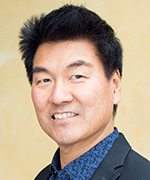
Non-Surgical Expansion with Midfacial Skeletal Expander (MSE) for Upper Airway Obstructive Patients
Won Moon
Professional Experience and Education
| 2013-2019 | Thomas R. Bales Endowed Chair in Orthodontics, UCLA School of Dentistry |
|---|---|
| 2012-2019 | Program Director, Section of Orthodontics, UCLA School of Dentistry |
| 2007-2015 | Clinic Director, Section of Orthodontics, UCLA School of Dentistry |
| 2003-2019 | Director, International Affairs, Section of Orthodontics, UCLA School of Dentistry |
| 1989-1991 | UCLA Post-Doctoral Orthodontic Residency Program and MS in Oral Biology, UCLA School of Dentistry |
| 1984-1989 | DMD, Harvard School of Dental Medicine |
| 1980-1984 | BS, Mathematics, University of California Irvine |
Honors and Awards
| 2019 | Inspirational Leadership and Dedication Award, UCLA School of Dentistry |
|---|---|
| 2018 | AAOF 2018 Center Grant Award, AAOF |
| 2014 | Groundbreaking Research Project Grant Award (Decoding the Harmonic Face), UCLA School of Dentistry |
Research Interests
Mid-facial expansion, 3D image analysis, Genomewide Association Study of Craniofacial Phenotypes, Finite Element Model (FEM), Applications of 3D Printing, Orthopedic Correction, Airway Changes, Accelerated Tooth Movement, and Micro-implant (MI) Design study
Abstract
The primary aim of this presentation is to illustrate how the maxillary skeletal expander (MSE) has evolved from its birth, by examining the dental and skeletal effects of maxillary expansion when the conventional rapid palatal expander (RPE), the surgically-assisted rapid palatal expander (SARPE), and the micro-implant assisted MSE are used. Dental expansion, bone bending, and true skeletal expansion will be compared. The adverse clinical consequences of RPE and SARPE will be explored, and a new approach eliminating these problems by the use of MSE will be presented. Clinical cases involving non-surgical midfacial expansion in both adolescent and adult patients will be examined.
The secondary aim is to demonstrate other advantages of utilizing MSE. Many patients requiring maxillary expansion often have narrow nasal airways, and positive changes in nasal airway with application of MSE are common. Clinical cases and research findings illustrating the enlargement of nasal airways after MSE in both adolescent and adult patients will be evaluated. Furthermore, improved breathing capacity after MSE expansion will be illustrated by dynamic airflow measurements and computational fluid dynamic simulations. The use of growth modification and distraction-like expansion and protraction techniques in conjunction with this new device open the door to many new possibilities, especially for patients with nasal airway obstruction and Obstructive Sleep Apnea Syndrome.
The latest findings from the UCLA research team will be presented in order to enhance depth of understanding in impact of MSE for improving the upper airway.
Airway
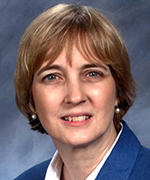
Update on Orthognathic Surgery: Long Term Stability and Relationship to Airway
Leslie A. Will
Professional Experience and Education
| 2009-present | Chair and Program Director, Boston University Department of Orthodontics |
|---|---|
| 2007-2009 | Program Director, Tufts University Department of Orthodontics |
| 1998-2007 | Chair and Program Director, Department of Growth and Development, Harvard School of Dental Medicine |
| 1995-1998 | Associate Professor, University of Illinois at Chicago Department of Orthodontics |
| 1982-1989 | Assistant Professor, Loyola University of Chicago Department of Orthodontics |
| 1982 | MSD and certificate, University of Washington |
| 1980 | DMD, Harvard University |
Honors and Awards
| 1980 | American Association of Orthodontists Award for Exceptional Interest in the development of the Oro-facial Complex |
|---|---|
| 2000 | ELAM Fellow |
Research Interests
- Treatment outcomes
- Development of dentoskeletal norms using cone beam CT
- Characterization of skeletal transverse discrepancies with CBCT
- Quality of life in orthodontic and orthognathic patients
- Normal and abnormal growth and development
Abstract
Orthognathic surgical procedures are a reliable method of correcting dentoskeletal deformities of the jaws. These procedures have shown good long term stability in two dimensions. However, three-dimensional assessment of the long term stability of bimaxillary surgery is lacking in the literature.
Sixty-one patients had CBCTs taken at three time points: preoperative (T0), postoperative (T1) (10 days-8 weeks), and at least one year after the surgery (T2). Patients were divided into two groups according to the rotation of the occlusal plane during surgery.
Thirty-three anatomical landmarks were identified, and measurements were taken relative to 7 planes to assess multiplanar movement of each jaw. Overall, 17 measurements showed significant differences between T1 and T2.
Results shows that the bimaxillary advancement procedures were stable for at least one year except for lengthening of the mandible as measured between the mental foramen and lingula and widening of the gonial angles.
Part of this sample also had airway assessments pre- and postoperatively which were evaluated for changes in nasal cavity, nasopharyngeal, oropharyngeal and hypopharyngeal compartments. The amount of movement for each surgery was measured from skeletal landmarks to reference planes and was correlated with volumetric changes.
Bimaxillary advancement significantly increased nasopharyngeal (27.45%), oropharyngeal (66.39%), and hypopharyngeal (52.48%) volumes. For every millimeter anterior movement, oropharyngeal volume increased by 2319.2±771.8 mm3, while every millimeter downward movement showed a significant increase in nasopharyngeal volume.
These results show that bimaxillary surgery is stable for at least 1 year postoperatively and leads to significant increases in airway volume.
Airway
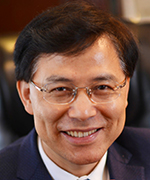
Upper airway dilatation and dentofacial growth modification in children with obstructive sleep apnea
Yuehua Liu
Professional Experience and Education
Dr. LIU Yuehua is a Professor and Dean of Shanghai Stomatological Hospital, Fudan University. He got the Ph. D degree in 1996 from Peking University and was a Postdoctoral fellow in the University of British Columbia, Canada from 1998 to 2000.
Honors and Awards
Now he is an Executive Member of the Council and Vice-President of Chinese Orthodontic Society of Chinese Stomatological Association (CSA), Vice-Director of the Council and Immediately Past President of Shanghai Orthodontic Society of Shanghai Stomatological Association (SSA), an Examiner in Orthodontics, the Royal College of Surgeons of Edinburgh.Professor LIU has been in charge of 6 General Programs of National Natural Science Foundation of China (NSFC), published over 30 peer-reviewed papers on SCI Journals and authorized 4 National Invention patents. In addition, he was awarded the second prize of the advanced science and technology, Ministry of Education, PRC, in 2002 and the second prize of the advanced medical science and technology, Chinese Association of Medicine, PRC, in 2003.
Research Interests
He has been interested in rensearch in obstructive sleep apnea in children, dentofacial vertical control for profile improvement, and lingual orthodontics.
Abstract
The etiologic factors of Obstructive sleep apnea and hypopnea syndrome(OSAHS) include anatomic narrowing and dysfunction of uppe airway. The pathogenesis,treatment stratege and prognosis of OSAHS in children could be different from that in adult. The manifestation of those children with OSAHS may include hypertrophy of tonsils and adenoid, mouth breathing, narrowed upper arch, clockwise rotated mandilbe,and uppe airway narrowing. Tonsillectomy and adenoidectomy could never eliminate the symptoms of OSAHS in children because hard tissue anatomic abnormality surrounding uppe airway still exist. In this presentation, the children with different sererity of OSAHS were subdivided into several groups with different therapies. those therapeutic methods include Tonsillectomy & adenoidectomy, oral appliance for upper arch expansion and mandibular advancement, and myofunctional reeducation. the subjective and objective treatment efficency to OSAHS were assessed by using questionnaire, and polysomnography. The effects of dentofacial growth modification from oral appliances and myofunctional reeducation were measured and analysed. The results demonstrated that combination of various methods may achievevd more satisfied curative effect.
Clear Aligners
no img
Clear Aligner; How predictable it is
no img
The defects, risks and countermeasures of Clear Aligner
no img
Orthodontic Treatment for the Elderly Patient: Old is New
no img
Improving the predictability of clear aligner therapy with mini-implants
Clear Aligners
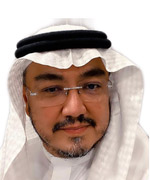
Clear Aligner; How predictable it is
Ali H. Hassan
King Abdulaziz University, Faculty of Dentistry. Alfarabi College
The demand for esthetic orthodontic treatment has increased in the past few years. Clear aligner therapy has become widespread orthodontic therapy as an esthetic substitute to conventional fixed orthodontic appliance.
The effectiveness of clear aligners is still controversial due to limited number of research. The outcome of clear aligners had been studied using different indices such as Peer Assessment Rating (PAR) scores and American Board of Orthodontics objective grading system (OGS) occlusal criteria. While these indices are objective, they are only limited to assessing crown movements only.
Evaluating both crown and root movements and position are important during different orthodontic tooth movements and post treatment, respectively. Therefore, the primary aim of this presentation is to discuss the predictability of clear aligner treatment in achieving planned crown and root movements using Cone Beam Computed Tomography (CBCT) for maxillary transverse movements and incisor antro-posterior movements. In addition, the predictability of other tooth movements will be discussed.
Clear Aligners
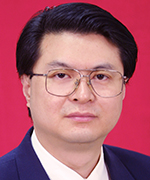
The defects, risks and countermeasures of Clear Aligner
Zhihe Zhao
Professional Experience and Education
| 2001-2019 | Professor, West China School of Stomatology, Sichuan University, China |
|---|---|
| 1998-1999 | Advanced Diploma in Orthodontics, The University of Hong Kong, Hong Kong |
| 1994-2001 | Associate Professor, School of Stomatology, West China University of Medical Sciences, China |
| 1992-1994 | Senior Lecture, School of Stomatology, West China University of Medical Sciences, China |
| 1987-1992 | Ph.D, School of Stomatology, West China University of Medical Sciences, China |
| 1981-1987 | BDS, School of Stomatology, West China University of Medical Sciences, China |
Honors and Awards
| 2016 | The First Prize of the Sichuan Province Science and Technology Progress Award |
|---|---|
| 2009 | The First Prize of the Education Ministry Science and Technology Progress Award |
| 2003 | The Second Prize of the Education Ministry Science and Technology Progress Award |
Research Interests
Biomechanics in Orthodontics
Abstract
In recent years, clear aligner has become more and more popular. However, the clear aligner has its own defects, such as material defect, efficacy defect and mechanic defect. In addition, there are still some risks , which are mainly manifested in the risks of high initial stress, IPR risks, periodontal risks of opening deep bite, retracting anterior teeth and distalizing the molars. These defects and risks lead to more problems in clinic, therefore, the author proposes a programmed solution from the anchorage, overbite, torque controls and attachment design aspects including the design, auditing, and monitoring of using clear aligner.
Clear Aligners
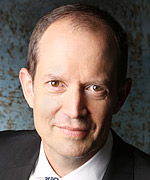
Orthodontic Treatment for the Elderly Patient: Old is New
Jorge Faber
Dr. Faber has published over 100 scientific papers and has lectured in all continents
| 2011-2017 | Editor-in-chief Journal of the World Federation of Orthodontics |
|---|---|
| 2006-2011 | Editor-in-chief, Dental Press Journal of Orthodontics |
| 2018-2020 | Professor and researcher, Post Graduate Program in Dentistry, University of Brasilia |
| 2004-2018 | Professor, University of Brasilia |
| 2003 | PhD in Biology-Morphology, University of Brasilia |
| 1994 | MS in Orthodontics, Federal University of Rio de Janeiro |
| 1989 | DDS, University of Brasilia |
Honors and Awards
College of Diplomates of the American Board of Orthodontics 2010 Case Report of the Year, American Journal of Orthodontics & Dentofacial Orthopedics.
Research interests
Orthodontics for an ageing population
Sleep apnea
Surgery First treatment
Abstract
Relatively little attention has been devoted to the smile esthetics of elderly people. Possibly, because orthodontics has been historically entwined with the treatment of children and adolescents. Only about 20 years ago adults started to be consistently treated, and several studies have demonstrated the benefits of orthodontic treatment for these individuals, as well as improvements in their quality of life. This presentation will show the results of a prospective trial which enrolled 42 patients who were 65 or older. The protocol consisted of a 6-month-pre-established treatment time with aligners. Our results showed that patients were highly satisfied with the esthetics of the partial treatments. Most patients found that the 6-month treatment time was acceptable and that the clinical results were very positive. The orthodontic treatment significantly improved patients quality of life and self-esteem. Aligner use was comfortable, however, several specific changes in aligner prescription were necessary to solve the common problems presented by this age group. Orthodontic treatment with aligners should be considered as a valuable contribution for older patients quality of life and self-esteem.
Clear Aligners
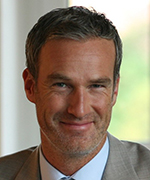
Improving the predictability of clear aligner therapy with mini-implants
Benedict Wilmes
Professional experience and Education
| 2013-2019 | Professor at the Department of Orthodontics at the University of Duesseldorf, Germany |
|---|---|
| 2004-2013 | Research fellow at the Department of Orthodontics at the University of Duesseldorf, Germany |
| 2000-2004 | postgraduate training in orthodontics at 1996-2000 at the Department of Orthodontics at the University of Duesseldorf, Germany |
| 1996-2000 | postgraduate training in oral surgery at the Department of Maxillofacial Surgery at University of Muenster, Germany |
| 1990-1996 | Dentistry Student at University of Muenster, Germany |
Honors and Awards
| 2007 | First Prize of the German Orthodontic Society |
|---|---|
| 2009 | First Prize of the European Orthodontic Society |
| 2015 | Honorary Member of the South African Society of Orthodontists |
| 2018 | Best oral presentation from the 21st Meeting of German Society of Lingual Orthodontics |
| 2019 | Active Member of the Angle Society (Eastern Component) |
Research interests
Non-compliant and invisible orthodontic treatment strategies (TADs, lingual orthodontics and aligner).
CAD-CAM Technologies
Abstract
Clear aligner therapy is ubiquitous in contemporary orthodontics. However, the predictability of achieving specific tooth movements with clear aligners including space closure, distalization and expansion is not absolute. The adjunctive use of customised appliances, retained with mini-implants positioned in the anterior palate, provides the clinician the opportunity to realize specific treatment objectives with greater precision and accuracy. They can be used concomitantly, or as an intermediary step prior to the fabrication of clear aligners.
Clear Aligners
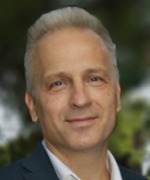
Degradation of aligners: clinical variables and concerns
Theodore Eliades
Professional Experience and Education
| 2017- | Interim Director, Institute of Oral Biology, Center of Dental Medicine, University of Zurich |
|---|---|
| 2013- | Director of Research Center of Dental Medicine, University of Zurich |
| 2011- | Professor and Director, Clinic of Orthodontics & Pediatric Dentistry, Center of Dental Medicine, University of Zurich |
| 2005-2011 | Associate Professor, Department of Orthodontics, Aristotle University of Thessaloniki, Greece |
| 2019 | DSc, University of Manchester, UK |
| 2002 | PhD, University of Manchester, UK |
| 2002 | Doctorate in Medical Sciences, University of Athens, Greece |
| 1994 | Certificate of specialty, Ohio State University, USA |
| 1993 | MS, Ohio State University, USA |
| 1990 | Diploma in Dental Surgery, National and Kapodistrian University of Athens, Greece |
Honors and Awards
| 2017 | invited Milton Sims Visiting Professor, University of Adelaide |
|---|---|
| 2015 | Jan Taylor Visiting Professor, Australian Foundation for Orthodontic Research and Education |
| 2014 | Northcroft memorial lecture, British Orthodontic Society |
| 2014 | Fellow, Institute of Physics |
| 2010 | Fellow, Royal Society of Chemistry |
| 2009 | Fellow, Institute of Materials Minerals and Mining |
Research Interests
Mechanics of materials and tissues, xenoestrogenicity of polymers, degradation of materials, retrieval analyses clinical aspects of materials application and treatment efficiency, dental hard tissues and bonding
Abstract
The purpose of the lecture is to highlight the changes occurring during the intraoral service of aligners which includes an array of compositional, surface, structural and mechanical effects. The lecture has two axes: the establishment of effects reported to involve softening, decrease in roughness in the areas which are coming in contact with composite attachments, thereby substantiating a wear mechanism; changes in color, and structural alterations are also described. Having demonstrated the foregoing effects, a number of potential effects on the clinical aspects of aligner treatment and their biological reactivity are discussed. Evidence from studies reporting effect of aligner on oral flora, the release of compounds such as attrition products, release of BPA and monomers as well as attachment composite ageing will be shown. In addition, the assessment of their biological reactivity with emphasis on the cytotoxicity and xenoestrogenicity will be discussed, as well as the impact on efficiency arising from the alteration of hardness, stiffness and relaxation of materials. The implication of these changes and effects in everyday practice will be postulated and guidelines for the minimizing of relevant unwanted effects will be proposed.
Biology in Orthodontics
no img
Biologic control of tooth movement: is it possible and, if so, how?
no img
Orthodontic movement through alveolar atrophic bone
Biology in Orthodontics
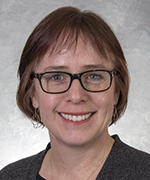
Biologic control of tooth movement: is it possible and, if so, how?
Nan E. Hatch
Dr. Nan Hatch is an Associate Professor of Dentistry, the Lysle E. Johnston Junior Collegiate Professor of Orthodontics and Chair of the Department of Orthodontics and Pediatric Dentistry at the University of Michigan. Dr. Hatch received her clinical orthodontic training and a PhD in Molecular and Cell Biology from the University of Washington in Seattle. Dr. Hatch has previously served as the Great Lakes Association of Orthodontists representative to the American Association of Orthodontists's Council on Scientific Affairs, as president of the Craniofacial Biology Group of the International Association for Dental Research and on the Awards Review Committee of the International Association for Dental Research.
Dr. Hatch is certified by the American Board of Orthodontists. She has mentored numerous orthodontic residents on their research, six of whom have won research awards from the American Association of Orthodontists or the American Association of Orthodontists Foundation. Dr. Hatch's research interests include basic and translational research in bone biology and the molecular etiology of craniofacial anomalies, as well as the deveopment of biologic mediators for the control of orthodontic tooth movement. Her research has been funded by the American Association of Orthodontists Foundation, The Hartwell Foundation, and the National Institute of Dental And Craniofacial Research.
Abstract
Orthodontic forces stimulate cell signaling that leads to tooth movement via osteoclast-mediated resorption of alveolar bone adjacent to the pressure side of tooth roots. Because tooth movement is a biologic process, drugs developed to modulate inflammatory cell signaling pathways and/or bone cell activity can be utilized to control orthodontic tooth movement. This presentation will provide current results demonstrating the impact of locally injected drugs for increasing the speed of tooth movement, enhancing orthodontic anchorage during tooth movement, and inhibiting orthodontic relapse after movement. Results and discussion of potential iatrogenic effects of delivered drugs will be presented. Novel methods for polymer-based drug delivery systems to control movement of specified teeth in the mouth will also be discussed.
Biology in Orthodontics
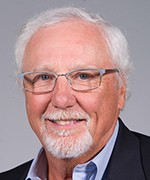
Orthodontics in the age of precision medicine
David S. Carlson
Professional Experience and Education
| 2003 | Vice President for Research and Dean, Graduate School of Biomedical Sciences, Texas A&M Health Science Center. |
|---|---|
| 1993 | Professor and Chairman, Department of Biomedical Sciences, Texas A&M University College of Dentistry |
| 1983 | Professor, Department of Orthodontic and Pediatric Dentistry, University of Michigan |
| 1978 | Assistant Professor, Department of Anatomy and Cell Biology, School of Medicine, University of Michigan |
| 1978 | Research Scientist, Center for Human Growth and Development, University of Michigan |
| 1974 | Postdoctoral Research Scholar, Department of Anatomy and Cell Biology, University of Michigan |
| 1974 | PhD Physical Anthropology, University of Massachusetts |
Honors and Awards
| 2016 | Emeritus Regents Professor, Texas A&M University |
|---|---|
| 1998 | Regents Professor, Texas A&M University |
| 1995 | Robert E. Gaylord Endowed Chair of Orthodontics, Texas A&M College of Dentistry, Texas A&M University |
| 1990 | Honorary, American Association of Orthodontists |
Research Interests
Integration of basic, applied, and clinical research on normal and abnormal development and growth of the craniofacial complex
Growth, function, and treatment of the temporomandibular joint
Development of concepts, theories, and paradigms related to craniofacial growth and form
Role of genetic and epigenetic mechanisms in normal craniofacial development, growth, and dentofacial treatment
Abstract
Understanding of the mechanisms of craniofacial development and growth have improved considerably due to advances in the fields of developmental biology and genomics as well as translational orthodontic research. Overly simplistic perceptions of a dichotomy between heredity and the environment, or function, dominated orthodontic approaches to the treatment of abnormal craniofacial growth, from significant dentofacial deformities to simpler malocclusion, throughout the Twentieth Century. This lecture will address the evolution of concepts of heredity and genomics as they relate to craniofacial growth, malocclusion, and dentofacial treatment. The lecture will conclude with a discussion of the potential offered by the approach offered by the emerging field of precision medicine for diagnosis and treatment of dentofacial deformities.
Biology in Orthodontics
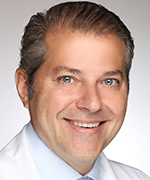
Orthodontic movement through alveolar atrophic bone
Adilson Luiz Ramos
| 1994 - 2020 | Associate Professor, State University of Maringa, Brazil |
|---|---|
| 2019 - 2020 | Director of the Brazilian Board of Orthodontics |
| 2003 - 2006 | Former Editor-in-chief of the Dental Press Journal of Orthodontics , the official publication of the Brazilian Association of Orthodontics |
| 1998 - 2001 | PhD at State University of Sao Paulo UNESP, Araraquara, Brazil |
| 1992 - 1995 | MS in Orthodontics at University of Sao Paulo USP, Bauru, Brazil |
| 1989 - 1992 | Residence Program at Craniofacial Anomalies Rehabilitation Hospital HRAC, University of Sao Paulo USP, Bauru, Brazil |
| 1995 - 2020 | Member of the Brazilian Association of Orthodontics |
|---|---|
| 1998 - 2020 | Member of the World Federation of Orthodontics |
| 1996 - 2020 | Member of the American Association of Orthodontics |
| 2019 - 2020 | Guest Member of the Angle Society of Orthodontics, North Atlantic Component |
Abstract
Orthodontic tooth movement through an alveolar atrophic ridge is a treatment alternative for improving the surrounding bone implant dimensions. Sometimes, such challenging movement is needed to close missing teeth arch spaces and to correct an occlusal discrepancy. This presentation will show some studies that discuss the advantages and side effects of such movement, as , for example, root resorption and bone dehiscence. During the presentation, clinical situations will illustrate this important orthodontic strategy, particularly in interdisciplinary treatments.
Biomechanics
no img
Relevancy of Biomechanics in Clinical Orthodontics in 2020
no img
Smart and Visible Biomechanics - Optimizing treatment mechanics based on prediction strategy for long-term tooth movement
Biomechanics
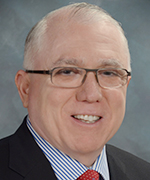
Relevancy of Biomechanics in Clinical Orthodontics in 2020
Ravindra Nanda
Professional Experience and Education
| 1964 | BDS, KGMC, Lucknow, India |
|---|---|
| 1966 | MDS, KGMC, Lucknow, India |
| 1969 | PhD, Nymegen, The Netherlands |
| 1970 | Assistant Professor, Loyola, Chicago |
| 1972 | Assistant Professor, University of Connecticut, Farmington |
| 1992-2017 | Head Department of Orthodontics, Univ. of Connecticut |
Honors and Awards
| 2009 | John Valentine Mershon Memorial Lecture, AAO, Boston |
|---|---|
| 2010 | Life time achievement Award, Univ. of Connecticu |
| 2011 | Sheldon Friel Memorial Lecture, EOS, Istanbul |
| 2017 | Orthodontic Legend award, CDABO, Orlando |
Research Interests
Biomechanics and orthodontic appliances
Clinical trials
Acceleration of tooth movement
Abstract
Practice of clinical Orthodontics has significantly changed over the last three decades. Our customary work with wires and brackets since last century now includes use of skeletal anchorage devices, orthographic surgery without pre surgical orthodontics and use of sequential plastic aligners to correct malocclusions. However we are still seeking answers to how can we accelerate orthodontic tooth movement to finish treatment sooner. Numerous commercial devices have been promoted, some with spurious claims and others with less than desirable results.
For all the existing treatment modalities and newer methods such as aligners and mini screws, there is one common denominator and that is biomechanics. Without a clear understanding of forces and moments delivered by wires or aligners via brackets or mini screws, achieving predictable results would be impossible. With the popularity of aligners and other non traditional treatment methods it even becomes more important to understand how forces work and how to prevent side effects.
Biomechanics
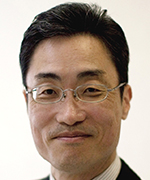
Smart and Visible Biomechanics - Optimizing treatment mechanics based on prediction strategy for long-term tooth movement
Noriaki Yoshida
Professional Experience and Education
| 1980-1986 | DDS from Nagasaki University School of Dentistry, Japan |
|---|---|
| 1990-2000 | Assistant Professor, Department of Orthodontics, Nagasaki University School of Dentistry |
| 1992-1994 | Research fellow, Department of Orthodontics and Dentofacial Orthopedics, Free University Berlin, Germany |
| 1994 | Research fellow, Humboldt University, Germany |
| 2000-2001 | Senior Assistant Professor, Department of Orthodontics, Nagasaki University School of Dentistry |
| 2005 | Visiting Professor, Orthodontics, Division of Craniofacial Sciences and Therapeutics, University of Southern California, USA |
| 2001-present | Professor and Chair, Department of Orthodontics, Nagasaki University School of Dentistry |
Honors and Awards
| 1999 | Encouragement Award, Japanese Society of Stomatognathic Function |
|---|
Research Interests
Biomechanics
Clinical application of temporary anchorage devices
Development of stomatognathic function
Abstract
This presentation will deal with biomechanical solutions for maximizing therapeutic efficiency and minimizing side effects during orthodontic treatment. Although various treatment techniques have been developed, it remains quite difficult to predict or compare actual tooth movements subsequent to the application of different treatment mechanics. Therefore, the prediction and planning of orthodontic tooth movement have been largely dependent on clinical experiences. With such a background, the demand for simulating long-term tooth movement under the various treatment mechanics has been increasing to improve therapeutic efficiency and reduce the treatment time.
We developed a simulation system of long-term orthodontic tooth movement based on a bone remodeling algorithm using the finite element method. Using this system, the optimal loading condition for achieving speedy and controllable tooth movements can be determined.
The optimal loading condition on the application of sliding mechanics in combination with power arms during space closure in an extraction case will be described. Also for loop mechanics, a simple and innovative design of closing loop, which produces an optimal force magnitude and M/F ratio for en-masse retraction, and is applicable in the 0.022-in slot system, will be introduced.
Clinical application of temporary anchorage devices combined with the above mentioned mechanics will be also discussed.
Bone Biology
no img
The Influence of Bone Density on Tooth Movement Biomechanics
no img
Bioimaging of Bone
no img
Need for Speed, An orthodontic imperative?
Bone Biology
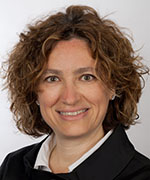
The Influence of Bone Density on Tooth Movement Biomechanics
Carlalberta Verna
Professional experience and education
| 1989 | DDS, Faculty of Medicine , School of Dentistry, University of Ferrara, Italy |
|---|---|
| 1993-1996 | PhD in preventive orthodontics, department of Orthodontics, School of Dentistry, University of Florence, Italy |
| 1996-1999 | PhD in Odontology, Section of Orthodontics, Institute of Dentistry, University of Aarhus, Denmark |
| 1999-2002 | Post-graduate degree in Orthodontics, Section of Orthodontics, Institute of Dentistry, University of Aarhus, Denmark |
| 2002-2012 | Associate Professor, Section of Orthodontics, Institute of Dentistry, University of Aarhus, Denmark |
| January 2013 - | Professor and Head Clinic for Pediatric Oral Health and Orthodontics, University Center for Dental Medicine, UZB, University of Basel, Switzerland |
Honors and Awards
Alice L. Jee Memorial Award for junior investigators. International Sun Valley Workshop on Hard Tissues, Sun Valley, Idaho, USA, 1998
W.H.B. Houston research award European Orthodontic Society, 1999
W.J.B. Houston scholarship from the European Orthodontic Society 2000-2003
Beni Solow award European Journal of Orthodontics 2004
Italian Orthodontic Society for the best scientific paper in 2006
Houston award for the best poster presentation European Orthodontic Society, 2006
Beni Solow award European Journal of Orthodontics 2009
Research interests
Biology of tooth movement, biomechanics, craniofacial anomalies
Abstract
The achievement of a planned tooth movement is the result of the interaction between variables related to the orthodontist and variables related to the patient. The orthodontist plans the individual biomechanical system in relation to the centre of resistance of one tooth or groups of teeth. It is known that the location of the centre of resistance varies according to the patients' anatomical characteristics; the anatomy of the supporting tissues and the shape of the roots. The quality of the supporting tissues in terms of bone density has seldomly been taken into consideration as potential variable that could influence the location of the centre of resistance. Surgically facilitated orthodontic tooth movement is one of the various attempts of orthodontists to influence patients' response to enhance tooth movement rate. The principle is based on the local acceleration of bone remodelling activities occurring in bone repair processes, where bone density is initially decreased. Accelerated bone turnover in animal models has shown to increase tooth movement rate and the application of a single force induces a controlled rather than an uncontrolled tipping, as would under normal bone turnover conditions. A Finite Element analysis of tooth movement after corticotomy revealed that translation in corticotomized teeth occurs at a larger M/F ratio compared to normal bone turnover. In order to achieve this, a bigger moment needs to be inserted into the wire.
Bone Biology
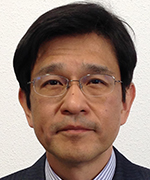
Bioimaging of Bone
Hiroshi Kamioka
Professional Experience and Education
| 2015-present | Director in Okayama University Hospital Advanced Cleft Lip and Cleft Palate Treatment Center. |
|---|---|
| 2014-present | Professor and Chair in Dept. of Orthodontics, Graduate School of Medicine, Dentistry, and Pharmaceutical Sciences, Okayama University. |
| 2005-2014 | Associate Professor in Dept. of Orthodontics, Graduate School of Medicine, Dentistry, and Pharmaceutical Sciences, Okayama University. |
| 1999-2005 | Lecturer in Dept. of Orthodontics, Okayama University Hospital |
| 1995-1998 | Post-doctoral fellow in Dept. of Anatomy, Indiana University Medical School, USA |
| 1993-1999 | Assistant Professor in Dept. of Orthodontics, Tokushima University Dental School |
Honors and Awards
| 2009 | Microscopy and Microanalysis best biological paper award for 2008, Microscopy Society of America |
|---|---|
| 2003 | Best poster award in 21st Japan Bone and Mineral Metabolism Meeting |
| 2000 | Excellent presentation award in 59th Japan Orthodontic Meeting |
Research Interests
Biological analysis of tooth movement
Abstract
In a variety of scientific fields, it is a worthwhile topic to visualize natural phenomenon. Newly developed visualizing method often leads breakthrough in the scientific fields. Especially, in the biological field, it is significant to reveal temporal-spatial response happened in the cells with visualizing molecular level phenomenon. Such visualization could provide information to understand cellular behavior to their extracellular stimulus in vivo and in vitro. Although osteocytes are the most abundant cells in bone, it has been difficult to study their biological feature because they are embedded in hard bone tissue. So, even the real 3D structure of the osteocyte was not uncovered till lately. As it is already known orthodontic tooth movement requires dramatic bone changes. Osteocytes are thought to be primary mechanosensory cells. In this presentation, we will introduce our application of confocal laser scanning microscopy, ultra-high voltage electron microscopy and focused ion beam scanning electric microscopy to reveal the bone microstructure and discuss the mechanosensitivity of the cells in bone.
Bone Biology
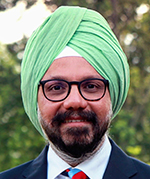
Need for Speed, An orthodontic imperative?
Sarandeep Huja
Dr. Sarandeep S. Huja, DDS, PhD currently serves as the Dean, of the James B. Edwards College of Dental Medicine and Professor, Department of Orthodontics Medical University of South Carolina
Dr. Huja initially received his dental (1987) and orthodontic (1992) training from the Government Dental College and Hospital, Bombay. From 1993-2001, he was associated with three US institutions, receiving his MS (1995) from Marquette University, Milwaukee, his PhD (1999) and Orthodontic Certificate (1999) from Indiana University, Indianapolis and his DDS (2001) from University of Nebraska Medical Center College of Dentistry, Lincoln. His PhD was conducted under the mentorship of Dr. David Burr from the Department of Anatomy and Dr. W. Eugene Roberts in Orthodontics from Indiana University. From 2001-2011, he was a faculty at the Ohio State University working under the mentorship of Dr. Katherine Vig, a world renowned orthodontist and educator. In 2011 he moved the University of Kentucky as Division Chief of Orthodontics. In 2016 he was appointed the Program Director of Orthodontics and Associate Dean for Faculty and Student Development and Graduate Studies at the University of Kentucky.
He has served as advisor for both PhD and Masters graduate students and has taught Orthodontics and Bone Biology to dental and graduate students. He has the Principle Investigator on grants from the NIDCR, NIH, Corporate and Foundations. His research seeks to understand bone remodeling, osteoclast biology and adaptation to physical forces. His students have been recognized with national awards on projects related to tooth movement and implant adaptation biology. Dr. Huja is also the recipient of the prestigious B.F. Dewel Memorial Biomedical Research Award, from the American Association of Orthodontists Foundation.
Dr. Huja is a member of the Midwest component of the E.H. Angle Society and is a Diplomate of the American Board of Orthodontics, and he also maintains an intramural faculty practice.
He is widely published in the field of Bone Biology and Orthodontics and is a frequent speaker at national and international meetings. He serves as the Vice Chair of the Planning and Award Review Committee of the American Association of Orthodontist Foundation and has previously served as an orthodontic site visitor for Commission on Dental Accreditation. He is an Alumnus of the ADEA Leadership Institute serving as the inaugural ADEA/ADEAGies Foundation Drs. Connie L. and Richard R. Drisko Scholar. He also served as the President of the Craniofacial Biology Group of the International Association of Dental Research.
Abstract
Many methods to expedite orthodontic tooth movement have been developed with little promise for current practice. However, the research has led to an affirmation that the benefits of reduction in treatment time is a worthy goal. We will describe and compare animal models to study tooth movement with the focus on tissue level bone biology and relate this fundamental information to tooth movement in humans and clinical practice. Forces for orthodontic tooth movement remain undefined. We will expand on the need to understand the force and engineering stress to produce optimal tooth movements and thus expediting/optimizing tooth movement. In the future, orthodontic tooth movement are likely to be individualize in a patient based on tooth root surface area, anchorage segments, desirable versus undesirable tooth movements, besides gender/age thereby producing direct path and personalized tooth movements for each patient. The participant will thus be exposed to most recent concepts and evidence based methods to achieving orthodontic tooth movements.
Edgewise Appliance
no img
Is there any difference between conventional, passive self-ligating and active self-ligating brackets? A systematic review of the literature and network meta-analysis.
no img
Revolution and evolution in orthodontic treatment during the last 4 decades
Edgewise Appliance
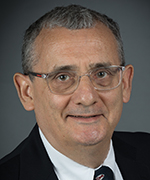
Is there any difference between conventional, passive self-ligating and active self-ligating brackets? A systematic review of the literature and network meta-analysis.
Yves G Bolender
Professional Experience and Education
| 2017 | Chairman of the Department of Dento-facial Orthopedics, Faculty of Dental Surgery, University of Strasbourg, France. |
|---|---|
| 2014 | Director of the post-doctoral program in Orthodontics, Faculty of Dental Surgery, University of Strasbourg, France. |
| 2012-present | Associate Professor, Department of Dento-Facial Orthopedics, Faculty of Dental Surgery, University of Strasbourg, France. |
| 2008-2012 | Associate Professor, Department of Dento-Facial Orthopedics, Faculty of Odontology, University of Lorraine, Nancy, France. |
| 2008 | Full member of the Eastern Component of the Edward H. Angle Society of Orthodontists. |
| 2008 | PhD in Materials Science, Faculty of Science, University of Lorraine, Nancy, France. |
| 1988 | Master of Medical Sciences, Harvard Medical School, Boston, USA. |
| 1988 | Certificate in Orthodontics, Harvard School of Dental Medicine, Forsyth Dental Center, Boston, USA. |
| 1983 | DDS, Faculty of Dental Surgery, University of Strasbourg, France. |
Honors and Awards
| 2016 | Brainerd F. Swain Award of Excellence, Eastern Component of the Edward H. Angle Society of Orthodontists, Boston, MA meeting. |
|---|---|
| 2009 | Brainerd F. Swain Award of Excellence, Eastern Component of the Edward H. Angle Society of Orthodontists, Newport, RI meeting. |
| 2003 | Diplomate of the American Board of Orthodontics. |
Research Interests
Evidence-based orthodontics. Materials science. Esthetics.
Abstract
INTRODUCTION : Self-ligating brackets are still being actively promoted by their respective distributors. What are the advantages to use these brackets in light of the existing literature ?
AIM: This review aims to test the null hypothesis that there is no difference in treatment efficiency between therapies undertaken with conventional, passive self-ligating or active self-ligating brackets. Most published reviews have pooled passive and active self-ligating brackets together, and compared the amalgamated self-ligating brackets to conventional brackets. By contrast this network meta-analysis compares two by two the three different bracket types: conventional, passive self-ligating and active self-ligating brackets.
MATERIAL AND METHOD:
An electronic search was performed in 3 databases (Pubmed, Web of Science, Cochrane Library) from their origin up to September 2018. Additional references were hand searched. Search was strictly restricted to randomized controlled trials and split-mouth design studies. A network meta-analysis was implemented to obtain multiple comparisons between therapies undertaken with the 3 bracket types. 51 variables which investigated the following items were analyzed: treatment duration, number of visits, alignment efficiency, rate of space closure, anchorage loss, perception of discomfort during the initial phase of treatment, pain experience during wire insertion or removal, time to ligate in or to untie an archwire, bonding failures, occlusal indices, transverse arch dimensional changes, incisor position modification with and without extractions, , root resorption, periodontal outcomes and finally oral health-related quality of life.
Edgewise Appliance
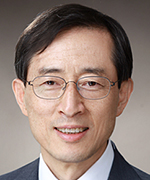
Revolution & evolution in my orthodontic treatment during the last 4 decades
Hee-Moon Kyung
| 1974,03-1980,02 | College of Dentistry, Kyungpook National University, Daegu, Korea |
|---|---|
| 1980,03-1983,02 | Orthodontic training, Infirmary Hospital of Dental College, Kyungpook Natl. University |
| 1986.05-present | Fulltime Instructor & Professor, Dental School, Kyungpook Natl. Univ. |
| 1991,04-1992,03 | Visiting Professor, Department of Orthodontics, Faculty of Dentistry, Osaka University, Japan |
| 1996.01-1997.12 | Visiting & Clinical Associate Professor, Department of Orthodontics, Faculty of Dentistry, The University of British Columbia, Canada |
| 2001.1-2003.1 | Dean, College of Dentistry, Kyungpook National University |
| 2003.10-present | Founding member of World Society of Lingual Orthodontics |
| 2007.11-2010.04 | President, Korean Association of Lingual Orthodontists |
| 2010.04-present | Active member of Angle Society (East Branch) |
| 2015.07-2017.07 | President of World Society of Lingual Orthodontics |
| 2016.04-2018.03 | President of Korean Association of Orthodontists |
Abstract
It has passed almost 4 decades since I made the first step into the field of orthodontics.The contemporary orthodontics was driven by Dr. Angle, who invented ribbonwise bracket and edgewise beracket, and advocated non-extraction treatment modility. Ironically, unlike most of Dr. Angle"s followers, Tweed and Begg, his outstanding two disciples, supported extraction treatment modility. Tweed succeeded to edgewise techniques, while Begg developed Begg thehnique inherited ribbonarch appliance in his home country in Australia. These two treatment mechanics have been mainstreams through orthodontic treatment history. Edgewise appliances, however, have become a general trend until now. Recent major advances in contemporary orthodontics are including direct bonding system which made lingual techniques possible, invisible aligner technique, microimplants, and digital technique including CBCT. Esthetic bracket, straight wire appliance, self-ligation bracket, customized bracket and indirect bonding thchnique are also evolving as new approaches. Further, development of resilient archwires such as Nitinol, TMA, and NiTi definitely contributed to successful orthodontic treatment . Heat Induction typodont system( HITS) invented by the speaker might be one of evolutionary tools for educating orthodontic treatment. Orthodontic treatment takes from several months to few years. Understanding biomechanics ahead of actual practice, HITS would be very useful device for clinical judgement in simulation alternatives or new ideas. Today I would like to share my experiences in orthodontic education and treatment during the last 4 decades, and discuss the future of the orthodontics.
Edgewise Appliance
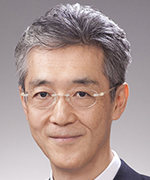
Advancement of the Edgewise appliances: do they cover the natural human diversity?
Kazuhito Arai
Professional Experience and Education
| 2009 - Present | Professor and Chair, School of Dentistry, Department of Orthodontics, Nippon Dental University |
|---|---|
| 2008 | Associate Professor, School of Dentistry, Department of Orthodontics, Nippon Dental University |
| 2000 - 2001 | Visiting Assistant Professor, Department of Growth and Development (Orthodontics), Harvard School of Dental Medicine |
| 1993 | Assistant Professor, School of Dentistry, Department of Orthodontics, Nippon Dental University |
| 1993 | DDSc (Orthodontics), Graduate School of Dentistry, the Nippon Dental University |
| 1987 | DDS, School of Dentistry, the Nippon Dental University |
Honors and Awards
| 2019 | Best reviewer of the American Journal of Orthodontics and Dentofacial Orthopedics in 2018 |
|---|---|
| 2018 | Article Award of Japanese Orthodontic Society, |
| 2007 | Eastern Component of the Angle Society of Orthodontists, Second Best Paper for Barney Swain Award |
| 2005 | Eastern Component of the Angle Society of Orthodontists, Second Best Paper for Barney Swain Award |
Abstract
How do you select an edgewise appliance for your patient? Since Edward H. Angle invented the Edgewise appliance in the 1920s, declaring it "The latest and best in orthodontic mechanism", advances in the design have yet to be exhausted. Reports in the literature and some commercial advertisements highlight significant differences in craniofacial morphology, including tooth shape, between populations in different countries or geographic regions. This lecture presents the history of preadjusted bracket and preformed archwire design based on comparisons between the manufactured variation and natural diversity of human dentition in Japan and other counties.
<Learning objectives>
- Understand that individual variation is more important than ethnicity in terms of preadjusted edgewise appliance design.
- Recognize that manufactured variation in preadjusted edgewise appliance is not based on biological research.
Class II Treatment
no img
Patient-dependent factors for the efficient treatment of Class II malocclusion
no img
Revisiting Class II, Division 1 Malocclusion
Class II Treatment
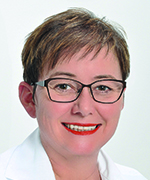
Class II Tx: success, stability and health effects
Sabine Ruf
Professional experience and Education
| since 2005 | Professor, Chair and Clinical Director for Orthodontics Justus-Liebig-University Giessen |
|---|---|
| 2002-2005 | Professor and Chair for Orthodontics University Bern, Switzerland |
| 2001 | Habilitation (Dr. med. dent. Habil.) |
| 1995 | Certified Orthodontist |
| 1994 | Doctorate (Dr. med. dent.) awarded |
| 1986-1991 | Undergraduate dental education Justus-Liebig-University Giessen |
| since 2017 | Elected Member of the Scientific Committee of the Angle Society of Europe |
| since 2013 | Deputy Executive Director Dental School Justus-Liebig-University Giessen |
| 2009 | Recognition as Active Member of the Angle Society of Europe |
| since 2007 | Council Member German Orthodontic Society |
Awards
- Beni Solow Award European Orthodontic Society - Seniorautor (2019)
- Best Lecture Award German Society Computerized Dentistry - Coauthor (2018)
- Best Poster Award German Orthodontic Society (Clinical research)- Seniorauthor (2018)
- Best Paper Award German Orthodontic Society - Seniorauthor (2018)
- Young Investigator Award - German Orthodontic Society - Seniorauthor (2016)
- Young Investigator Award - German Orthodontic Society - Seniorauthor (2011)
- Best Paper Award German Orthodontic Society - Seniorauthor (2008)
- Best Poster Award European Orthodontic Society - Coauthor (2006)
- Young Investigator Award SGDMFR and ARö" - Seniorauthor (2006)
- Best Poster Award European Orthodontic Society - Seniorauthor (2001)
- Sixth S.I.D.O World Award Italian Orthodontic Society (1997)
- W.J.B. Houston Research Award European Orthodontic Society (1997)
Main areas of interest
- Dentofacial Orthopedics
- Craniomandibular function and dysfunction
- Stability and Relapse
- Oral health and Orthodontics
- Orthodontic Healthcare Research
- Interactions general medicine and Orthodontics
Abstract
Class II Tx: success, stability and health effects
Class II malocclusions are frequent and multiple treatment techniques have been described. While data on dentoskeletal effects are abundant in literature, success rates have seldom been analyzed despite the fact, that possible success is the basis for any treatment decision a patient. Patients also become increasingly aware of the fact that orthodontic treatments have a relapse potential and in turn expect evidence-based estimates for the stability of their treatment. Furthermore, there is also increasing demand from our patients with respect to specific information on the general and/or oral health effects of orthodontic treatment.
The current lecture will give an overview of the current evidence available for the three above mentioned patient information demands (success, stability and health effects).
Attendees of this lecture will be able to:
-describe and compare the success rates of different Class II treatment approaches
-outline the long-term effects and stability of Class II treatment
-estimate the health benefits of Class II treatment
Class II Treatment
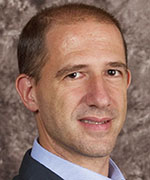
Patient-dependent factors for the efficient treatment of Class II malocclusion
Lorenzo Franchi
Professional Experience and Education
| 2019- | Dean of the School of Dentistry, University of Florence |
|---|---|
| 2018-2019 | Associate Professor, Section of Dentistry, Department of Experimental and Clinical Medicine, The University of Florence, Florence, Italy |
| 2006-2018 | Assistant Professor, Section of Dentistry, Department of Surgery and Translational Medicine, The University of Florence, Florence, Italy |
| 2001-2019 | T.M. Graber Visiting Scholar, Department of Orthodontics and Pediatric Dentistry, The University of Michigan, Ann Arbor, MI, USA |
Honors and Awards
| 2003 | Edward Angle and Angle Society Award for Excellence in Orthodontic Research, Best Scientific Paper 2001-03 - Baccetti T., Franchi L., Cameron C.G., McNamara J. A. Jr. Treatment timing for rapid maxillary expansion. The Angle Orthodontist, vol. 71, n.5, pp. 343-350, 2001. |
|---|---|
| 2006 | Best Table Clinic, Joseph E. Johnson Table Clinic Award 106 Annual Meeting of the American Association of Orthodontists, Las Vegas, USA, 5-9 May, 2006. |
| 2011 | WJB Houston Award for the Best oral research presentation (Co-Author), European Orthodontic Society, Istanbul, June 2011 |
| 2014 | WJB Houston Award for the Best oral research presentation (Co-Author), European Orthodontic Society, Warsaw, June 2014 |
| 2016 | Dr Stephen Seward Lecture titled Pathways of Effectiveness in the Orthopedic Treatment of Class II malocclusion, 25th Australian Orthodontic Congress, Melbourne, Australia, February 20th, 2016. |
Research Interests
Dentofacial Orthopedics
Growth modification
Biomechanics
Abstract
This lecture will illustrate patient-related factors that potentially can improve the efficacy of Class II treatment. Two such factors will be discussed: 1) timing of treatment, defined on the basis of reliable indicators of individual skeletal maturity, and 2) individual patient responsiveness.
Functional appliances used for the treatment of Class II malocclusion are effective in altering short-and long-term mandibular growth and mandibular sagittal position if active treatment includes the pubertal growth spurt. To predict individual patient responsiveness, mandibular morphology should be evaluated at puberty. Good responders to functional jaw orthopedics (FJO) for the treatment of Class II malocclusion associated with mandibular retrusion are characterized by a small mandibular angle.
Class II Treatment
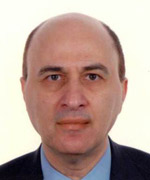
Revisiting Class II, Division 1 Malocclusion
Joseph Ghafari
ABBREVIATED BIOGRAPHICAL SKETCH
Dr. Joseph Ghafari earned dental degrees from the Université Saint Joseph (Lebanon) and the University of Pennsylvania (U/PA, USA), and orthodontic education at Harvard University/Forsyth Dental Center. He is a former Professor and presently Adjunct Professor of Orthodontics at U/PA. He is Professor and Founding Head of the Division of Orthodontics and Dentofacial Orthopedics, American University of Beirut. A Diplomate of the American Board of Orthodontics, and past or present President of national and international associations, he has a rich portfolio of research, publications, and invited lectures worldwide. He has received awards and recognitions from various professional organizations and academic institutions.
EXTENDED BIOGRAPHICAL SKETCH
Dr. Ghafari earned dental degrees from the Université Saint Joseph, Beirut, Lebanon, and the University of Pennsylvania School of Dental Medicine, and orthodontic education at the Harvard School of Dental Medicine/Forsyth Dental Center. He rose to the rank of Professor at the University of Pennsylvania. He is Professor and Founding Head of the Division of Orthodontics and Dentofacial Orthopedics at the American University of Beirut and Adjunct Professor of Orthodontics at the University of Pennsylvania. He also founded the postgraduate orthodontic program at the Lebanese University dental school.
Among a rich array of research projects, Dr. Ghafari was the Principal Investigator of a prospective clinical trial supported by the National Institute of Dental and Craniofacial Research, in which alternative approaches are compared in the early treatment of Class II, Division 1 malocclusion. This field remains a centerpiece of his research activities, expanding into component analysis of this and other malocclusions (notably Class III), the development of which was linked to functional problems in childhood. The outcomes of these investigations relate to diagnosis, timing and assessment of treatment, and the recognition of various phenotypes within the same malocclusion type that respond differently to treatment.
In addition to the clinical track, Dr. Ghafari has been involved in biological research through a range of projects related to anatomy and molecular biology including genetic studies (e.g. identification of candidate genes for mandibular macrognathism and retrognathism and for hypodontia) and projects on stem cells related to bone and cartilage. In another track focusing on tooth movement, Dr. Ghafari and his co-workers employed advanced schemes using finite element modeling and analysis of various orthodontic modalities that may not be investigated directly in the mouth. He developed this line of research to include, for the first time, the assessment of individual variation derived from human cadaver material properties. Also, in a series of epidemiological studies, Dr. Ghafari and associates have demonstrated the perception of oral health as part of total health by parents of various socioeconomic backgrounds. Investigations on malocclusion indices yielded practical recommendations for epidemiologic assessment and quality assurance.
In all the above tracks, Dr. Ghafari has promoted interdisciplinary and interprofessional research, namely with basic medical sciences, engineering, public health, nutrition, and psychology.
Most of Dr. Ghafari’s numerous (over 100) publications report primary research data in American and international journals and books chapters; he is also the co-author of the book Orthodontics at Crossroads. Dr. Ghafari is the proponent and former Editor of Short Communications of the American Journal of Orthodontics and Dentofacial Orthopedics. He is a member of the Editorial Board of the Journal of the American Dental Association, the Editorial Director of this journal’s Middle East Edition, and on the Editorial Board of Seminars in Orthodontics.
Dr. Ghafari is a Diplomate of the American Board of Orthodontics and a member of many national and international associations, including the American Association of Orthodontists, The Edward H. Angle Society of Orthodontists (Eastern Component), and fellowship in the American and International Colleges of Dentists. He served as President of the Craniofacial Biology Group of the International Association for Dental Research, President of the Greater Philadelphia Society of Orthodontists, President of the Harvard Society for the Advancement of Orthodontics, and he is the founding President of the Lebanese section of the IADR, the Lebanon Association for Dentofacial Research.
Dr. Ghafari received academic and professional recognitions from various organizations and institutions, including an honorary MA degree and the Earl Banks Hoyt Award from the University of Pennsylvania, the Vincent De Angelis Award from the Harvard Society for the Advancement of Orthodontics, and the Brainerd F. Swain Award of Excellence from the Edward Angle Society, Eastern Component.
ABSTRACT
“Personalized” rather than “generic” treatment of Class II, Division 1 requires consideration because of various constitutional and therapeutic limitations. Because of variable genetic and environmental components of individual malocclusion related to dentoskeletal and/or soft tissue profile, some Class II phenotypes may not be transferred through treatment to a Class I phenotype.
Class III Treatment
no img
Miniplate anchored class III orthopedics with control of maxillary and mandibular rotations
no img
Bone-Anchored Maxillary Protraction in Cleft Patients with Class III malocclusion
no img
Is age a limiting factor in adult orthopedics for class III and asymmetry? Quest for suture biology
Class III Treatment
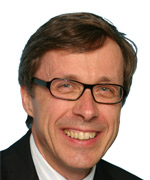
Miniplate anchored class III orthopedics with control of maxillary and mandibular rotations
Hugo De Clerck
Departement of Orthodontics, University of North Carolina at Chapel Hill, US
Miniplates resist better high discontinuous forces than miniscrews do. Therefore they can be used for intermaxillary orthopedic traction. Class III elastics can be fixed between Bollard anchors on the buttress of the maxilla and in the canine region of the mandible in young growing patients. By stretching of the circummaxillary sutures, the forward growth of the maxilla can be increased, resulting in an anterior rotation of the zygomatico-maxillary complex. Thank s to the sk eletal anchorage, the amount of protraction of the midface is about double of the amount of protraction obtained with face mask . However, new evidence shows that also the chin can be moved back ward without posterior rotation of the mandible, thank s to modeling processes at the gonial angle. This results in a modification of the shape rather than the size of the lower jaw. Furthermore, modeling at the glenoid fossa repositions the mandible slightly posteriorly. The combination of growth modifications of the maxilla and the mandible may result in an important improvement of facial esthetics, also in cleft patients. Successful and stable orthopedics depend on good control of maxillary and mandibular rotations.
Class III Treatment
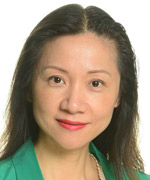
Bone-Anchored Maxillary Protraction in Cleft Patients with Class III malocclusion
Prof. Yijin Ren
Professional Experience and education
| Since 2007 | Full professor, Medical Faculty, University of Groningen, The Netherlands |
|---|---|
| Since 2008 | Department head, Program director, Dept Orthodontics, University Medical Centre Groningen, The Netherlands |
| Since 2012 | Principal investigator, W.J.Kolff Institute for Biomedical Engineering & Materials Science, University of Groningen, The Netherlands |
| Since 2015 | Director, W.J.Kolff Institute for Biomedical Engineering and Materials Science, |
| Since 2019 | Executive MBA, London Business School, London UK |
| 2019-2024 | Associate editor European Journal of Orthodontics |
|---|---|
| 2018-2023 | Editorial board Progress in Orthodontics |
| 2018-2023 | Editorial board member Progress in Orthodontics |
| 2016-2019 | Editorial board member Colloids and Surfaces B: Biointerfaces |
| 2016-2021 | International Editorial board of Chinese Journal of Orthodontics |
| 2013-2018 | Associate editor Progress in Orthodontics |
| 2007-2027 | International Editorial Board of Shanghai Journal of Stomatology |
| 2010-2017 | Editorial board member The Open Dentistry Journal |
| 2010-2019 | Editorial board member European Journal of Orthodontics |
Honors and Awards
| 2003 | Best 5-year orthodontic paper Award, Dutch Orthodontic Society |
|---|---|
| 2007 | Distinguished Scientist Award - Young Investigator Award, IADR |
| 2007- | Visiting professorship, Wuhan University Dental School |
| 2007 | Best paper of the year (co-author), Dutch Journal of Dentistry |
| 2010 | Outstanding Alumni Award , Wuhan University |
| 2008-2009 | Best Poster award (co-author), by European Orthodontic Society |
| 2012 | Research award (co-author) by Densply-Lomberg |
| 2007, 2008, 2009, 2013 | |
| Best Poster awards (co-author), European orthodontic Society | |
| 2014 | Luo Jia Distinguished Professor by Wuhan University |
| 2016 | Paper of the year - Award for societal impact (co-author), W.J.Kolff Institute of Biomedical Engineering & Materials Science |
| 2019 | The VBM award (co-author), Society for the Biology of the Mouth) |
Research Interests
3D imaging and digital workflow in orthodontics
Oral bacterial biofilms and dental/orthodontic interventions
Mechanisms and solutions for biomaterial associated infection
Development of smart (nano) biomaterials for customized clinical applications
Abstract
Here we report a prospective controlled study evaluating the effect of bone-anchored maxillary protraction therapy (BAMP) on the skeletal and airway changes in cleft children with Class III malocclusion using CBCT-derived 3D surface models. Thirty-five unilateral complete cleft lip and palate patients with maxillary deficiency were included. CBCT scans were obtained from each patient before BAMP, 1.5 years and 3.5 years after. Age-matched untreated groups including both cleft subjects and non-cleft subjects served as controls. Majority of the patients showed improved lip projection towards more convex facial profile. The most significant skeletal changes on 3D surface models were observed at the zygomatic regions and at the maxillary complex in favor of the Class III treatment in cleft patients with maxillary deficiency. In addition, significant volumetric increase of the total airway and nasopharynx volumes were observed to a level comparable to a non-cleft control group with a skeletal Class I or mild Class II relationship. Taking into consideration of the effect of normal growth, BAMP can be recommended as an effective therapy for cleft lip and palate patients with favorable skeletal outcome and without impeding development of the airway.
Class III Treatment
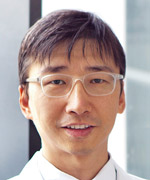
Is age a limiting factor in adult orthopedics for class III and asymmetry? Quest for suture biology
Kee-Joon Lee
Abstract
Transverse discrepancy is a common skeletal problem which necessitates radical orthopedic correction. The orthodontic envelope of discrepancy is reportedly narrow in the transverse direction, which is why surgically assisted palatal expansion is recommended particularly in grown-up patients. Recently a number of maxillary expanders have been introduced including bone-borne and tooth-and-bone-borne expanders (MARPE). Nonetheless, the expansion modalities have been controversial, due to the lack of understanding on suture biology. Latest findings on the characteristics of craniofacial sutures reveal clues for some critical points, such as speed of expansion, maximum possible age for success of orthopedic expansion, failure rate and optimal expander design etc., along with demonstration of nonsurgical correction of various skeletal problems including Class III and asymmetry
CV
Dr. Kee Joon Lee is the chairman of the Department of Orthodontics, Yonsei University College of Dentistry, Seoul, Korea. He received DDS and PhD degree from Graduate school, College of Dentistry, Yonsei University. He completed the orthodontics specialty training in Yonsei University. He was a visiting scholar at the Department of Biochemistry, University of Pennsylvania School of Dental Medicine from 2002 through 2004 and at the Division of Plastic Surgery, the Children’s Hospital of Philadelphia from 2010 to 2011. He was an adjunct professor at the Department of Orthodontics, University of Pennsylvania between 2016 and 2019. He has contributed many book chapters on biomechanics of miniscrew driven orthodontics, non-extraction treatment in adults, latest lingual orthodontic mechanics and surgery first approached using TADs. He is the first who demonstrated the miniscrew assisted rapid palatal expander (MARPE) for adults in AJODO, which was cited by many other authors. He has published many articles and case reports regarding the treatment of non-eruption, and total arch movement for hyperdivergent face in orthodontic journals including cover issues in AJODO. His fields in research include clinical biomechanics regarding TADs application and the suture and bone responses to orthodontic stimulus. He has served as a reviewer in major orthodontic journals, including AJODO, Angle Orthodontists and European Journal of Orthodontics. He has been invited to many international orthodontic conferences around the world.
Professional experience and education
2013- Professor, Department of Orthodontics, College of Dentistry, Yonsei University
2010-2011 Visiting scholar, Division of Plastic and Reconstructive Surgery, The Children’s Hospital of Philadelphia
2010-2011, 2016-2019 Adjunct professor, University of Pennsylvania
2010-2011 Adjunct professor, Temple University
2008-2013 Associate professor, Yonsei University
2004-2008 Assistant professor, Yonsei University
2002-2004 Visiting scholar, Department of Biochemistry, School of Dental Medicine, University of Pennsylvania
1997-2004 Graduate school, College of Dentistry, Yonsei University (PhD)
1998-2001 Medical officer, ROK military hospital
1999-2000 United Nations Mission in Western Sahara
1994-1998 Intern & Resident Department of Orthodontics Yonsei University
Honors and awards
2016 Fu Minkui APOS Trends Award for best clinical article, 10th Asian Pacific Orthodontic Conference
2012 Excellent exhibition award, 71st Annual Meeting of Japanese Orthodontic Society
Research Interests
Orthodontic biomechanics using finite element analysis Suture biology applied to adult orthopedics
Cleft Lip and Palate
no img
Breakthroughs in Understanding Cleft Lip and Palate: Implications for Treatment and for Orthodontics
no img
Orthodontists central to health care in cleft lip and palate
no img
Regenerative medicine and orthodontic treatment for cleft lip and palate children
Cleft Lip and Palate
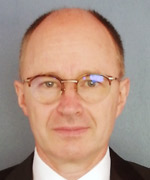
Breakthroughs in Understanding Cleft Lip and Palate: Implications for Treatment and for Orthodontics
David P. Rice
University of Helsink i and Helsink i University Hospital.
In this talk , I will present some of the dramatic advances that have shaped our understanding of how the facial processes develop and our current k nowledge of the causes of cleft lip and palate. I will describe the normal development of the craniofacial region including the lips and palate emphasising the critical stages and the k ey regulatory mechanisms that can go wrong and result in a craniofacial deformity.
I will present research findings from my own lab that focus on the role of the epithelium during early morphogenesis of the facial processes and show how proper function of the adherens junctions between cells is critical for normal development.
I will also describe some of the seemingly insurmountable limitations of correcting the root causes of developmental abnormalities that occur before birth, but also how understanding the aetiology and characteristics of a developmental condition can be of great benefit to patients. This talk will be interesting to both orthodontic clinicians as well as the most committed craniofacial researchers.
Cleft Lip and Palate
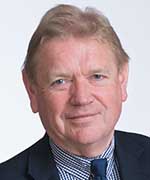
Orthodontists central to health care in cleft lip and palate
Jonathan R. Sandy
Professional Experience and Education
| 2014 to 2019 | Dean of Medicine, Dentistry and Veterinary Sciences, Faculty of Health Sciences, University of Bristol. |
|---|---|
| 2007 to 2014 | Head of Bristol Dental School, University of Bristol. |
| 1991 to 2020 | Consultant Senior Lecturer, Reader, Professor in Orthodontics, Bristol Dental School, University of Bristol. |
| 1988 to1991 | Post-Doctoral research scientist, Biochemistry Department University of Cambridge. |
| 1985 to 1988 | PhD, Dental Institute, University of London, Eastman Dental Hospital. |
| 1979 to 1985 | Orthodontic training, Dental Institute, University of London, Eastman Dental Hospital. |
| 1972 to 1976 | Undergraduate dental training, Kings College Dental School, University of London |
Honors and Awards
| 2007 | FGDP Fellowship Ad Eundem, Royal College of Surgeons of England |
|---|---|
| 2006 | Northcroft Memorial Lecturer, British Orthodontic Society |
| 2005 | The Clifford Ballard Memorial Lecture, British Orthodontic Society |
| 2005 | Faculty Teaching & Learning Prize, University of Bristol |
| 2005 | British Orthodontic Society Distinction Award |
| 2001 | King James IV Professorship, Royal College of Surgeons of Edinburgh |
| 2001 | Charles Tomes Lecture, Royal College of Surgeons of England |
| 1998 | Fellowship of the Academy of Medical Sciences |
| 1992 | Colyer Prize, Royal Society of Medicine |
| 1990 | Chapman Prize British Society for the Study of Orthodontics |
| 1985 | Medical Research Council Research Training Fellowship for 3 years |
| 1984 | Association of University Teachers in Orthodontics Research Prize |
Research interests
My research interests are centred around children born with orofacial clefting. I supported the National Institute for Health Research funded programme, Cleft Care UK, where we evaluated the impact of the centralisation of cleft services following the recommendations made by the Clinical Standards Advisory Group CSAG in 1998. I lead the Scar Free Foundation birth cohort gene backed study known as the Cleft Collective.
Abstract
The care of children born with a cleft lip and palate requires multidisciplinary care from a wide range of healthcare professionals and arguably, as this is a repairable structural anomaly, the surgeons (from whatever parent discipline) would be expected to be pivotal in organising healthcare of these children.
It is the orthodontists who have had influence in how changes in service and research can be used to improve outcomes with clear objective evidence to inform care configurations. In the United Kingdom (UK) this evolved from early work by Mike Mars in Great Ormond Street where he identified how craniofacial growth and dento-alveolar relationships are influenced in oro-facial clefting and by surgical treatment. In conjunction with Gunvor Semb from Oslo he developed measures of dento-alveolar relations (the GOSLON Index) which enabled surgical outcomes to be assessed by proxy. This was one of the measures used in the seminal six centre Eurocleft study led by Bill Shaw and the outcomes of this (where the two UK centres consistently had the worst results) informed the need for a review of cleft services in the UK. Using research from Manchester and Bristol, the Clinical Standards Advisory Group study published a report in 1998 and cleft services in the UK were centralised over several years. In a follow up study, the impact of this centralisation has yielded significant changes and improvements in overall cleft care in the UK and this has also enabled further research opportunities for clinical and genetic research.
Cleft Lip and Palate
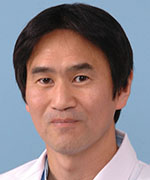
Regenerative medicine and orthodontic treatment for cleft lip and palate children
Naoto Suda
| 2010-present | Professor, Division of Orthodontics, Department of Human Development and Fostering, Meikai University School of Dentistry |
|---|---|
| 2005-2010 | Lecturer, Maxillofacial Orthognathics, Graduate School, Tokyo Medical and Dental University |
| 1998-2004 | Assistant Professor, Maxillofacial Orthognathics, Graduate School, Tokyo Medical and Dental University |
| 1996-1997 | Research Fellow of the Japan Society for the Promotion of Science |
| 1993-1995 | Visiting Academics, St. Vincent Institute of Medical Research, Melbourne University |
| 1988-1992 | Graduate School, Tokyo Medical and Dental University (Ph.D) |
| 1982-1988 | Faculty of Dentistry, Hokkaido University |
Abstract
Cleft lip and palate (CLP) causes various morphological and functional problems in esthetics of nose and lip, feeding, speech and occlusion. Among them, correction of occlusion requires long and comprehensive intervention. It is important to minimize the burden of orthodontic treatment, together with providing successful outcome for patients with CLP. The condition of intermaxillary relation, maxillary arch form, and normal tooth eruption are all related to the difficulty of orthodontic correction. A tight collaboration of orthodontists with other specialists in related fields is essential to reduce the burden of CLP children.
The regular treatment protocol in our area is to perform Millard-type gingivoperiosteoplasty (GPP) together with cheiloplasty at 3-6 months old after presurgical infant orthopedics using passive plate. Furlow palatoplasty was performed at 12-18 months old. Early alveolar closure by GPP can enable the normal maxillary arch form with integrated alveolus, and avoid performing secondary bone graft. However, labio-lingual width and alveolar height are insufficient in some cases. Regenerative medicine using the mesenchymal stem cells (MSCs) is expected as a useful strategy to increase bone bridge formation. We isolated MSCs from human umbilical cord and transplanted with hydroxyapatite and collagen into the animal model of alveolar cleft. The human umbilical cord derived MSCs could induce successful bone bridge formation in this model.
In this presentation, some possible attempts are going to be discussed to reduce the burden of orthodontic treatment for CLP children.
Craniofacial Growth and Disorders
no img
Mechanical stress response of chondrocytes during early development of cartilage
no img
Mechanobehavior to predict temporomandibular joint growth and degeneration
no img
The management of craniofacial anomalies - 30 years' experience of the orthodontic perspective
Craniofacial Growth
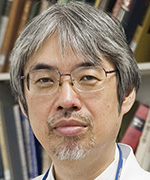
Mechanical stress response of chondrocytes during early development of cartilage
Ichiro Takahashi
Professional Experience and Education
| 2009-present | Professor and Chair, Section of Orthodontics and Dentofacial Orthopedics Kyushu University Faculty of Dental Science |
|---|---|
| 2011-2019 | Vice-dean, Kyushu University Faculty of Dental Science, |
| 2007-2009 | Associate Professor, Division of Orthodontics and Dentofacial Orthopedics, Graduate School of Dentistry, Tohoku University |
| 2003-2007 | Assistant Professor, Division of Orthodontics and Dentofacial Orthopedics, Graduate School of Dentistry, Tohoku University |
| 1998-2003 | Research Associate, Division of Orthodontics, Graduate School of Dentistry, Tohoku University |
| 1996-1998 | Visiting Research Fellow, Craniofacial Development Section, NIAMS/NIH |
| 1992-1996 | Research Associate, Department of Orthodontics, School of Dentistry, Tohoku University |
| 1988-1992 | PhD, Graduate School of Dentistry, Tohoku University |
| 1982-1988 | DDS, School of Dentistry, Tohoku University |
Research Interests
- Temporomandibular joint morphogenesis
- Mechanical stress responses of cartilages and chondrocytes
- Tooth movement and periodontal ligament
- Craniofacial developmental biology
- Biomaterials in bone tissue
- Education in Orthodontics.
Abstract
Scientific background of orthodontic-orthopedic treatment for skeletal malocclusion during growing period is one of the important issues to be addressed. Mandibular condylar cartilage (MCC) is the major growing cite of mandible by endochondral bone formation. We have been performing series of experiments to analyze the cellular response of differentiating chondrocyte to compressive and tensional stress loading. In the first experiment, electrical stimulation of lateral pterygoid muscle inhibited the chondrogenic differentiation of mesenchymal cells in the posterior area of MCC in growing rats. Since distribution of mechanicals stress in temporomandibular joints was unclear, we employed midpalatal suture cartilage (MSC) in growing rats to verify the hypothesis that compression enhances chondrogenesis and tension inhibits chondrogenic differentiation in the MSC. As the result, hypertrophy of chondrocytes was enhanced in the MSC compressed by orthopedic force, while the cartilage was replaced by bone under expansive force. Further, integrins are found to be expressed in the MSC and Extracellular Signal-regulated Kinase (ERK) was activated by expansive force. To analyze the cellular mechanisms of mechano-response of differentiating chondrocytes, embryonic limb bud cells were mechanically stimulated in vitro. When mouse limb bud cells were compressed in collagen gel 3-D culture, differentiation of chondrocytes was accelerated with enhanced expression of Sox9, the transcriptional activator for cartilage specific collagen, Col2a1. On the other hand, expansive stress inhibited the chondrogenic differentiation of rat limb bud cells in stretched micromass culture through integrin mediated ERK signaling pathway. Thus, different types of mechanical stress would differentially regulate the differentiation of chondrocytes.
Craniofacial Growth
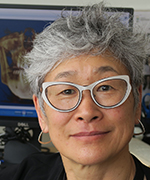
Mechanobehavior to predict temporomandibular joint growth and degeneration
Laura R Iwasaki
Professional Experience and Education
| 2018-Present | Chair and Professor (Provisional), Orthodontics, School of Dentistry, Oregon Health & Science University (OHSU), USA |
|---|---|
| 2007-2018 | Leo A. Rogers Chair and Associate Professor, Orthodontics and Dentofacial Orthopedics; Associate Professor, Oral and Craniofacial Sciences (joint appointment); School of Dentistry; Graduate Faculty, School of Graduate Studies; University of Missouri-Kansas City (UMKC), USA |
| 2006-Present | Research Assistant Professor (2006-2019), Research Associate Professor (2019-Present), Oral Diagnostic Sciences (volunteer appointment), School of Dental Medicine, University at Buffalo, USA |
| 1996-2006 | Assistant Professor, Growth & Development, College of Dentistry, University of Nebraska Medical Center (UNMC), USA |
| 1999-2006 | Graduate Faculty, Graduate College, University of Nebraska, USA |
| 1992-1996 | Assistant Professor, Preventive Dental Science, Faculty of Dentistry, University of Manitoba, Canada |
| 1992 | PhD (Interdisciplinary Studies), Faculty of Graduate Studies, University of Manitoba, Canada |
| 1987 | MSc (Preventive Dental Science) and Orthodontic Certification, Faculty of Dentistry, University of Manitoba, Canada |
| 1983-1984 | Residency (General Dentistry), Vancouver General Hospital/University of British Columbia, Canada |
| 1983 | DDS, Faculty of Dentistry, University of Alberta, Canada |
| 1981 | BSc (Dental Sciences), Faculty of Science, University of Alberta, Canada |
Honors and Awards
| 2019 | Eugene and Pauline Blair Distinguished Service Award, American Association of Orthodontists Foundation (AAOF) |
|---|---|
| 2018 | GAC International Corporate Center Award, AAOF |
| 2007 | American Association of Orthodontists Orthodontic Faculty Development Award |
| 2005 | 3M Unitek Corporate Center Award, AAOF |
| 2000 | BF Dewel Memorial Biomedical Research Award, AAOF |
Research Interests
Biomechanics and behaviors of the human craniomandibular complex with special interests in the TMJ, jaw muscles, and tooth movement.
Abstract
Mechanical loading is important to the growth and maintenance of the secondary cartilages of the condyle and eminence of the temporomandibular joint (TMJ). The fibrocartilage disc between the condyle and eminence distributes loads, provides lubrication and, because it is avascular, depends on mechanical loading for nutrient exchange. Hence, therapies to modify jaw growth and prevent or ameliorate degenerative joint disease could be improved by understanding the mechanical loading conditions within the TMJ. Studies in humans where the magnitude and frequency of TMJ loading were measured to distinguish dentofacial phenotypes and predict longitudinal TMJ change will be highlighted. Key measurements of mechanical loading conditions are the concentration of work input to articulating tissues during jaw use, known as energy density, and the percentage of time that muscles are used to load the jaws out of a total recording time, known as duty factor. These measurements, combined into a mechanobehavioral score (MBS = (TMJ energy densities)2 X jaw muscle duty factors), are being applied to understand better the mechanisms involved with condylar growth and the susceptibility of the TMJ to degenerative changes. This presentation will describe how clinical treatment records and data collected via validated techniques, including numerical modeling, dynamic stereometry, and laboratory and in-field electromyography are employed to determine mechanobehavioral score. Future clinical approaches that could modify mechanobehavior to achieve more successful and predictable orthopedic therapies in children with jaw discrepancies and measures to prevent degenerative changes in the TMJ will be discussed.
Craniofacial Growth
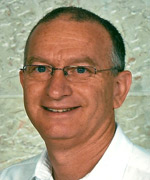
The management of craniofacial anomalies - 30 years' experience of the orthodontic perspective
Dror Aizenbud
Prof. Dror Aizenbud is a full professor of orthodontics and the chairman of the Department of Orthodontics and Craniofacial Anomalies and the deputy director of the School of Graduate Dentistry, Rambam Health Care Campus and Technion Israel Institute of Technology – Faculty of Medicine Haifa, Israel. He is the past president of the IADR Israeli Division. He honored a visiting professor nomination at the Craniofacial Anomalies Center, Stanford University Hospital, California, USA. Prof Aizenbud holds a Master of Science degree, a degree in dentistry and a certificate in orthodontics, both from the Hebrew University and Hadassah School of Dental Medicine, Jerusalem, Israel. He spent a fellowship program in the Craniofacial Center at the University of Illinois at Chicago with the group of Drs. Figueroa and Polley.
Prof. Aizenbud's Oral Biology Research Lab in the Faculty of Medicine, Technion is focused on craniofacial anomalies, biology of tooth movement and accelerated tooth movement, craniofacial distraction osteogenesis, dentofacial orthopedics, Obstructive Sleep Apnea and adult interdisciplinary treatment. His main clinical interest is the combined orthodontic-surgical treatment of dental and skeletal malocclusions and anomalies.
Abstract
Congenital craniofacial anomalies can range from small isolated areas to extensive areas of bone loss involving the entire jawbone and teeth. The resulted malocclusion caused by severe skeletal and dental discrepancies pose a significant challenge for the orthodontist and other health care providers. Nowadays advanced three dimensional technologies of planning and performance of orthodontics, dentofacial orthopedics, distraction osteogenesis and orthognathic surgery type of managements has become a routine care for the growing child to deliver successful treatment results.
Patients with these conditions often presented with functional and esthetic issues call for coordinated surgical, dental and medical multidisciplinary approach. Currently practice standards of patients with congenital craniofacial defects are achieved in a team setting and usually span the first two decades of life using the major advantage of patient's growth potential.
The aim of this presentation is to share our experience at the Rambam Craniofacial Orthodontic Department as the sub-specialty of orthodontics that focuses on managing patients birth defects and dental anomalies using multidisciplinary approach. These conditions often require coordinated surgical and restorative management protocol for practical and effective orthodontic treatment good aesthetics, functioning and occlusal relationships.
Diagnosis and Treatment Planning
no img
Airway-centered othodontic diagnosis and treatment for children
no img
Dr. Broadbent's 90- year life records and its clinical applications by Cephalometrics
Open Bite Treatment
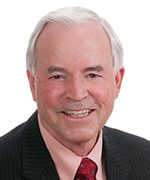
Changing Modes of Decision-making
David Turpin
Diagnosis and Treatment Planning
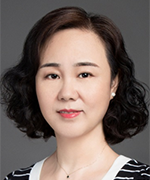
Airway-centered orthodontic diagnosis and treatment for children
Hong He
Dr Hong He, BDS, MDS, PhD
Professor, Senior Consultant and Supervisor of Doctoral Students,
Chair of Department of Orthodontics, School & Hospital of Stomatology, Wuhan University
Vice President of Chinese Orthodontics Society (COS)
Vice President of Hubei Orthodontic Society
President of Wuhan Orthodontic Society
Standing Committee Member of Society of Chinese Cleft Lip & Palate
Standing Committee Member of Chinese Medical Doctor Association Sleep Medicine Committee
Fellow of International College of Dentists
Member and Examiner of Royal College of Surgeons of Edinburgh(MorthRCS)
Abstract
Pediatric sleep-related disorder breathing (SDB) is caused by upper airway obstruction, resulted often from adenoid hypertrophy, tonsil hypertrophy or nasal disease. Mouth breathing is one of the most common clinical manifestations of pediatric SDB. Children whose mouth breathing remains untreated may develop long, narrow faces, high palatal vaults, dental malocclusion, gummy smiles etc. because of orofacial muscle imbalance. SDB in children has been associated with a variety of comorbidities, including failure to thrive, hypertension, attention deficit disorder, enuresis etc. Orthodontists who have the knowledge of SDB can play an important role in the early diagnosis and treatment of pediatric SDB. It is recommended that the orthodontist perform a clinical risk assessment for SDB. Orthodontists may be involved in the treatment of pediatric SDB by correcting the underlying dental and skeletal deformities. When making the orthodontic treatment plan, orthodontists should account for children's upper airway condition.
Diagnosis and Treatment Planning
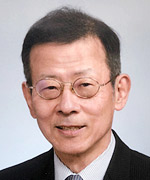
Dr. Broadbent's 90- year life records and its clinical applications by Cephalometrics
Kunihiko Miyashita
Career History
| 1976 | DDS (Nihon University) |
|---|---|
| 1982 | Ortho. Certificate (UCLA) |
| 2000 | PhD (Nihon University) |
| 1995 | Visiting Professor (UCLA) |
| 1996 | Senior Researcher (Bolton Brush Growth Center) |
| 1998- present | Adjunct Professor (Case Western Reserve University) |
| 2008- present | Board member (Joint Cephalometrics Expert Group) |
Award
| 1998, 1999 | Instructor of the Year (UCLA) |
|---|
Writing
| 1996 | Contemporary Cephalometric Radiography, Quintessence Co, Inc |
|---|
Abstract
This presentation consists of four parts.
The first part introduces the history of Cephalometrics in Cleveland. Cephalometrics is now approximately one hundred years old. Dr. B. Holly Broadbent Sr. developed the Broadbent-Bolton radiographic cephalometer with Prof.T.W. Todd in order to investigate human growth and development. The Bolton Brush Growth Study Center (BBGSC) was established in the late 1920s.
The second part of this presentation shows longitudinal records for Dr. Broadbent's family for about 90 years. The materials include Dr. Broadbent Sr., his wife, son, Dr Broadbent Jr., daughters, grand daughter and great-grand sons. The record now covers four generations. In addition to these family records, this presentation shows some examples of longitudinal records of normal growth and development in children and adults out of more than the 5000 cases collected in the BBGSC.
The third part introduces the JCEG(Joint Cephalometrics Experts Group) and shows their state of the art cephalometrics meeting reports. The first meeting was held at BBGSC in 1955 in order to discuss the the objectives of cephalometrics. The members consisted of cephalometrics experts, including Prof. Broadbent Sr., and leading researchers in the USA. Since CBCT had become popular by the early 2000s, another JCEG meeting has been held at the same place since 2008. There is a web-site dedicated to it, and the members now come from all-over the world. The current agenda is the transition from 2D to 3D cephalometrics.
The fourth part shows some of my long-term observation cases with recent JCEG meeting conclusion.
Early Treatment
no img
Early treatment of Class III malocclusion with TADs
no img
Expansion in the early mixed dentition: Is it worth the effort?
no img
Early treatment of dentoskeletal Class II malocclusion
Early Treatment
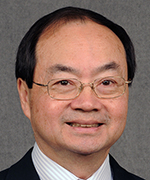
Early treatment of Class III malocclusion with TADs
Peter Ngan
Dr. Peter Ngan is the Branson-Maddrell Endowed Professor and Chair in the Department of Orthodontics, West Virginia University School of Dentistry. Dr. Ngan is also an Honorary Professor in the Faculty of Dentistry at the University of Hong Kong and a Guest Professor at the Wuhan University School of Stomatology. Dr. Ngan holds a dental degree from Harvard University, School of Dental Medicine and Certificates in Orthodontics, Pediatric Dentistry and Hospital Dentistry from the University of Pennsylvania, School of Dental Medicine/ Children Hospital of Philadelphia. He is a member of the Angle East (Eastern Component of the Edward H. Angle Society). He is a Diplomate of the American Board of Orthodontics and a Diplomate of the American Board of Pediatric Dentistry. He was inducted as Fellow of the American College of Dentists (October, 2008), Fellow of the International College of Dentists (October 2010) and Fellow of the Pierre Fauchard Academy (May 2011). Dr. Ngan's research interest includes growth and development, biology of tooth movement, dentofacial orthopedics, orthodontic appliance therapy, oral implantology, orthodontic bonding systems and adult interdisciplinary treatment.
Abstract
Young patients with a Class III malocclusion and maxillary deficiency are treated primarily with facemasks. However, because the force is applied to the teeth, the inevitable mesial migration of the dentition can result in anterior crowding and the need for a subsequent extraction therapy. Furthermore, the desired skeletal effect of this commonly used approach often turns out to be less than expected. To increase the advancement of the maxilla, facemask therapy is often combined with rapid palatal expansion (RPE) since stimulation of the midface sutures is expected. Temporary Anchorage Devices (TADs) can be inserted in the palate to avoid mesial migration of the upper molars when using a facemask and to minimize tipping or periodontal damage to the bicuspids /deciduous molars when expanding the maxilla. The author will present early Class III cases treated with the help of TADs and the skeletal and dental changes one will expect with the use of this device. After this lecture, the attendees of this lecture will be able to identify the type of Class III patients suitable to be treated with facemask, RPE and TADs; identify the various factors such as growth pattern, growth potential and the severity of malocclusion that can affect the treatment outcome with this appliance; and learn how to design and fabricate RPE with TADs that can be used in conjunction with a facemask.
Early Treatment
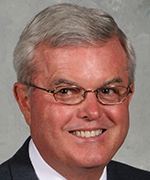
Expansion in the early mixed dentition: Is it worth the effort?
James A. McNamara
Professional Experience
Thomas M and Doris Graber Endowed Professor Emeritus, Department of Orthodontics and Pediatric Dentistry, and Research Professor Emeritus, Center for Human Growth and Development, the University of Michigan. Private practice of Orthodontics, Ann Arbor, Michigan.
Education
Bachelor's degree in Speech, University of California Berkeley; Dental education and Certificate of Orthodontic Specialty, The University of California San Francisco. Master's and Doctorate in Anatomy, The University of Michigan.
Honors and Awards
Milo Hellman Research Award; American Association of Orthodontists, 1973; E. Sheldon Friel Memorial Award, European Orthodontic Society, 1979; Research Recognition Award, American Association of Oral and Maxillofacial Surgeons, 1983; James E Brophy Distinguished Service Award, the American Association of Orthodontists, Albert H. Ketcham Memorial Award, American Board of Orthodontics, 2008; Beni Solow Memorial Award, European Orthodontic Society, 2011; Edward H. Angle Memorial Lecturer, American Association of Orthodontists, 2014; Angle Heritage Award, Edward H Angle Society of Orthodontists, 2017.
Research Interests
Skeletal and dentoalveolar effects produced by orthodontic, orthopedic and surgical treatments; normal craniofacial growth and development; the Cervical Vertebral Maturation method of growth assessment.
Abstract
This presentation describes four decades of research carried out at the University of Michigan that consider the clinical alteration of the transverse dimension of the face, with specific attention given to orthodontic and orthopedic treatment of patients in the early mixed dentition. The results of a series of clinical studies will be described that consider the etiology of dental crowding as well as treatment effects produced by expansion in the early mixed dentition or in the late mixed/early permanent dentition.
A protocol for early treatment will be described that includes the removable lower Schwarz appliance (40% of mixed dentition patients who are in need of rapid maxillary expansion), a bonded acrylic splint expander (100% of such patients), and placement of "temporary" anterior brackets (60% of patients). A series of retrospective and prospective studies will be presented, including an investigation considering the spontaneous improvement of Class II malocclusion following increase in the transverse dimension. The possible negative effect of maintaining or increasing lower anterior arch length on subsequent lower second molar eruption or impaction also will be discussed.
The results of these studies support the concept that intervention in the early mixed dentition can produce many favorable changes in the occlusion as the dentition matures. An ideal time to intervene in such patients is before the onset of puberty.
Early Treatment

Early treatment of dentoskeletal Class II malocclusion
Letizia Perillo
Professional Experience and Education
Letizia Perillo is full Professor and Dean of the School of Dentistry, Chairman of the NEBEOP Postgraduate Orthodontic Program, Head of the Orthodontic Division at Multidisciplinary Department of Medical-Surgical and Dental Specialties, University of Campania Luigi Vanvitelli, Naples. She is 2018-2020 Visiting Professor at University of Alexandria, Egypt, 2021 Elected President of the Italian Society of Orthodontics (SIDO), 2022 Elected President of the Mediterranean Orthodontic Integration Project (MOIP), 2018-2020 International Ambassador of the American Association of Orthodontists (AAO) for SIDO, Member of the WFO, AAO, EHASO, EOS, SIDO and CH Tweed Foundation (clinical instructor), and member of the Editorial Board of several orthodontic and dental journals. Prof Perillo graduated in Medicine and Surgery in 1986 and specialized in Orthodontics in 1989 at the University of Naples Federico II. She completed her orthodontic training with a postgraduate fellowship at the University of Michigan in 1993 and a PhD in Interceptive Orthodontics at the University of Florence in 1997.
Honors
- Dean of the School of Dentistry, 2018-present
- Postgraduate Orthodontic Program Director, 2008-present
- Italian Orthodontic Society (SIDO) President, 2021
- Mediterranean Orthodontic Integration Project (MOIP) President, 2022
- American Association of Orthodontists (AAO) International Ambassador, 2018-2020
- World Federation of Orthodontists (WFO) Representative, 2018-2019
- Progress in Orthodontics (PIO) Associate Editor, 2017-present
- EH Angle Society of Orthodontists (EHASO) North Atlantic Components, Member, 2014-present
- CH Tweed International Foundation, Active member and Clinical instructor, 1999-present
- European Orthodontic Society (EOS) Member, 1995-present
Awards
- WJB Houston Poster Award: The association between the morphology of the upper arch and palate and buccally displaced maxillary canines in mixed dentition: a three-dimensional study. 94th EOS Congress. Edinburgh, UK, June 2018
- Poster Prize: Universal three-dimensional reference system for craniofacial deformities. 6th MOIP Congress, Alexandria, Egypt, October 2018
- Poster Prize: Descriptive superimposition of CBCT generated digital cast. 6th MOIP Congress. Alexandria, Egypt, October 2018
- Oral Presentation Prize: Gingival crevicular fluid changes during orthodontic treatment with fixed appliances: evaluation by vibrational spectroscopies. 6th MOIP Congress. Alexandria, Egypt, October 2018
- Poster Prize F. Bruno: Association between 3D palatal morphology and upper arch dimensions in buccally displaced maxillary canines in mixed dentition. 49th SIDO. Florence, Italy, October 2018
- Poster Prize: Association between 3D palatal morphology and upper arch dimensions in buccally displaced maxillary canines in mixed dentition. 49th SIDO Congress, Florence, October 2018
- Poster Prize: Rapid and Mixed maxillary expansion: comparison on postero-anterior cephalograms and dental casts. 5th MOIP Congress, Limassol, Cyprus, November 2016
- APOS Trends Award for the Best Reviewers. Bali, Indonesia, September 2016
- Poster Prize: Early Class III treatment: RME/FM vs SEC III. SIDO Congress, Milan, October 2015
- Oral Presentation Prize: Friction forces during sliding mechanics: in vitro comparison of conventional, Self-ligating and Low-friction brackets. SIDO Congress, Rome, March 2013
Research Interests
Her main research topics are early treatment, non-extraction treatment, cleft lip and palate, dentofacial orthopedics and genetics.
Abstract
One of the most heated controversies in Orthodontics concerns the role of early treatment in the correction of dentoskeletal Class II malocclusions by mandibular retrusion. Thus, a treatment for stimulating mandibular growth with functional appliances is often indicated. One of the most famous appliances is the Function Regulator (FR-2), proposed in the 1960s by Frankel. According to the literature, FR-2 treatment is able to correct a Class II malocclusion. However, some studies highlighted an increase in mandibular growth, others reported only restriction of maxillary growth or dentoalveolar effects. This lecture will show primarily the importance of the differential diagnosis in the treatment for dentoskeletal Class II malocclusions, and then the changes associated with the FR-2 treatment and their stability after a 20-year follow-up.
Evidence Based Orthodontics
no img
Application of evidence into daily orthodontic clinical decisions - the unerupted teeth story
no img
Orthodontic Retention: Not letting go?
Evidence Based Orthodontics
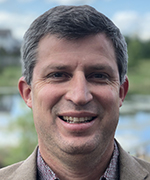
Application of evidence into daily orthodontic clinical decisions - the unerupted teeth story
Carlos Flores Mir
H-Index
53 Google Scholar - 32 Scopus - 31 Web of Science
Education
DDS (Universidad Peruana Cayetano Heredia ? Peru - 1994)
Certificate in Orthodontics (UPCH ? Peru - 1998)
BSc in Stomatology (UPCH ? Peru - 1994)
MSc in Stomatology (UPCH ? Peru - 1999)
DSc in Stomatology (UPCH ? Peru - 2002)
Postdoctoral Fellowship (University of Alberta- Canada - 2005)
Employment
Tenured Professor at the University of Alberta Extramural Private Practice in Edmonton, Canada
Current Position
Orthodontic Program Director, University of Alberta (since 04/10)
Head of the Division of Orthodontics, University of Alberta (04/10 to 06/17)
Assistant Editor, The Angle Orthodontist (Since 04/12)
Assistant Editor, Dental Press Journal of Orthodontics (Since 01/15)
Assistant Editor, Journal of World Federation of Orthodontics (Since 04/17)
Presentations
More than 120 international presentations around the topics of Clinical Orthodontics, Evidence-based Dentistry and Evidence-based Orthodontics (Argentina, Australia, Bolivia, Belgium, Brazil, Canada, Colombia, Chile, Costa Rica, Germany, Iceland, Israel, Italy, Mexico, Netherlands, Panama, Paraguay, Peru, Poland, Romania, Uruguay, USA, Scotland, Switzerland and Spain)
Major Teaching awards
2014 Department of Dentistry, Gibb Teaching Scholar Award, 2010 Faculty of Medicine and Dentistry, University of Alberta ? Tier II Clinical Award for Excellence in Mentoring Student, 2007 Association of Canadian Faculties of Dentistry (ACFD) - W. W. Wood Award for Excellence in Dental Education
Publications
6 book chapters related to Evidence-based Dentistry 280 peer-reviewed articles and 37 commentaries published.
Abstract
This presentation will explore how recently published evidence (systematic reviews and randomized clinical trials) focused on impacted teeth has impacted my day to day clinical decisions when faced with a potential impacted canine. The following questions will be explored:
Does CBCT make always a difference? - diagnosis focus
Is there a better outcome if a specific surgical exposure approach is used? - management focus
Is it always worth to attempt to tract the impacted tooth down? - prognosis focus
Can early extraction of deciduous canines reduce the chances of permanent canine impaction? - prognosis focus
Clinical cases will be shown to facilitate the conversation.
Evidence Based Orthodontics
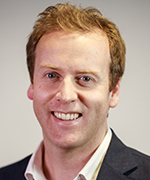
Orthodontic Retention: Not letting go?
Padhraig Fleming
Professional Experience
| 2018- | Present Professor of Orthodontics, Queen Mary University of London Consultant |
|---|---|
| 2017- | Present Postgraduate Training Lead in Orthodontics, Queen Mary University of London. |
Honours and Awards
| 2007 | MSc with Distinction |
|---|---|
| 2008 | Membership in Orthodontics and British Orthodontic Society Medal |
| 2011 | Chapman Prize, British Orthodontic Society |
| 2013 | PhD |
| 2013 | BF and Helen E Dewel Award, American Association of Orthodontists. |
Research Interests
Treatment effectiveness and Predictability
Clinical Trials
Abstract
While there is increasing acceptance of the necessity for indefinite retention, there has been relatively little prospective research concerning the relative effectiveness of fixed and removable retention protocols in the longer term.
Prolonged outcomes with fixed and removable regimes will be discussed on the basis of a recent randomized controlled trial with 4-year follow-up. Patient experiences associated with retention, including factors influencing compliance with removable retention will also be presented.
The effectiveness of novel electronic methods in enhancing adherence will be discussed on the basis of a further clinical trial. Finally, practical approaches to improving outcomes with both fixed and removable designs will be illustrated.
Eruption Disorders
no img
Prediction and prevention of pathological tooth eruption
no img
Trans-alveolar transplantation for impacted teeth: scientific evidence and clinical practice
no img
Failures in treating impactions - hindsight is 20/20, so learn from your mistakes
Eruption Disorders
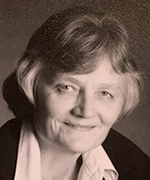
Prediction and prevention of pathological tooth eruption
Inger M. Kjær
| 2015-2020 | Professor Emerita at the University of Copenhagen and Consultant in dental and craniofacial deviations at the University Hospital Copenhagen, Denmark |
|---|---|
| 2002-2015 | Professor at the Orthodontic Institute, Faculty of Health Sciences, University of Copenhagen, Denmark |
| 1999 | Doctoral theses in Medicine. University of Copenhagen |
| 1998-2002 | Vice Dean at the faculty of Medicine, University of Copenhagen,Denmark |
| 1997-2004 | Board member representing Medicine and Science at the Central Academic Council, University of Copenhagen |
| 1997-2000 | Council member in EOS, European Orthodontic Society |
| 1994-1998 | Member of the committee responsible for health educations in the Ministery of Education. |
| 1986-2002 | Associate Professor at the Orthodontic Institute, Faculty of Health Sciences, University of Copenhagen, Denmark |
| 1983-2005 | Chairman for the board responsible for the odontological specialties in the Ministry of Health, Denmark |
| 1983 | Doctoral theses in Odontology |
| 1975-1986 | Director for a municipal dental service unit offering general dental treatment and orthodontic treatment for 5000 children |
| 1970-1975 | Research scholarships in oral biology and histochemistry |
| 1964-1970 | DDS, Fellowship at the Medical Center, University of California, San Francisco US and postgraduate training in orthodontics, Copenhagen. |
Honors and Awards
| 2002 | The Queen of Denmarks Cross of the Order, Dannebrog. |
|---|---|
| 2002 | Honorary member of DORS, The Danish Orthodontic Association |
| 2009 | Honorary member of FSO, The Danish Association for Orthodontic Specialists |
Research interest
Bridging Prenatal human development with Postnatal human development
Etiology-based dental and craniofacial diagnostics
Neuro-orthodontics. The interrelationship between neurology and orthodontics
Abstract
Scientific understanding of the normal eruption process is a prerequisite for an evidence-based prediction and prevention of pathological tooth eruption.
Normal tooth eruption occurs in three eruption phases:
1) Early migration of tooth buds
2) Pre-gingival penetration
3) Post- gingival penetration.
The biological eruption process is based on interactions between the highly innervated root membrane,the periodontal membrane (peri-root tissue layers),
and in phase 3 also of the penetration ability of the crown follicle.
The three tissue types important for eruption are: the mucosal ectoderm, the mesodermal ectomesenchyme and the neuroectodermal peripheral nerves.
The eruption process occurs in genetically different jaw segments (fields), each innervated by specific nerve branches originated from different areas on the neural crest.
Pathological tooth eruption of incisors, canines, premolars and molars will be demonstrated and categorized according to the three eruption phases.
Phase 1: prediction and prevention is not possible.
Phase 2: primary retention and ectopia can in many cases be predicted from anamnesis, diseases (virus attacks), and sometimes prevented.
Phase 3: secondary retention can sometimes be predicted , but rarely prevented.
Pathological tooth eruptions (all phases) occur nearly always in phenotypically "weak dentitions" with several other dental deviations (agenesis,
taurodontism,invaginations,abnormal resorptions,tooth malformations) and often in dentitions with impacted molars in the preceding primary dentition.
Screening the seemingly normal primary and permanent dentitions with "individualized diagnostics eyes" (citation from professor Takayuki Kuroda) is the most important first step in prediction and preventing pathological tooth eruption.
Eruption Disorders
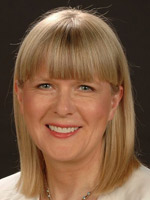
Trans-alveolar transplantation for impacted teeth: scientific evidence and clinical practice
Ewa M. Czochrowska
Graduated as a dentist from the Dental Faculty in Warsaw, Poland. She finished a postgraduate training in orthodontics at the University in Oslo, Norway in 1997 then worked as a Research Fellow at the Orthodontic Department, Dental Faculty in Oslo until 2002. In 2003 she was awarded a PhD from the University in Oslo for a thesis on autotransplantation of teeth. For the publication from this work she received the American Journal of Orthodontics and Dentofacial Orthopedics Dewel Orthodontic Award in 2002. In 2014 she was awarded a habilitation in medical science from the Medical University in Warsaw on her work related to orthodontic treatment of patients with periodontitis.
Dr. Czochrowska was the President of the European Orthodontic Society and she host the EOS Congress in 2014 in Warsaw. She is the President of the Polish Orthodontic Society and the Active Member of the Angle Society of Europe and the European Board of Orthodontists. At present, she serves the position of the Secretary of the Angle Society of Europe. Dr. Czochrowska has organized 2 international congresses on tooth transplantation in 2016 (Sopot, Poland) and 2018 (Rotterdam, the Netherlands). Received Distinguish Teacher Award from the European Orthodontic Society for 2020. At present in the private practice in Warsaw and is working at the Department of Orthodontics, Medical University in Warsaw, Poland.
Dr. Czochrowska has authored and coauthored 10 book chapters and 50 scientific articles. She has lectured extensively worldwide on tooth transplantation and orthodontic treatment in patients with periodontal diseases.
Abstract
Treatment options for impacted teeth are related to the stage of root development, inclination of the impacted tooth, space conditions, status of adjacent teeth and patient's attitudes to treatment. Trans-alveolar transplantation, which is a surgical uprighting of an ectopic tooth, is an attractive option and it is usually performed, when orthodontic extrusion is difficult and extraction of an impacted tooth and orthodontic space closure are unfavorable from orthodontic perspective.
The highest survival and success rates upon tooth transplantation were documented for developing teeth, preferably at 1/2 to 3/4 final root development. Gentle removal of a donor tooth is crucial for the successful outcome, but in severely impacted teeth transplantation may be more difficult and therefore less predictable. Detection of tooth impaction at earlier stages of root development is important, because shorter teeth are easier to be removed and those teeth have a better chance for pulp revascularisation. The existing evidence related to the survival and success of surgically uprighted teeth will be summarized.
Trans-alveolar transplantation can be used to surgically upright impacted developing premolars, canines and upper incisors and clinical examples will be shown during the presentation. Key factors for success will be discussed including treatment planning and surgical indications for the donor selection, surgical technique, follow-up protocol and long-term results. The important benefit of trans-alveolar transplantation of developing teeth is the potential for bone preservation and regeneration, that will be shown during the lecture.
Eruption Disorders
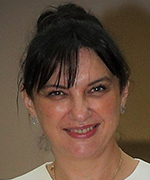
Failures in treating impactions - hindsight is 20/20, so learn from your mistakes
Stella Chaushu
Professional Experience and Education
| 2014 | Full Professor, Hebrew University, Hadassah School of Medicine, Jerusalem, Israel |
|---|---|
| 2010 | Chairperson, Hebrew University, Hadassah School of Medicine, Jerusalem, Israel |
| 2010 | PhD, Hebrew University, Hadassah School of Medicine, Jerusalem, Israel |
| 2007 | Associate Professor, Hebrew University, Hadassah School of Medicine, Jerusalem, Israel |
| 2002 | Clinical Senior lecturer, Hebrew University, Hadassah School of Medicine, Jerusalem, Israel |
| 1999 | Clinical Lecturer, Hebrew University, Hadassah School of Medicine, Jerusalem, Israel |
| 1989 | DMD, Hebrew University, Hadassah School of Medicine, Jerusalem, Israel |
| 1989 | MSc, Hebrew University, Hadassah School of Medicine, Jerusalem, Israel |
Honors and Awards
| 1984 | Dean award for academic accomplishments during the first year of study. |
|---|---|
| 1985 | Dean award for academic accomplishments during the second year of study. |
| 1986 | Dean award for academic accomplishments during the first, second and third year. |
| 1987 | Golda Meir award for MSc thesis. |
| 1989 | Melvin Fener award for academic accomplishments during the fifth year of study. |
| 1989 | Dean award for academic accomplishments during the six year of study. |
| 2003 | magna cum laude for DMD thesis of student under my supervision |
| 2007 | Excellence in teaching award for undergraduate students (Dean list). |
| 2013 | Excellence in teaching award for undergraduate students (Rector list). |
| 2013 | Best poster award in the International Orthodontic Postgraduate Study Day, Kings College London Orthodontic Society, London, for student under my supervision |
| 2013 | Best poster award in the European Orthodontic Society Congress, Reykjavik, for student under my supervision. |
| 2014 | Dr. Joseph E. Johnson Clinical Award in AAO convention, New Orleans for the best table clinic of student under my supervision. |
| 2014 | Excellence in teaching award for undergraduate students (Rector list). |
| 2014 | Dr. Baruch and Fani Kaufman award for excellent doctoral degree thesis of student under my supervision. |
| 2014 | Best oral presentation award in the European Orthodontic Society Congress, Warsaw, for student under my supervision. |
| 2015 | Hatton Unilever award for best oral presentation in IADR congress, Dubrovnik, for student under my supervision. |
| 2015 | IADR LION Dental Research Award for Junior Investigators for student under my supervision. |
| 2015 | Charley Schultz resident scholar award in the annual AAO meeting, San Francisco, for the best basic science research of student under my supervision. |
| 2016 | Dewel clinical research award for the best clinical paper in 2016 by the American Journal of Orthodontics and Dentofacial Orthopedics |
| 2016 | Best Oral Presentation in SIDO conference, Florence, for student under my supervision. |
| 2016 | BSODR GSK MINTIG award in PER IADR conference, Jerusalem, for student under my supervision. |
| 2016 | European GCARE University Research Award for student under my supervision. |
| 2018 | Third Place for the Dentsply Sirona Awards for student under my supervision |
| 2019 | First prize in the Three Minute Thesis competition at the IADR AADR CADR General Session in Vancouver, for student under my supervision. |
| 2019 | IADR CTOR Award For Student Excellence in Orthodontics Research at the IADR AADR CADR General Session, Vancouver, for student under my supervision. |
Research Interests
Orthodontic treatment of impacted teeth
Orthodontic treatment of adult patients
The biology and immunology of orthodontic tooth movement
Orthodontic tooth movement into regenerative sites
Orthodontic treatment of patients with disabilities
Abstract
Every orthodontist in the world can align teeth, but when the principle aim of treatment is treating an impacted tooth, it is all or nothing - we either succeed or fail, and it is nothing in-between. Many factors that are not present in routine orthodontics complicate the treatment. The tooth is not visible, therefore accurate diagnosis of its three-dimensional position and relation with adjacent teeth is often difficult. A reliable anchorage unit which allows the application of controlled directional forces with minimal side effects on the anchorage teeth must be build-up. Close cooperation between the orthodontist and the oral surgeon is mandatory for the success of this approach. Mistakes are related to all the aspects of treatment and are not uncommon even in the hands of experts. Failures lead to malpractice lawsuits. However, mistakes sometimes occur due to lack of awareness of the whole dental profession to a specific issue which has not yet been studied and published. This lecture will cover different aspects of treatment of impacted canines and incisors, from what contributes to success through to the reasons for and the circumvention of failure and discuss mistakes seen in hindsight and how to overcome them.
Facial Esthetics
no img
The Power of the Face: Restoring Function after Paralysis and Impairment
no img
Macro to Mini-Explore the Possibilities
Facial Esthetics
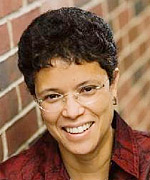
The Power of the Face: Restoring Function after Paralysis and Impairment
Carroll Ann E. Trotman
Dr. Trotman is the Associate Dean for Faculty Development and Professor and Chair of Orthodontics. She received her dental degree from Dundee University, Scotland and her orthodontic degree and MA in Oral Biology from Columbia University, NY. She then completed a Fellowship in Craniofacial Anomalies at the Hospital for Sick Children in Toronto. Subsequently, she was appointed Assistant Professor in the Department of Orthodontics at the University of Michigan School of Dentistry. During her tenure at Michigan, she obtained an MS in Clinical Research Design and Statistical Analysis from the Horace Rackham School of Graduate Studies. Dr. Trotman then was appointed Associate Professor in the Department of Orthodontics at the University of North Carolina (UNC) School of Dentistry. Subsequently, she was promoted to Professor and served as the Interim Associate Dean for Academic Affairs and then Assistant Dean for Graduate Education at UNC. She then was appointed Professor and Associate Dean for Academic and Student Affairs at the University of Maryland School of Dentistry. Dr. Trotman was an American Council on Education Fellow, is a Diplomate of the American Board of Orthodontics, and maintains an active research program funded by NIH with a focus on craniofacial anomalies. Learn more about the Facial Animation Laboratory here.
Abstract
Patients with facial disability have varying degrees of impaired facial soft tissue movements/function and disfigurement. Surgeons have different treatments that attempt to correct the disability. This presentation will focus on approaches to quantify facial disability and assess treatment outcomes in patients with facial paralysis. Method: Longitudinal 3D changes in facial soft tissue movements were quantified in adults with unilateral facial paralysis (n=36) during different facial animations/movements, and in an age- and sex-frequency matched control group (n=68). Mean group measurements of displacement, velocity and asymmetry of movement were computed. Standard statistical tests were used to test for significant changes over time in the patient group and differences between the patients and controls. Also, 3D dynamic modeling and vector plots (mapping) were computed to isolate patients' abnormal movements compared with the controls. Results: The patients' mean baseline movements were significantly less for both the paralyzed and contralateral sides of the face with much greater movement asymmetry than the controls. Patients' mean measures improved significantly from baseline to 12 weeks, but still fell short of control values. Conclusion: In unilateral facial paralysis, the contralateral facial side was affected by the paralysis and may be tethered or limited in its movement by the paralyzed side. The measures and mapping effectively isolated paralyzed facial regions and tracked patient recovery, and has applications for facial reanimation surgery. A similar approach for diagnosis and outcome assessment will be briefly presented for patients with repaired cleft lip/palate.
Facial Esthetics
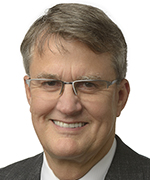
Macro to Mini-Explore the Possibilities
David M. Sarver
Dr. Sarver received his DMD from The University of Alabama School of Dentistry and MS in Orthodontics from the University of North Carolina in 1979. He is a Diplomate of the American Board of Orthodontics, a member of the Edward H. Angle Society of Orthodontists, a Fellow in both the International and American Colleges of Dentists and is a Fellow in the American Academy of Esthetic Dentistry. He has had the honor of presenting the Salzmann, Merson and Angle lectures at the AAO Annual meeting. In addition to his private practice, Dr. Sarvers book, Esthetics in Orthodontics and Orthognathic Surgery was published in September 1998. He is also coauthor, with Dr. Proffit and White, of the surgical text Contemporary Treatment of Dentofacial Deformity, and is coauthor the 4th, 5th editions and 6th edition of Proffits classic textbook Contemporary Orthodontics. Publication of his book Dentofacial Esthetics, from Macro to Mini is scheduled to be published in February. He has given more than 400 professional presentations in the United States, Europe, Australia and the Middle and Far East.
Abstract
The concepts in Macroesthetics to Microesthetics evaluates each patient who walks through your door focusing first on the big picture and then working your way to the minute details in order to treatment plan for the best possible outcome, taking into consideration concepts like esthetic balance and smile projection. Dr Sarver will demonstrate the idea that orthodontics is about more than occlusal function, it is about creating faces and smiles that are functional and beautiful.
Genetics
no img
Designer Genes and Personalized Orthodontics: The Clinical Relevance of Genetic Advances
no img
Genetics and Genomics of Orofacial Clefting and Tooth Agenesis
no img
Human genetics in malocclusion
Genetics
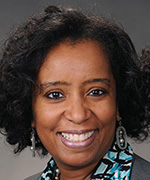
Designer Genes and Personalized Orthodontics: The Clinical Relevance of Genetic Advances
Sylvia A. Frazier-Bowers
Professional Experience and Education
| December 1999 | UNC at Chapel Hill PhD, Genetics & Molecular Biology |
|---|---|
| May 1997 | UNC at Chapel Hill Certificate, Orthodontics |
| May 1993 | University of Illinois at Chicago D.D.S., Dentistry |
| December 1991 | University of Illinois at Urbana Champaign B.S., Dentistry |
| August 1987 | University of Illinois at Urbana Champaign B.A., English, cognate in Biology |
| 2018 to Present | Assistant Dean, Inclusive Excellence and Equity Initiatives, University of North Carolina at Chapel Hill |
| 2011 to Present | Associate Professor, University of North Carolina at Chapel Hill, School of Dentistry, Department of Orthodontics |
| 2004 to 2011 | Assistant Professor, University of North Carolina at Chapel Hill, School of Dentistry, Department of Orthodontics |
| 2006 to 2011 | Adjunct Faculty, Carolina Center for Genome Sciences |
| 2001 to 2004 | Assistant Professor, University of Texas Health Science Center at Houston, Dental Branch, Department of Orthodontics |
| 2002 to 2004 | Adjunct Faculty, UTHSCH Medical School, Department of Internal Medicine, Medical Genetics Division |
| 2000 to 2001 | Postdoctoral Fellow andResearch Assistant Professor, UTHSCH, Dental Branch, Department of Orthodontics |
Honors and Awards
| 2019 | Relational Leadership Institute |
|---|---|
| 2015 to 2017 | Academic Leadership Program Fellow, UNC Institute for the Arts and Humanities |
| 2013 | SAO Faculty Lecture Award, Southern Association of Orthodontists |
| 2012 | Class of 2012, Excellence in Mentoring Award, SNDA, UNC School of Dentistry |
| 2011 | Class of 2011 Excellence in Teaching Award, Department of Orthodontics, UNC School of Dentistry |
| 2009 | UNC School of Dentistry Student Research Mentor Award |
| 2006 | 2006 General Clinical Research Centers Outstanding Trainee Award |
| 2006 | UNC School of Dentistry Student Research Mentor Award |
| 2006 | UNC Junior Faculty Development Award (designated IBM fund award) |
| 2002 | 2002 Earl Shepard Memorial Fellowship Award from the American Association of Orthodontist Foundation |
| 2001 | 2001 Albert P Westfall Memorial Teaching Fellowship Award from the American Association of Orthodontist Foundation |
Research Interests
My current efforts also broadly focus on gene discovery and phenotype dissection of dentofacial variation and eruption disorders using 2 and 3 dimensional methods for rigorous clinical characterization, genotyping and mutational analysis through the candidate gene approach.
Abstract
This lecture will provide an overview of current practices in the diagnosis and treatment of malocclusions with a genetic basis. We are quickly approaching a time when personalized orthodontics will be an integral part of our diagnostic regime just as it is with medicine. Taking a family history in fact represents the gold standard in the diagnosis and management of medical (and by extension) dental disorders. The objective of this lecture will be to recognize and diagnose both common and rare dental disorders encountered in orthodontic practices from both clinical and genetic perspectives. Data from genetic and clinical studies have helped to create a paradigm shift in contemporary orthodontic practices. Applying genetic knowledge to the field of orthodontics will augment the current differential diagnosis of dental disorders, permitting recognition of etiologically distinct disorders that respond to treatment in different ways. That is, proper diagnosis equals proper treatment. This session will include discussion of Primary Failure of Eruption, ankylosis, delayed eruption and Class III malocclusion with an emphasis on adopting a diagnostic rubric for proper management. Or, what to do, and what not to do.
Genetics
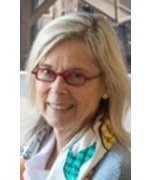
Genetics and Genomics of Orofacial Clefting and Tooth Agenesis
Carine E.L. Carels
CV Prof. dr. Carine CARELS, DDS, PhD, hon fellow FDSRCS
- Professor and Head Dept of Orthodontics, KU Leuven, Belgium, 1987-2008
- Sabbatical Leave at Radboud University Medical Center, Nijmegen, The Netherlands (to study Genetics and Molecular Life Sciences, Bachelor and Master Level), Academic Year 2008-2009
- Professor of Orthodontics with emphasis on Dental and Facial Genetics, Nijmegen, The Netherlands (2010-2016)
- Professor in the Department of Oral Health Sciences, KU Leuven, Belgium (2016-2017)
- Professor in the Department of Human Genetics and of Oral Health Sciences, KU Leuven, Belgium (2017- now)
Abstract
Tooth agenesis and orofacial clefts both represent very common developmental anomalies and their co-occurrence is often reported in patients as well as in animal models. Here we aimed to perform a systematic review to thoroughly investigate the literature in order to identify genes and genomic loci contributing to syndromic or non-syndromic co-occurrence of tooth agenesis and orofacial clefts and to gain insight into the molecular mechanisms underlying their dual involvement in the development of teeth and facial primordia. Altogether, 84 articles including phenotype and genotype description provided 9 genomic loci and 26 gene candidates underlying the co-occurrence of the two congenital defects: MSX1, PAX9, IRF6, TP63, KMT2D, KDM6A, SATB2, TBX22, TGFα, TGFβ3, TGFβR1, TGFβR2, FGF8, FGFR1, KISS1R, WNT3, WNT5A, CDH1, CHD7, AXIN2, TWIST1, BCOR, OFD1, PTCH1, PITX2 and PVRL1.
The molecular pathways, cellular functions, tissue-specific expression and disease association were investigated using publicly accessible databases (EntrezGene, UniProt, OMIM). The Gene Ontology terms of the biological processes mediated by the candidate genes were used to cluster them using the GOTermMapper (Lewis-Sigler Institute, Princeton University), speculating on six super-clusters: (a) anatomical development, (b) cell division, growth and motility, (c) cell metabolism and catabolism, (d) cell transport, (e) cell structure organization and (f) organ/system-specific processes.
This review aims to increase the knowledge on the mechanisms underlying the co-occurrence of tooth agenesis and orofacial clefts, to pave the way for improving targeted (prenatal) molecular diagnosis and finally to reflect on therapeutic or ultimately preventive strategies for these disabling conditions in the future.
Genetics
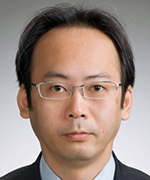
Human Genetics in Malocclusion
Tetsutaro Yamaguchi
Professional Experience and Education
| 2019-prs | Professor and chair, Department of Oral Interdisciplinary, Division of Orthodontics, Kanagawa Dental University Graduate School of Dentistry, Japan |
|---|---|
| 2012-2019 | Associate Professor, Division of Orthodontics, School of Dentistry, Showa University, Japan |
| 2007-2012 | Assistant Professor, Division of Orthodontics, School of Dentistry, Showa University, Japan |
| 2004-2007 | Research Associate, Division of Orthodontics, School of Dentistry, Showa University, Japan |
| 2000-2004 | Clinical Researcher, Division of Orthodontics, School of Dentistry, Showa University, Japan |
| 1996-2000 | Graduate School of Dentistry, Showa University, Ph.D., Orthodontics |
| 1989-1995 | School of Dentistry, Showa University, D.D.S., Dentistry |
Honors and Awards
| 2018, 2017, 2015 | |
|---|---|
| The Japanese Society for Jaw Deformities, The Best Poster Presentation Award | |
| 2016, 2012, 2010, 2009, 2008 | |
| The Japanese Orthodontic Society, The Best Poster Presentation Award | |
| 2011 | The Kamijo Grant Prize (Research), Showa University |
Research Interests
Human genetics in orofacial disease and traits
Abstract
Malocclusion, an incorrect relationship between the maxilla and the mandible or a general misalignment of the teeth, is highly influenced by genetics. Genetic exploration of human craniofacial morphology, as morphological variation, began in 2001. In recent years, several genome-wide studies have surfaced that began with simple curiosity regarding the development and organization of the human face. Major contributions to progress in this area were made by researchers in various fields, including anatomy and human evolution, rather than by dentists. Explosive recent advances in genome science have identified genetic factors of malocclusion in humans. Research on the genetics of human mandibular prognathism was initiated in 2005; thereafter, it progressed by studying human genes with malocclusion as a phenotype.
Several important discoveries have been made, to date. Genes underlying congenital anomalies play important roles in the dentofacial variation in human malocclusion, even in healthy populations. Moreover, in genome-wide studies, genes with previously unknown functions were associated with human craniofacial morphology. Various phenotype classification and human genetic analysis, each having advantages and disadvantages, have been applied in relation to human genetics in malocclusion. With limitations in each method, the current status, based on associated literature, is difficult to report from the standpoint of reproducibility. In this context, considering everything that has been learned to date, what sort of progress in research will have to be made in future? What hopes and expectations are reasonable? To benefit clinical practice, prospective malocclusion research will be conducted by examining existing studies.
Interdisciplinary Treatment
no img
Interdisciplinary management of complex dental problems
no img
Complex Interdisciplinary Adult Treatments
no img
Regeneration of degenerated dentitions, together we can
Interdisciplinary Treatment
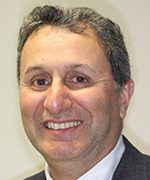
Interdisciplinary Management of Complex Dental Problems
Mithran S. Goonewardene
Mithran Goonewardene completed Dental School at The University of Western Australia in 1981 and attended the Forsyth Dental Center/Harvard School of Dental Medicine in Boston, USA from 1984-1987 where he completed his Certificate in Orthodontics and Master of Medical Science degree. He is Head of Orthodontics and Graduate Program Director at The University of Western Australia, is a full member of The Edward Angle Society of Orthodontists and is Certified by the Australian Orthodontic Board. He visits Sri Lanka regularly as a visiting Consultant in Orthodontics in the Dental Institute, Colombo and participates in part-time private practice in Perth.
Abstract
Interdisciplinary management of complex dental problems may be extremely rewarding for both the treating clinicians and patients. A rigorous systematic approach is necessary to develop a coordinated, patient centred, goal oriented treatment plan. It is critical to establish the needs of the individual patient within their own value system and establish a realistic plan. To achieve the best outcome, clinicians must establish a group of healthcare providers who will bring the necessary skills and knowledge to the interdisciplinary team. They must meet and communicate regularly and effectively through appropriate media. A sequence of activity with specific goals should be outlined, identifying the respective clinicians and their immediate goal, which all clinicians and the patient may refer to at any stage in treatment. The team leader has the responsibility of ensuring that the patient and clinicians are all cognizant of the stage that the patient has reached and what is performed next, in turn facilitating communication. If these processes are adhered to, then the patient and the team can anticipate a mutually rewarding experience with consistently excellent reproducible outcomes. Dr Goonewardene will outline strategies for managing and complex issues related to tooth loss, tooth wear, sleep disordered breathing and complex skeletal problems from an inter-disciplinary perspective. Special emphasis on how to facilitate complex 3 dimensional tooth movements using skeletal anchors will be discussed including application in the surgery first approach.
Interdisciplinary Treatment
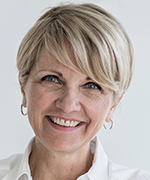
Complex interdisciplinary adult treatments
Ute E.M. Schneider
DDS University of Mainz, Germany
MSc in Orthodontics University of Ferrara, Italy
Since 1987 Private practice in Bolzano, Italy
Member of WFO, AAO, SIDO, ASIO, AIdOr
Active Member of the EHASO (Edward H. Angle Society of Orthodontists - Angle East),
Diplomate of the Italian Board of Orthodontists (IBO)
Since 2011 Adjunct professor at the Department of Orthodontics, University of Ferrara
2012 President AIdOr
2019/20 President Angle East
2010 Brainerd Swain Award of Excellence EHASO
Research Interests:
Very early orthodontic treatment
Treatment efficiency
Interdisciplinary treatment
Abstract
Adults patients affected by severe dentoskeletal malocclusions, multiple missing teeth, and periodontal involvement, require a well-orchestrated interdisciplinary team approach. The primary goal is to provide the restorative specialist with the best possible preconditions for the definitive prosthodontic rehabilitation.
In order to achieve an occlusally, periodontally, restoratively and economically realistic outcome, all alternative treatment options must be thoroughly evaluated and discussed with the entire team and the patient before embarking on the journey of a complex interdisciplinary treatment. Without sufficient knowledge about the latest developments in the complementary dental specialties, and consequent execution of the preestablished therapeutic protocol treatment efficiency is suboptimal. Apart from a highly skilled team of professionals. continuous patient motivation has to be assured in order to achieve the predicted outcome. An array of clinical patients will be presented to illustrate patient and team management for the complex interdisciplinary orthodontic patient.
Interdisciplinary Treatment
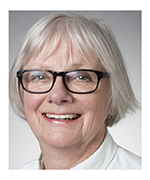
Regeneration of degenerated dentitions, together we can
Birte Melsen
| 1964 | DDS. Royal Dental College Aarhus Denmark |
|---|---|
| 1971 | Specialized in Orthodontics. |
| 1974 | Dr. Odont. At the University of Aarhus |
| 1975-2012 | Professor and Chairman of the Department of Orthodontics at The School of Dentistry, Aarhus University, Denmark. |
| 1986-2020 | Part-time in a private practice in Lubeck, Germany, limited to adult orthodontics. |
| 2015- | Visiting Professor NYU, New York, U.S |
| 2014- | Visiting professor Hannover Germany |
SELECTED AWARDS AND HONORARY DEGREES
| 1984 | Recipient of the Robert H.W. Strang Award in Orthodontics. |
|---|---|
| 1997 | Recipient of the American Association of Orthodontists Foundation, PARC. |
| 1999 | World SIDO prize, Rome, Italy. |
| 1999 | Recipient of the Ernest Sheldon Friel Memorial Award. |
| 2000 | Knighthood of Dannebrog, 1st Degree. |
| 2005 | Best Paper, European Journal of Orthodontics. |
| 2009 | Invited Presenter, Northcroft Memorial Lecture. |
| 2011 | Recipient of Gloria honorary doctorate the University of Krakow Polen |
| 2012 | Recipient of the Ryus Lecture Award, Coex Seoul, Korea |
| 2013 | Recipient of the Brainerd F. Swain Award of Excellence,US. |
| 2017 | Recipient Frankel Award German Orthodontic Society Bonn Germany |
| 2018 | Recipient of the Ketcham Award in Washington by AAO. |
| 2018 | Invited presenter of the H. Margolis Lecture Tuft University Boston |
| 2018 | Honorary member of the American University Beirut Libanon. |
| 2019 | Honorary president for the first World Orthodontic Biomechanic Symposium. Doha Qatar. |
Professor Melsen has authored more than 400 publications in the fields of growth based on research of human autopsy material, bone biology and clinical studies. In recent years her interests have focused on the Skeletal Anchorage, Virtual Imaging and Adult Orthodontic Treatment.
Abstract
While malocclusions can generally be treated by orthodontists alone treatment of degenerated dentitions in adult patients are requiring collaboration of several colleagues, periodontologists and prosthodontists being the most frequently involved. Important is that all aspects of the problem list and the treatment plan is taken into consideration and discussed among the involved dentists and the patient before initiating any treatment. The expectations, the resources regarding time and economy of the patient have to be clear as has the fact that maintenance of the treatment results is required after treatment. The adult patients often demand an aesthetic smile and her/his problem is often far from the main problem. The need and the demand differ.
While there is no relationship between gingivitis and periodontitis in young patients maintenance of the health of the gingiva during an orthodontic treatment of adult or even elderly patients is crucial and the risk of periodontal damage should not be underestimated.
The introduction of TADs have had a significant impact, changing the perspective of orthodontics. In relation degenerated dentitions the TADS have been important in the regeneration of lost alveolar bone.
First and foremost is that the result of an orthodontic treatment being part of a reconstruction is an occlusion that is compatible with a normal function and therefore is maintainable.
Open Bite Treatment
no img
Stability of open bite treatment with spur therapy
no img
Strategic approach to treat the open bite efficiently and to retain the stable result
no img
Open Bite: Are we treating the right causes?
Open Bite Treatment
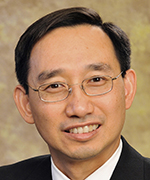
Results from the National Adult Anterior Openbite Study
Greg J Huang
Professional Experience and Education
| Professor & Chair University of Washington | 2011 to present |
| Chair, AAO Practice-based Research Network Committee | 2013 to 2015 |
| ADA CODA: Consultant for graduate orthodontics | 2008 to 2014 |
| Associate Editor, AJODO | 2004 to 2013 |
| PCSO representative to the AAO Council on Scientific Affairs | 2004 to 2013 |
| Member, Edward H. Angle Society | 2004 to present |
| Diplomate, American Board of Orthodontics | 1998 to present |
Textbooks: Orthodontics:
Current Principles and Techniques, 6th Ed. 2016
Evidence-based Orthodontics, 2nd Ed, 2018
| University of Washington | MPH received 2001 | Epidemiology |
| University of Washington | MSD received 1989 | Dentistry |
| University of Washington | Certificate received 1989 | Orthodontics |
| University of Florida | DMD received 1987 | Dentistry |
Honors and Awards
| 2020 | Jarabak Award |
|---|---|
| 2019 | Mershon Lecturer |
| 2015 | ADA Evidence-based Faculty Award |
| 2014 | PCSO Award of Merit |
Research Interests
Anterior Openbite
Long-term stability of orthodontic treatment
Third molars
White Spot lesions
Accelerated tooth movement
Evidence-based Orthodontics
Abstract
Dr. Huang will present findings from the National Adult Anterior Openbite Study, which was conducted in the National Dental Practice-Based Research Network. The study enrolled 91 practitioners and 347 patients from across the United States. Data was collected from 3 time points, initial, end-of-treatment, and up to one year post-treatment. Dr. Huang will describe the treatment recommendations for these adult patients, along with the facotrs related to these recommendations. He will then discuss the success rates associated with 4 major categories of treatment: aligners, fixed appliances, TADs, and orthognathic surgery, along with patient satisfaction at the end of treatment. He will also review the mechanism by which openbites were corrected using the 4 treatment categories, based on cephalometric analyses. The incisor, molar, and skeletal movements that accompanied different types of treatment were sometimes unexpected. Finally, he will present information on the stability of correction up to one year post-treatment, as well as long-term satisfaction.
Open Bite Treatment
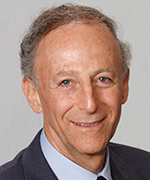
Stability of open bite treatment with spur therapy
Roberto Justus
PROFESSIONAL EXPERIENCE AND EDUCATION
| 2014 to 2019 | Adjunct Professor, AT Still Univ., Graduate Dept. of Orthodontics, Phoenix, AZ, USA |
|---|---|
| 2010 to 2015 | WFO President |
| 2007 to 2010 | Chair, WFO Orthodontic Boards Committee |
| 2005 | Examiner, Italian Board of Orthodontics |
| 2003 to 2004 | President, ABO College of Diplomates |
| 2002 to 2019 | Examiner, ABO |
| 1996 to 2019 | AJODO (reviewer) |
| 1995 to 1998 | President Latin American Assoc. of Orthodontists |
| 1994 to 2019 | Editorial Board Member: "Seminars in Orthodontics" and "Revista Clinica de Ortodontia" (Dental Press, Brazil) |
| 1990 | Diplomate ABO |
| 1988 to 2019 | Research Director, Graduate Dept. of Orthodontics, Intercontinental Univ., MEXICO |
| 1970 to 2019 | Professor orthodontics, School of Dentistry, Technological Univ. of Mexico, MEXICO |
| 1969 to 1970 | Professor graduate orthodontics, Dept. of Orthodontics, UNAM, MEXICO |
| 1968 | MSD, Dept. of Orthodontics, Univ. of Wash., Seattle, USA |
AWARDS
| 2018 | "Honorary Member Award", British Orthodontic Society |
|---|---|
| 2013 | "Louise Ada Jarabak Award", American Assoc. of Orthodontists Foundation |
| 2011 | "Dale B. Wade Award", ABO |
| 2007 | "Dentistry Distinguished Professor Award", Universidad Tecnologica de Mexico |
| 2002 | "National Orthodontic Excellence Award", Mexican Association of Orthodontists |
| 1993 | "Best Lecturer 1993 Meeting Award", Latin American Association of Orthodontists, Lima, Peru |
| 1966 | "Best Dental Student in Mexico Award", Diario de Mexico newspaper |
HONORS
| 2018 | WFO Executive Committee honored me for "Promoting the establishment of Orthodontic Certifying Boards around the world" |
|---|---|
| 2015 | Springer Publishing Co. honored me for authoring the orthodontic textbook: "Iatrogenic Effects of Orthodontic Treatment, Decision Making in Prevention, Diagnosis, and Treatment" |
| 2012 | Univ. of Wash honored me as "2012 Kokich Shapiro Visiting Scholar" |
| 2010 | Seminars in Orthodontics honored me as "Guest Editor" March 2010 issue |
| 2010 | Mexican Association of Orthodontists honored me naming its 2010 meeting as the "Roberto Justus 43rd Annual Meeting" |
| 2006 | Intercontinental Univ., Graduate Dept of Orthodontics, honored me for "Excellence as Professor and Research Director" |
RESEARCH INTERESTS
Clinical orthodontics
Abstract
The high relapse incidence of anterior open bite malocclusion is frequently due to an anterior tongue rest posture. A maxillary fixed intraoral appliance with spurs is recommended to modify tongue posture. Research with this appliance in a large sample of anterior open bite patients demonstrated long term stability post retention.
You will learn why:
-Long term stability of open bite closure is no better than 80%.
-Myofunctional therapy with oral exercises is ineffective in closing open bites.
-TADs used for anterior open bite closure might not have a stable outcome.
-Fixed intraoral spurs are recommended to establish a normal tongue rest posture (a new engram).
-Spurs modify tongue posture and also interrupt digit sucking habits.
-The anterior open bite closes with spurs, without using brackets or wires.
-Long term stability post retention is achieved when spurs are used.
-Spurs are indicated or contraindicated.
-Early correction of open bite protects roots from resorbing.
-Intraoral spurs do not provoke psychological problems.
You will learn the:
-Risk factors for anterior open bite.
-In office construction of the spur appliance.
Open Bite Treatment
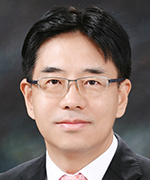
Strategic approach to treat the open bite efficiently and to retain the stable result
Tae-Woo Kim
Education
| 1983 - 1984 | Internship, Seoul National University, Dental Hospital |
|---|---|
| 1984 - 1986 | Residency, Seoul National University, Dental Hospital, Department of Orthodontics |
| 1986 | Master of Dental Surgery. Seoul National University, Graduate School |
| 1993 | Ph.D, Seoul National University, Graduate School |
Academic activities
| May 1990 - Mar. 1994 | Fellow Doctor, Department of Orthodontics, Seoul National University Dental Hospital |
|---|---|
| Mar. 1994 - Mar. 1996 | Full-time Lecturer, Department of Orthodontics, College of Dentistry, Seoul National University |
| April 1996 - Mar 2001 | Assistant Professor, Department of Orthodontics, College of Dentistry, Seoul National University |
| April 2001 - Mar 2004 | Associate Professor, Department of Orthodontics, College of Dentistry, Seoul National University |
| Dec. 1995 - Dec. 1997, Jul. - Sep. 2011 | |
| Visiting Professor, Department of Orthodontics, School of Dentistry, University of Washington | |
| Aug. - Oct. 2007 | Visiting professor, Department of Orthodontics, University of California, Los Angeles |
| April 1994 - Dec. 1995, April 1998 - Mar. 2002 | |
| Editor-in-Chief, Korean Journal of Orthodontists | |
| April 2014 - Mar. 2016 | President, Korean Association of Orthodontists |
Honors and Awards
Oct. 2017 Kwan Song Award, Korean Association of Orthodontists
Sept. 20-21, 2018 Kokich-Saphiro lecture, University of Washington
Research Interest
TMD, open bite, mini-implants and long-term stability
Abstract
Open bite has been one of interesting fields to me, since I started orthodontic residency in 1983. In my department, I have many open bite cases, especially with TMD, because they are referred from local clinics and other orthodontists. Seoul National University Dental Hospital is the final destination of problem cases in South Korea. I think more than 60 % of my patients are open bite cases.
Anterior open bite is a very challenging malocclusion even for excellent orthodontists. It is very difficult to diagnose differentially and to retain the post-treatment result well, because one case may have several etiologic factors. Since MRI and CT were used to screen the etiologic factors, I have realized once more that 'open bite' is one sign of different diseases caused by thumb sucking, tongue thrusting, low tongue posture, mouth breathing, macroglossia, temporomandibular disease and ankyloses of anterior teeth. It cannot be overemphasized to try to find and to remove the causing factors first. According to the causes the open bite should be treated differentially. In this lecture, the following contents will be presented.
1)Etiologic factors of open bite
2)How to find and resolve the etiologic factors
3)Mechanics to close the open bite efficiently
4)Strategies to obtain the long-term stability
Open Bite Treatment
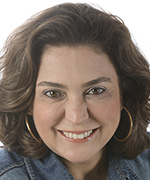
Open Bite: Are we treating the right causes?
Flavia Artese
Associate Professor of Orthodontics, Rio de Janeiro State University;
MSc and PhD in Orthodontics, Federal University of Rio de Janeiro;
Diplomate of the Brazilian Board of Orthodontics,
Member of the Angle Midwest Society,
Editor in Chief of the Dental Press Journal of Orthodontics,
Chair of the 10th International Orthodontic Congress.
Abstract
Anterior open bite is considered one of the malocclusions of most difficult treatment, especially regarding stability. The literature presents many researches on this subject, but with controversial information. There are disagreements on the definition of open bite, its etiology and types of treatment. Possibly, the lack of consensus on the etiology of the anterior open bite may have led to different types of treatment and can be the explanation for the high level of relapse of this malocclusion. The purpose of this presentation is to review the concepts of
anterior open bite focusing on etiology, treatment methods and their stability and present criteria for the diagnosis and treatment of this malocclusion, based in its etiology, with examples of treated cases, stable for over10 years.
Oral Physiology and Treatment
no img
Occlusal vulnerability: hypervigilance, neuroplasticity and adaptation
no img
Importance of occlusion and physiological significance of sleep bruxism
no img
Bruxism: an orthodontist's perspective
Oral Physiology and Treatment
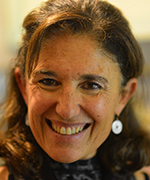
Occlusal vulnerability: hypervigilance, neuroplasticity and adaptation
Ambra Michelotti
Professional Experience and Education 2018 professor department of orthodontics university of Naples Federico 2001 2018 associate professor university of Naples Federico 1989 2000 assistant professor university of Naples Federico 1984 1988 fellowship university of Naples Federico 2012 2019 director orthodontics post graduated program 2003 2019 director master program in TMD and orofacial pain 2018 honorary degree university of Malmo Sweden 1984 degree in dentistry 1980 degree in biological sciences Honors and Awards principal investigator in national projects from 2018 editor in chief orthodontics and craniofacial research from 2007 associate editor european journal of oral sciences from 2008 associate editor journal of oral rehabilitation from 2010 editorial board european journal of orthodontics Research Interests ortodontics TMD orofacial pain
Abstract
Occlusion has been considered for years as one of the major aetiological factor causing Temporomandibular Disorders (TMD). Nevertheless, at now the associations reported are few, weak and not consistent across the studies. Hence at today, the role of occlusion in the aetiology of TMD has not been clearly addressed and therefore it should not be overstated. Actually, occlusion represents a highly complex specialized system of integration of neurological signalling originating from periodontal, dental, and soft tissue mechanoreceptors. This complex framework of information is continuously elaborated by the central nervous system, in order to adjust and refine jaw position and movements, according to peripheral inputs. Therefore, the board concept of occlusion does not involve only the peripheral input (the tooth to tooth contact), but also the way the same stimulus is interpreted by the brain of each individual. Hence, the central nervous system changes (sensorimotor neuroplasticity) are the major factors to determine how well an individual adapts to the occlusal and oral alteration that can result from any dental treatment.
Therefore, it seems crucial to correctly understand the connection between occlusion and TMD, but the paradigm shift requires moving to a more comprehensive interpretation of the occlusion and of the maxilla mandibular relationship. As no proven causal relationship exists, the role of malocclusion in the aetiology of craniomandibular disorders should be considered very limited. Instead, patients occlusal awareness and concerns have to be seriously accounted by clinicians during general and dental examination as specific group patients might develop iatrogenic maladaptive behaviours.
Oral Physiology and Treatment
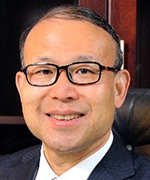
Importance of occlusion and physiological significance of sleep bruxism
Shouichi Miyawaki
Professional Experience and Education
| 2017-present | Vice President, Kyushu Orthodontic Society |
|---|---|
| 2016-present | Dean, Faculty of Dentistry, Kagoshima University |
| 2016-present | Councilor, Japanese Society for Jaw Deformities |
| 2011-2016 | Vice-Dean, Graduate School of Medical and Dental Sciences, Kagoshima University |
| 2014-2016, 2009-2011 | |
| Assistant Director, Kagoshima University Medical and Dental Hospital | |
| 2014-present | Editor in Chief, Orthodontic Waves (Official Journal of Japanese Orthodontic Society) |
| 2014-present Director | |
| Japanese Orthodontic Society | |
| 2009-present | Director, Japanese Cleft Palate Association |
| 2006-present | Director, Japanese Society of Stomatognathic Function |
| 2005-present | Professor and Chair, Department of Orthodontics & Dentofacial Orthopedics, Kagoshima University Graduate School of Medical and Dental Sciences |
| 2005-2017 | Academic Director, Kyushu Orthodontic Society |
| 2005 | Associate Professor, Okayama University |
| 2001-2002 | Visiting Research fellow, Montreal University |
| 1999-2005 | Lecturer, Okayama University |
| 1999-present | Part time Lecturer, Nara Medical University |
| 1997-1999 | Assistant Professor, Nara Medical University |
| 1994-1997 | Postdoctoral Fellow, Osaka University |
| 1994 | Ph.D., Osaka University Graduate School of Dentistry |
| 1989-1990 | Resident, Osaka University Faculty of Dentistry |
| 1989 | DDS, Osaka University Faculty of Dentistry |
Honors and Awards
| 2019, 2015-12, 2009, 2006, 2003 | ||
|---|---|---|
| Outstanding presentation award, Japanese Orthodontic Society | ||
| 1994 | IADR Unilever Travel Award | |
| 1989 | Yumikura Award, Osaka University | |
Research Interests
Relationship between sleep bruxism and gastroesophageal reflex (GER) :
Influence of a Proton Pump Inhibitor (PPI) on Sleep Bruxism
Influence of experimental esophageal acidification on Sleep Bruxism
Temporary Anchorage Device :
Evaluation of miniscrew stability
Development of an automatic embedding auxiliary skeletal anchorage device
Orthognathic function :
Jaw movement in patients with malocclusion
EMG in patients with malocclusion
Cleft Lip and Palate
Abstract
It is known that the risks of systemic disease increase by losing teeth, possibly due to periodontitis which closely relates with malocclusion and bruxism. Past studies have suggested that occlusion influences general health. Particularly, it was reported that patients with skeletal Class III had more gastroesophageal reflux disease (GERD) symptoms than normal subjects, possibly due to low salivation. Regarding sleep bruxism, several negative influences on the dentofacial region are known, including tooth wear, TMDs such as myofascial pain, hypertrophy of the masseter muscle, and grinding sounds leading to sleep disturbance of family members. At present, there is no causative treatment although teeth can be protected from bruxism by wearing a splint. A previous study in 2003 found that swallowing was related with sleep bruxism, which inspired the hypothesis that gastroesophageal reflux (GER) may cause sleep bruxism. Surprisingly, the associated factors of sleep bruxism and the associated factors of GER are nearly matched. After examining the relationship between sleep bruxism and GER, it was found that intra-esophageal acid stimulation, which was a model of gastroesophageal reflux (GER), caused more numbers of swallowing and bruxism episodes. In addition, the other previous studies revealed that esophageal acidification causes sleep bruxism in normal subjects, and that the administration of a PPI (gastric acid secretion inhibitor) reduced the frequencies of bruxism episodes. Recent meta-analysis revealed that GERD is the most associated risk factor of sleep bruxism in adults. This suggests that GER-caused bruxism may be a physiological response to protect the esophagus.
Oral Physiology and Treatment
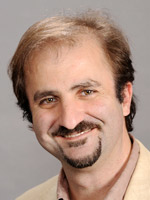
Bruxism: an Orthodontist's Perspective
Mauro Farella
Professional Experience and Education
| 2009 - present | Professor and Chair of Orthodontics, University of Otago, Dunedin, New Zealand. |
|---|---|
| 2017 - present | Deputy Director, Sir John Walsh Research Institute, Faculty of Dentistry, University of Otago. |
| 2013 - 2017 | Associate Dean Postgraduate Studies, Faculty of Dentistry, University of Otago |
| 2007 - 2009 | Senior Lecturer, Clinic for Masticatory Disorders, Center for Dental and Oral Medicine and Maxillofacial Surgery, University of Zurich (CH). |
| 2002 - 2007 | Senior Lecturer, Department of Orthodontics, University of Naples "Federico II", Italy. |
| 2009 - | Venia Legendi (PD), University of Zurich, Switzerland. |
|---|---|
| 2007 - | Specialization in Statistics in Medicine, University of Milan, Italy. |
| 2002 - | Specialization in Orthodontics, University of Naples Federico II, Italy. |
| 1998 - | PhD in Oral Sciences, University of Reggio Calabria, Italy. |
| 1993 - | DDS in Dental Surgery, University of Naples Federico II, Italy. |
Honors and Awards
| 2009 - | Certified Membership of the European Board of Orthodontists (Helsinki, Finland) |
|---|---|
| 2015 - | Alan Docking Science Award for outstanding scientific achievement in the field of dental research by the Australia New Zealand Division of the International Association for Dental Research. |
| 2015 - | Sir John Walsh Research Award for excellence in oral health research |
Research Interests
Clinical Orthodontics, TMJ/Oral Physiology, Translational Research
Abstract
Bruxism is a repetitive jaw-muscle activity with two distinct manifestations, awake bruxism and sleep bruxism. Awake bruxism, i.e. the habit to clench the teeth during daytime, could simply be a learned habit that increases in frequency and duration under certain conditions, such as stress and anxiety. Sleep bruxism is a 'sleep-related' motor activity that is commonly observed also in non-bruxers. This activity increases in frequency in the presence of some triggers, such as stressors, anxiety, smoking, caffeine intake, heavy alcohol drinking and medications.
The diagnosis of bruxism is challenging and self-reports of bruxism patients obtained during interviews may be invalid. Tooth wear is not a proof of ongoing SB bruxism because of the natural variability of bruxism and wear could have occurred in the past. It is also incorrect to related the severity of tooth wear to the severity of bruxism activity.
As the vast majority of bruxing episodes last only a few seconds, the total sleep bruxing time per night amount to a few minutes. This raises the question whether this intermittent and short-lasting muscle activity is sufficient to be so deleterious as normally thought by dentists.
Patients with awake bruxism or sleep bruxism may present to orthodontists posing some challenges for the treatment. What does an orthodontist need to know about bruxism, and what are the implications of bruxism for the management of orthodontic patients? This lecture will summarise our current understand of bruxism, from an orthodontist's perspective.
Obstructive Sleep Apnea
no img
Sleep Apnea and the Orthodontist
no img
Treatment Guideline for Adult obstructive sleep apnea Patients in Perspective of Sleep Function and Facial Aesthetics
Obstructive Sleep Apnea
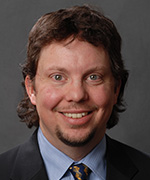
Sleep Apnea and the Orthodontist
Juan M. Palomo
Dr. Juan Martin Palomo is a professor and the Orthodontic Residency Director at Case Western Reserve University in Cleveland, Ohio. Dr. Palomo's contributions to craniofacial imaging, informatics, and airway analysis have been recognized through medical and dental research awards, national and international presentations, and numerous peer reviewed publications. At the American Association of Orthodontists (AAO) he is a member of the Council on Scientific Affairs, member of the AAOF Planning and Awards Review Committee, the AAO representative for the Imaging Gently Healthcare group, and past chair of the Committee on Technology. He is also the Associate Editor for the Innovations and Technology section of the AJODO. He was a member of the AAO task force that resulted in a white paper on sleep apnea and orthodontics. Dr. Palomo is a board certified orthodontist, and Angle Society member, and an active member of the American Association of Orthodontists, the American Academy of Oral and Maxillofacial Radiology, and the American Academy of Sleep Medicine.
Abstract
Traditionally we are trained to see and analyze the airway from only the lateral view on a cephalometric film. But the airway is a three-dimensional (3D) structure, and that third dimension may be hiding something relevant to our diagnosis. This presentation will highlight some of the airway research from Case Western Reserve University, and will show how different commercially available programs can be used to analyze the airway volumetrically, how the airway is different for different craniofacial situations, and what happens to the airway when we extract or expand as part of our treatment plan. With more than 80 respiratory disorders, the orthodontist can play a big role helping children and adults, specially regarding Obstructive Sleep Apnea (OSA). This presentation will show how the orthodontist can help identify and manage OSA in pediatric and adult patients, from using oral appliances, to surgical movement of the jaws, and newest hypoglossal stimulation methods. When moving from 2D to 3D, distances and angles turn into areas and volumes, and understanding the airway may take orthodontics to the next level, increasing the scope of what can be done clinically.
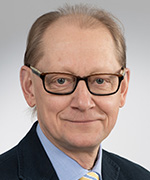
Sleep disordered breathing: effect on early occlusal and craniofacial growth and development
Timo Peltomaki
Professional Experience and Education
| 2017- | Professor, University of Eastern Finland, Kuopio, Finland |
|---|---|
| 2014- | Professor, Tampere University, Tampere, Finland |
| 2009- | Chief Dentist, Tampere University Hospital, Tampere, Finland |
| 2005-2009 | Professor, Department of Orthodontics and Pediatric Dentistry, University of Zurich, Switzerland |
| 2002 | Title of Docent, University of Turku, Turku, Finland |
| 1999-2000 | Research Fellow, Institute of Reconstructive Plastic Surgery, New York University, USA |
| 1993-1996 | Orthodontist, AlAjaji Dental Center, Riyadh, Saudi Arabia |
| 1993 | PhD, University of Turku, Turku, Finland |
| 1988 | Specialist in Orthodontics, University of Turku, Turku, Finland |
| 1982 | DDS, University of Turku, Turku, Finland |
Honors and Awards
| 2009 | Orthodontist of the Year, Finnish Orthodontic Society |
|---|---|
| 2019 | Distinguished Teacher Award, European Orthodontic Society |
Research Interests
Craniofacial growth and development
Sleep disordered breathing
Orthognathic surgery
Abstract
Sleep disordered breathing (SDB) describes a spectrum of conditions with increasing upper airway resistance. In its mildest form, patients exhibit snoring habit without daytime symptoms. With increase in airway resistance, this may gradually lead to a more severe disorder, obstructive sleep apnea (OSA).
Unrestricted breathing particularly during sleep is considered important for normal craniofacial and occlusal development. Maxillary transversal growth can be adversely affected, and mandibular forward displacement directed predominantly downwards, leading to increased lower facial height and convex profile. Most previous studies have included subjects with significant variation in age, which also means significant variation in occlusal status.
In our recent studies the aim has been to study association between varying severity of sleep disordered breathing (snoring and OSA) and development of occlusion, maxillary dental arch, and soft tissue profile in children with newly completed primary dentition.
It has been found that parent-reported snoring (≥3 nights/week) does not seem to be associated with adverse effect on the early development of primary dentition compared to non-snoring children. On the other hand, children with more severe SDB, i.e. OSA, have narrower upper inter canine width than non-snoring children already at the age of 3 years.
It seems that snoring as the first and mild sign of SDB may not have adequate functional, environmental impact on the occlusion during early occlusal, which capability OSA may have.
Obstructive Sleep Apnea
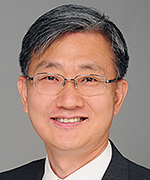
Treatment Guideline for Adult obstructive sleep apnea Patients in Perspective of Sleep Function and Facial Aesthetics
Seung-Hak Baek
DDS, MSD, PhD degrees from Seoul National University (SNU)
Intern and resident in the Department of Orthodontics, SNU Hospital.
Professor in the Department of Orthodontics, School of Dentistry at SNU
Visiting scholar at NYU, USC, LACH, CHOP, and UCLA in USA and TMDU in Japan
Vice president in the Korean Association of Orthodontists
Past immediate president of the Korean Cleft Lip and Palate Association
Member of the Editorial Review Board of Angle Orthodontist, American Journal of Orthodontics and Dentofacial Orthopedics, and European Journal of Orthodontics
Associate Editor in Progress in Orthodontics
Abstract
Obstructive sleep apnea (OSA) is a sleep disorder due to repetitive episodes of upper airway collapse. Several treatment modalities have been used for OSA patients including diet, exercise, sleep position change, nCPAP, nasopharyngeal soft tissue procedures, genioglossus advancement, oral appliances, rapid palatal expansion appliances, maxillomandibular advancement (MMA), hypoglossal nerve stimulation, and tracheostomy.
Conventional MMA (con-MMA) surgery can widen the cross-sectional area of the airway, decrease the airflow resistance and collapsibility of the airway during respiration, and eventually improve the airflow. However, if patients have protrusive lip, acute nasolabial angle, and small nose with low dorsum, 9-12 mm advancement of the maxillo-mandibular complex would result in esthetically unfavorable change in their facial profile. My colleagues and I have reported the concept of segmental MMA surgery (seg-MMA), which consists of (1) Le Fort I osteotomy and segmental osteotomy with advancement of the posterior segment of the maxilla, and (2) Bilateral Sagittal Split Ramus Osteotomy and segmental osteotomy with setback of the anterior segment and total advancement of the mandible. Indication of the seg-MMA procedure is OSA patients with a normally or forward positioned maxilla, labioversed maxillary incisors, a protrusive upper lip, and an acute nasolabial angle. The seg-MMA procedure with/without counterclockwise rotation might be an effective alternative to the con-MMA procedure for improving the sleep function and preventing aggravation of facial esthetics simultaneously.
Treatment modalities for OSA patients must be individualized according to age, body-mass index, airway obstruction site, degree of symptoms, severity of OSA parameters, and skeletodental and soft tissue patterns.
Patient’s Expectations and Treatment
no img
Patient Expectations and the Future of Orthodontics
no img
Great Expectations - understanding patient expectations in orthodontics
Patient’s Expectations and Treatment
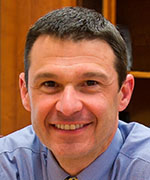
Patient Expectations and the Future of Orthodontics
Steven J. Lindauer
Professional Experience and Education
| 2012-Present | Editor, The Angle Orthodontist |
|---|---|
| 2000-Present | Professor and Chair, Department of Orthodontics, Virginia Commonwealth University |
| 1989-2000 | Professor, Associate Professor, Assistant Professor, Department of Orthodontics, Virginia Commonwealth University |
| 1986-1989 | MDentSci, Cert Orthodontic Postgraduate Program, School of Dental Medicine, University of Connecticut |
| 1982-1986 | DMD, School of Dental Medicine, University of Connecticut |
| 1978-1982 | BA, University of Pennsylvania |
Honors and Awards
| 2017 | Inducted into The International College of Dentists |
|---|---|
| 2009 | Inducted into The American College of Dentists |
Research Interests
Orthodontic Clinical Outcomes
Orthodontic Biomechanics
Abstract
The specialty of orthodontics is undergoing rapid transformation and the pace of change has left many orthodontists feeling uncertain and perhaps even afraid of what the future will hold. While scientific research and appliance innovations allow achievement of increasingly dramatic and precise dental movements, patients often request faster and more convenient treatment options that lead to compromised outcomes. Technological advancement, economic pressure, increased competition, and shifts in marketing make it difficult to predict where we are going. It is clearly established that most patients seek orthodontic treatment because they want their teeth and their smile to look better. Is it appropriate to set goals for orthodontic treatment if there are no confirmed detrimental effects caused by not meeting them? What do our patients expect from the orthodontic treatment they voluntarily seek, and how willing are they to accept compromises? The answers to these questions may shape the future of orthodontics as we adapt to a changing environment.
Patient’s Expectations and Treatment
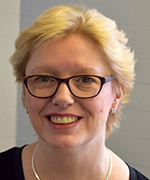
Great Expectations - understanding patient expectations in orthodontics
Susan J. Cunningham
Professional experience and education
| 2010 to date | Professor/ Honorary Consultant, UCL Eastman Dental Institute |
|---|---|
| 2007 to date | Programme Director, Postgraduate Orthodontic programme, UCL Eastman Dental Institute |
| 2001-2010 | Senior Lecturer/ Honorary Consultant, UCL Eastman Dental Institute |
| 1995-2001 | Lecturer, Eastman Dental Institute, London |
| 1992-1995 | Postgraduate/ Registrar, Eastman Dental Institute, London |
| 2000 | PhD University College London |
| 1988 | BChD Leeds University |
Honors and Awards
| 2020 to date | Director of Research, British Orthodontic Society |
|---|---|
| 2013-2017 | Director of Education, British Orthodontic Society |
| 2009-2020 | Honorary Secretary, European Orthodontic Society |
Research interests
Outcomes of orthodontic and orthognathic treatment
Psychological aspects of dentofacial concerns
Abstract
Understanding and managing patient expectations are fundamental aspects of any healthcare intervention, but are particularly important in elective treatments such as orthodontics.
This presentation will consider the importance of having a comprehensive understanding of patient expectations with respect to both the process and outcomes of orthodontic treatment, reflecting also on the relationship between expectations and patient satisfaction. The management of realistic and unrealistic expectations will be discussed, highlighting the importance of good communication if this is to be successful.
Problems in Orthodontic Treatment
no img
An evidence based approach to external apical root resorption
no img
Orthodontic Root Resorption : An Update for the Clinician
no img
Occlusal interferences: How do they influence the orthodontic tooth movement?
Problems in Orthodontic Treatment
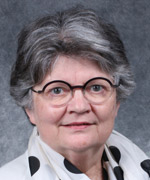
An evidence based approach to external apical root resorption
Anne Marie Kuijpers-Jagtman
Orthodontists are afraid of causing external apical root resorption (EARR) in their patients as an unwanted side effect of orthodontic treatment. About half of all orthodontically moved teeth show mild to moderate EARR (< 2.5 mm), but luckily only a small percentage end up with severe apical root resorption, defined as a loss of 4 mm of the original root length or more than a third of the root. On the other hand, on the microscopic level over 90% of all orthodontically moved teeth exhibit EARR.
The etiology of EARR is still not fully understood resulting in much uncertainty about how to prevent EARR and how to manage it when it occurs during orthodontic treatment. Furthermore, little is known about the long-term stability and prognosis of affected teeth, including their mobility, vitality, and periodontal status. Despite these uncertainties, patients need to be treated. The Dutch Association of Orthodontists took the initiative to develop a clinical practice guideline through a rigorous methodological approach to support clinicians in making treatment decisions and informing their patients.
Abstract
An evidence based approach to external apical root resorption
Problems in Orthodontic Treatment
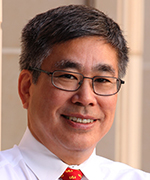
Orthodontic Root Resorption : An Update for the Clinician
Glenn Sameshima
Professional Experience and Education
| 2003-current | Chair and Program Director, USC Orthodontics |
|---|---|
| 2000-current | Associate Professor, Department of Orthodontics, Dept of Craniofacial Biology, University of Southern California, USA |
| 1994-2000 | Assistant Professor, Department of Orthodontics, University of Southern California, USA |
| 1991- | PhD, Craniofacial Biology, University of Southern California, USA |
| 1989- | Certificate, Orthodontics, University of Southern California, USA |
Honors and Awards
Research Interests
Orthodontic Root Resorption
Imaging of Orthodontic Root Movement
Digital Technology and Patient Education
Abstract
We all learned that every time we move a tooth, root resorption occurs. However it is reversible and temporary unless it starts at the root apex. Severe root resorption is fortunately rare but nevertheless is still an important consideration. This presentation will summarize what we currently know from all the different studies that have been done ranging from animal studies to theoretical models to genetic studies but mostly from clinical studies and clinical experience. Eight of the most frequently asked questions will be answered that will provide the clinician with the most up to date knowledge focusing mainly on clinical management of root resorption if found at progress or at the end, and which patients are at greater risk.
Problems in Orthodontic Treatment
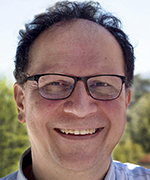
Occlusal interferences: How do they influence the orthodontic tooth movement?
Stavros Kiliaridis
Professional Experience and Education
Professor and Head, Dept. of Orthodontics, University of Geneva, Switzerland, 1999 until present.
Professor and Head, Dept. of Orthodontics, University of Athens, Greece, May 2008 to September 2009.
Associate Professor, Dept. of Orthodontics, Goteborg University, Sweden, 1990 to 1999.
Coordinator of specialist education in Orthodontics, Goteborg University, Sweden, 1996 to 1999.
Odont. Dr Ph.D. Dept. of Orthodontics, Goteborg University, Sweden, 1986.
Certificate in Orthodontics, Goteborg University, Sweden, 1984.
D.D.S. Graduation from the Dental School, University of Thessaloniki, Greece, 1979.
Honors and Awards
The European Orthodontic Society Essay Award, London, 1988.
Alton Moore Lecture, University of Washington, Seattle, USA, 2002.
Houston Award, Dudic, Giannopoulou, Kiliaridis, European Orthodontic Society, 2005
Senior Robert Frank Award, Clinical Research, Christou, Kiliaridis, IADR European Division, 2007
Senior Robert Frank Award, Clinical Research, Schimmel, Kiliaridis, Muller, IADR European Division, 2012
Sheldon Friel lecture, European Orthodontic Society, 2015
Coordinator of the European Orthodontic Teachers Forum 2007 to 2019.
President of the Network for Erasmus Based European Orthodontic Programmes, NEBEOP 2017 to 2019.
Research Interests
Clinical and experimental studies on masticatory function and craniofacial growth.
Methods to evaluate the functional capacity of the masticatory muscles.
Dentofacial growth and oral function in patients with Neuromuscular diseases.
Clinical and experimental studies on postemergent continuous tooth eruption.
Influence of functional appliances on dentofacial structures and masticatory muscles.
Over 220 research papers and book-chapters
Abstract
In a previous study (Dudic et al 2013) we found that during an experimentally induced orthodontic tooth movement the presence of interarch interferences decreased the amount of tooth displacement. In the treatment of Class II cases the shift of the molar occlusion from Class II to Class I is often essential to achieve an optimal treatment result. Our hypothesis was that the functional capacity of the masticatory musculature could be a predictive variable in determining the functional appliance treatment outcomes in Class II/1 malocclusion children. During the last decade, we tested this hypothesis in three different samples treated with Tween blocks, Schwarz activators and Andreasen activators, and we found that children with lower pre-treatment maximal molar bite force showed more mesial movement of mandibular first molars, distal movement of maxillary first molars, and larger change in molar class during treatment. Children with thinner pre-treatment masseter muscles demonstrated more mandibular first molar mesialisation and mandibular incisor proclination (Antonarakis, Kiliaridis, 2015, Antonarakis et al 2012, Kiliaridis et al 2010)
In conclusion, the initial condition of the masticatory muscles may partly determine treatment outcomes. Children with thinner pre-treatment masseter muscles or weaker bite force show greater dentoalveolar changes.
Periodontal Considerations
no img
Periodontal Considerations in Orthodontic Treatment
no img
Long-term development of gingival recession in orthodontically treated patients in comparison to untreated individuals
no img
Orthodontic treatment in patients with periodontal defects
Periodontal Considerations
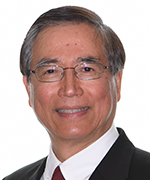
Periodontal Considerations in Orthodontic Treatment
Chun-Hsi Chung
Professional Experience and Education
| 2011-present | Chairman, Department of Orthodontics, University of Pennsylvania School of Dental Medicine, USA |
|---|---|
| 2003-present | Associate Professor, Department of Orthodontics, University of Pennsylvania School of Dental Medicine, USA |
| 2017-present | Postdoctoral Program Director, Department of Orthodontics, University of Pennsylvania School of Dental Medicine, USA |
| 2017-2018 | President, The American Board of Orthodontics |
| 2010-2018 | Director, The American Board of Orthodontics |
| 2010-2015 | Postdoctoral Program Director, Department of Orthodontics, University of Pennsylvania School of Dental Medicine, USA |
| 1996-2003 | Assistant Professor, Department of Orthodontics, University of Pennsylvania School of Dental Medicine, USA |
| 1992-2007 | Clinical Director, Department of Orthodontics, University of Pennsylvania School of Dental Medicine |
| 1992-1996 | Lecturer, Department of Orthodontics, University of Pennsylvania School of Dental Medicine, USA |
| 1992 | Orthodontic Certificate, Department of Orthodontics, University of Pennsylvania School of Dental Medicine, USA |
| 1992 | MS, University of Pennsylvania School of Dental Medicine, USA |
| 1986 | DMD, University of Pennsylvania School of Dental Medicine, USA |
Honors and Awards
| 2018 | The American Association of Orthodontists (AAO) Award- 2018 AAO Annual Session Doctors Program Co-chair |
|---|---|
| 2006 | The Orthodontic Faculty Development Fellowship Award- The American Association of Orthodontists Foundation |
| 2000 | The Orthodontic Faculty Development Fellowship Award- The American Association of Orthodontists Foundation |
| 1997 | The University of Pennsylvania Research Foundation Award |
| 1991 | The Research Award, Department of Orthodontics, University of Pennsylvania School of Dental Medicine, USA |
Research Interests
Craniofacial Growth and Development
Rapid Palatal Expansion
Adult Orthodontics
3D Imaging in Orthodontics
Abstract
Although periodontal implications of orthodontic treatment are well-understood, undesired consequences such as gingival recession, bone dehiscence, and fenestration are still commonly observed. Literature shows that there are anatomic and periodontal boundaries that limit the amount of acceptable tooth movement. In planning orthodontic treatment, it is important to consider periodontal susceptibility, gingival phenotype and morphology of alveolar bone. CBCT imaging is very useful in diagnosing maxillary and mandibular transverse skeletal dimensions, thickness of buccal or lingual bone, and buccolingual inclination of each tooth. Nowadays non-extraction modality has become popular in the treatment of crowded dentition with either traditional bracket systems or clear aligners. However, significant dental arch expansion and incisal proclination often take place, which may result in gingival recession and/or bone dehiscence. Extraction therapy sometimes is necessary to reposition the teeth in the center of the alveolar bone so the periodontal condition can be improved. For certain patients, soft tissue grafting and/or corticotomy in conjunction with bone grafting would be needed. To avoid excessive dental expansion, rapid palatal expansion with TADs can be attempted on young adults to treat narrow maxilla. However, for older adults surgically-assisted rapid palatal expansion or Le Fort 1 osteotomy would be required. In this presentation, the periodontics-orthodontics interdisciplinary treatment approach to maintain the periodontal integrity, minimize future periodontal concerns, and allow efficient orthodontic treatment will be delineated.
Periodontal Considerations
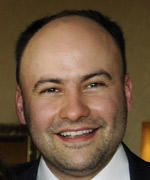
Long-term development of gingival recession in orthodontically treated patients in comparison to untreated individuals
Dimitrios Kloukos
Department of Orthodontics and Dentofacial Orthopedics, University of Bern, Switzerland
Gingival recession refers to the apical displacement of the gingival margin from the cemento-enamel junction. Recessions can be localized or may involve more teeth or tooth surfaces.
A possible etiological factor is orthodontic movement of teeth, especially the movement of teeth to positions outside the labial or lingual alveolar plate, which could lead to development of dehiscence. The precise mechanism by which orthodontic treatment influences the occurrence of recessions remains unclear. It has been assumed that the presence of bony dehiscence
before the beginning of orthodontic therapy is a prerequisite for the development of gingival recession. Nevertheless, bony dehiscence development during orthodontic treatment, per se, does not always lead to recession; thus other factors must also be of importance.
This presentation will demonstrate the existing evidence on orthodontically induced gingival recessions stemming from observational studies and will report the results of the first prospective study on the field: a 3- year, parallel- group, prospective cohort study that has evaluated possible development of gingival recessions on orthodontically treated patients
compared to an untreated group of individuals.
The primary objective of the presentation is to illustrate the evidence on whether or not orthodontic treatment is associated with the development of gingival recessions in the long-term and to document possible periodontal factors that are link ed with gingival recessions during or after orthodontic therapy.
Periodontal Considerations
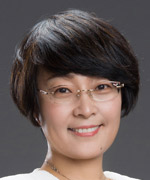
Orthodontic treatment in patients with periodontal defects
Weiran Li
Department of Orthodontics, School of Stomatology, Pek ing University
orthodontic treatment is based on the reaction and modeling of periodontal tissue. Therefore, the condition of periodontal tissue is one of the the important factors wich orthodontist must tak e into serious consideration.
Adults account for 50% of all orthodontic patients in our clinic. The prevalence of periodontitis in adults is nearly 9 0% in China. The destruction and loss of periodontal tissues decrease the resistance of teeth to mechanical force and increase the risk of orthodontic tooth movement. In addition, some patients have periodontal defects, with insufficient height and thick ness of the alveolar bone as well as thin and narrow k eratinized gingiva, which are lik ely to cause root exposure after tooth orthodontic treatment.
The Smile
no img
Vertical dimension and facial Aesthetics
no img
What about Adult Class II's: Some Thoughts...
no img
Gummy smile correction
The Smile
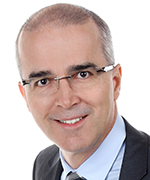
Vertical Dimension and Facial Aesthetics
Sylvain Chamberland
Education
| 2008- | M.Sc. degree, Laval University, Quebec city |
|---|---|
| 1990- | Certificate in Orthodontics, Montreal University, Montreal |
| 1983- | DDS degree, Laval University, Quebec city |
Professional experience
| 1990 to date- | Private practice in orthodontics, Quebec city |
|---|---|
| 2009, 2014 to 2020- | Guest lecturer at the AAO annual meeting |
| 2015- | Guest lecturer at Journee de l'Orthodontie Francaise, Paris |
| 1991 to 2008- | Clinical intructor and lecturer in orthodontics, DDS undergraduate program, Laval University, Quebec city |
| 1984 to 1988- | Clinical instructor in prosthodontics, DS undergraduate program, Laval University, Quebec city |
| 1983 to 1988- | Private practice in general dentistry, St-Damien, PQ. |
Recognition
| 2017- | Main speaker at the Congress of the German Orthodontic Society, Bonn, Germany |
|---|---|
| 2014- | The Brainerd F. Swain Award of Excellence for Best Paper presented at the annual Angle East meeting (Functional Genioplasty in Growing Patients) |
| 2007- | Member of the EHASO Eastern Component (membership process 2003 to 2006) |
| 1997- | Fellow of the Royal College of Dentist of Canada (FRCDC) |
| 1995- | Diplomate of the America Board of Orthodontics |
Publication
Progressive idiopathic condylar resorption: Three case reports, AJODO 2019, 156:531-544
A la memoire de WIlliam R. Proffit, Orthod Fr, 2018, 89:323-326
Genioplastie fonctionnelle chez les patients en croissance, Ortho Fr, 2016, 87:175-188
Response to: Functional genioplasty in growing patients by Chamberland et al, 2015, 85, 6:1083
Functional genioplasty in growing patients, Angle Ortho, 2015, 85:360-373
Long-term dental and skeletal changes following SARPE, letter to the editor, OOOO 2013, 116: 120-121
Short-term and long-term stability of SARPE revisited, AJODO 2011, 139:815-822 e811.
Closer look at SARPE, JOMS 2008, 66:1895-1900
Research interest
Orthognatic surgery
TADs skeletal anchorage
TMJ arthritis, condylar resorption
Abstract
Patients with long anterior face height and anterior open bite often require a surgical approach to correct the vertical dimension. Temporary skeletal anchorage devices now offer the possibility of closing anterior open bite and reducing vertical dimension by intruding posterior teeth. Conversely, patients with reduced anterior facial height (short face syndrome) need elongation of the vertical dimension. In such case, orthognathic surgery is unavoidable if one wants to obtain normal vertical dimension. Review of the literature and case presentation will help to understand the biomechanics and treatment planning of these malocclusion.
Learning objectives
Attendees of this lecture will be able to:
1-Determine TADs placement to achieve intrusion of the buccal segment to close an open bite
2-Assess treatment goal to obtain normal vertical dimension
3-Understand mechanics to increase vertical dimension prior to orthognathic surgery for short face syndrome.
The Smile
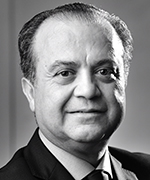
What about Adult Class II's: Some Thoughts...
Joseph P. Bouserhal
TITLES
- Professor of Orthodontics and Research Lab Director, Saint Joseph University of Beirut, Lebanon
- Adjunct Clinical Professor, Boston University, USA
- Member, Angle Society of Orthodontists, East Component, USA
- Member, Tweed Foundation for Orthodontic Education and Research, USA
- Executive Committee Member, World Federation of Orthodontists
DEGREES
- Doctor in Dental Surgery, Saint Joseph University of Beirut, Lebanon
- Master Degree in Orthodontics, Catholic University of Louvain, Belgium
- Doctorate Degree, University of Liege, Belgium
- Diploma of Specialist in Lingual Orthodontics, Paris 7 University, France
- Diploma in Dental Clinical Research, Toulouse University, France
- Diploma in 3D Imaging, Toulouse University, France
- Diploma in Sleep Dental Medicine, Paris 7 University, France
Abstract
Class II malocclusion is considered one of the most common problems to solve in orthodontics. Differential diagnosis constitutes the main pillar in addressing such deformations in order to be able to apply individualized therapeutic procedures.
Based on the above, each Class II has to be correctd differently and no cookbook to follow exists. A thinking classifying dento-alveolar, skeletal and soft tissue components as well as identifying maxillary from mandibular etiology has to be developed and applied.
This presentation will expose an Individualized Orthdontic Philosophy applied to Class II adult cases through differential diagnosis and individuallized treatment planning.
The Smile
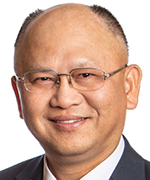
Gummy smile correction
Chris Chang
Dr. Chris Chang is the founder of Beethoven Orthodontic Center and Newton's A Inc. in Hsinchu, Taiwan. He received his PhD in Bone Physiology and Certificate in Orthodontics from Indiana University. He is a diplomate of the American Board of Orthodontics and an active member of Angle Society-Midwest. Dr. Chang is the publisher of Journal of Digital Orthodontics and has authored and co-authored many orthodontic books, including Orthodontics Vols. 1-6, as well as Words of Wisdom, Jobsology and Trumpology. He is the inventor of OrthoBoneScrews(OBS).
Abstract
Maxillary whole arch intrusion and retraction by Temporary Anchorage Devices (TADs) has been proved to be an effective way to improve the esthetics of gummy smile. This lecture will present the diagnosis and treatment planning of gummy smile. Detailed mechanics and screw insertion techniques will be introduced. The rationales for surgical crown lengthening to enhance the anterior esthetics will also be discussed.
Orthognathic Surgery
no img
Adjuncts in orthognathic surgery to enhance facial esthetics
no img
21st Century Orthognathic Surgery: Using Historical Principles to Advance the Boundary
no img
3D planning in Orthodontics and Orthognathic Surgery
Orthognathic Surgery
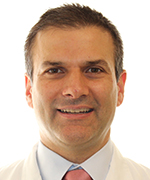
Adjuncts in orthognathic surgery to enhance facial esthetics
Flavio Uribe
Professional Experience and Education
| 2018-2019 | Interim Chair, Division of Orthodontics, University of Connecticut Health |
|---|---|
| 2009-2019 | Associate Professor, Division of Orthodontics, University of Connecticut Health |
| 2005-2019 | Residency Program Director, Division of Orthodontics, University of Connecticut Health |
| 2004-2012 | Clinic Director, Division of Orthodontics, University of Connecticut Health |
| 2002-2009 | Assistant Professor, Division of Orthodontics, University of Connecticut Health |
| 1999-2002 | Master's and Residency Certificate, Dental Science, Orthodontics, University of Connecticut Health |
| 1997-1999 | Certificate (Fellowship), Advanced Education in General Dentistry, University of Connecticut Health |
| 1996-1997 | Residency Certificate Advanced Education in General Dentistry, University of Connecticut Health, |
| 1989-1993 | D.D.S., Dental Science, Instituto de Ciencias de la Salud (Medellin, Colombia) |
Honors and Awards
Diplomate of the American Board of Orthodontics, 2005 and 2019
Inducted to the Angle Society of Orthodontists
Faculty Award, 2007
Office of Diversity, University of Connecticut Health
Induction, Phi Chi Chapter of Omicron Kappa, 2009
Upsilon Honor Dental Society
Professorship, 2012
Charles Burstone Professor
University of Connecticut Health
Second Place, Charley Shultz Competition
American Association of Orthodontists Annual Meeting, Basic Science
Granted to the best research posters among the US and Canada Graduate Orthodontic Programs (Dr. Christopher Murphy). "Effect of corticision and different force magnitudes on orthodontic tooth movement in a rat model."
Award of Excellence in Research
Japanese Orthodontic Society
Awarded to orthodontic fellow Dr. Jun Nihara for poster "Finite element analysis of mandibular molar protraction with sliding mechanics and orthodontic anchor screw."
Biomedical Research Award
American Association of Orthodontists 2012 and 2019
Research Interests
Orthognathic surgery, biology of tooth movement, biomechanics, TADs
Abstract
Orthognathic surgery has been used as an approach to correct significant dentofacial deformities. Orthognathic surgery primarily addresses jaw discrepancies in the 3 planes of space improving the facial esthetics and occlusion. However, in some instances the surgery may negatively affect some facial elements such as the nose or in some instances may not obtain the optimal facial esthetics such as addressing malar deficiency. Complementing the bimaxillary movements with esthetic adjuncts maximizes the facial esthetics results from orthognathic surgery.
This lecture will highlight the combination of orthognathic surgery with adjunct surgical procedures such as mandibular angle, malar, and chin implants, microfat grafting and lipectomies. Rhinoplasties a few months after the surgical procedure will be discussed as an option to refine the surgical outcomes. The virtual planning, sequence of procedures and execution of the surgery will be presented.
Orthognathic Surgery
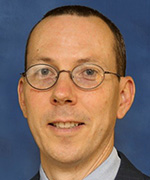
21st Century Orthognathic Surgery: Using Historical Principles to Advance the Boundary
R. Scott Conley
Professional Experience and Education
| 2016-2019 | University at Buffalo Department of Orthodontics LB Badgero Endowed Associate Professor & Chair |
|---|---|
| 2012-2016 | University of Michigan School of Dentistry Dept. of Orthodontics and Pediatric Dentistry Robert W. Browne Endowed Prof and Clinical Associate Professor |
| 2008-2011 | University of Michigan School of Dentistry Dept. of Orthodontics and Pediatric Dentistry Clinical Associate Professor |
| 2006-2008 | University of Michigan School of Dentistry Dept. of Orthodontics and Pediatric Dentistry Clinical Assistant Professor |
| 2001-2006 | Vanderbilt University Medical Center Dept. of Oral Surgery Division of Orthodontics Assistant Professor |
| 1999-2001 | Vanderbilt University Medical Center Dept. of Oral Surgery Division of Orthodontics Instructor |
| 1996-1999 | Vanderbilt University Medical Center Orthodontic Certificate |
| 1992-1996 | University of Pennsylvania School of Dental Medicine Doctor of Dental Medicine DMD |
| 1988-1992 | Hamilton College Bachelor of Arts Chemistry |
Honors and Awards
| 2016-2017 | Chair AAO Council on Education |
|---|---|
| 2016-2019 | Chair AAO Annual Session Advisory Committee |
| 2016-2019 | LB Badgero Endowed Associate Professor |
| 2016-2017 | AAO Society of Orthodontic Educators-Immediate Past President |
| 2015-2016 | AAO Society of Orthodontic Educators-President |
| 2014-2015 | AAO Society of Orthodontic Educators-President Elect |
| 2011-2016 | Robert W. Browne Endowed Professor of Dentistry |
| 2007 | E. H. Angle Association 2007 Research Award |
| 2007 | AJO-DO CDABO Case Report of the Year |
| 2005 | E. H. Angle Association 2005 Research Award |
Research Interests
Orthognathic Surgery
Obsructive Sleep Apnea
3D Cone beam computed tomography CBCT
Abstract
This lecture will present historical principles from both oral surgery and orthodontic treatment planning. The presentation will focus on enhanced diagnostic and virtual treatment planning protocols, as well as unique and customized treatment strategies. These advances combine the best facets of both the surgical and orthodontic disciplines to optimize treatment efficiency and outcomes. Principles of how to avoid complications, proper management of complications when they do occur, and application of new technologies to assist in resolving complications will also be presented. When orthodontists and surgeons work collaboratively and think outside the box, patients with severe skeletal dysplasia receive the best treatment currently available and push the boundaries to advance both specialties.
LEARNING OBJECTIVES
Compare and contrast two dimensional 2D and three dimensional 3D surgical orthodontic treatment planning.
Describe a broad spectrum of surgical interventions.
Describe orthodontic mechanics and TADs to enhance the pre-surgical preparation.
COURSE BENEFITS
Understand the benefits of computer aided surgical simulation CASS to both the provider and the patient.
Understand how to adjust the time of surgical intervention to the individual case needs.
Understand the evidence for surgical orthodontic treatment decisions.
Orthognathic Surgery
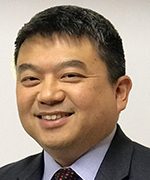
3D planning in Orthodontics and Orthognathic Surgery
Chung How Kau
Dr Kau is Chairman and Professor in Orthodontics at the University of Alabama Birmingham.
Abstract
This lecture will discuss the use of 3D planning in Orthodontics and Orthognathic Surgery. New technology allows for better efficiency and effectiveness for our patients. Communication with the surgeon is enhanced and the agreement of the surgical plan is more predictable. Advantages and Disadvantages will also be discussed.
Temporary Anchorage Devices
no img
Safety placement of orthodontic anchoring screws
no img
How has skeletal anchorage changed the orthodontic strategies for Class III correction in adults?
Temporary Anchorage Devices
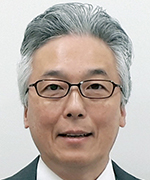
Safety placement of orthodontic anchoring screws
Mitsuru Motoyoshi
Professional Experience and Education
| 2018 | Professor and Chair, Department of Orthodontics, Nihon University School of Dentistry, Japan |
|---|---|
| 2009 | Associate Professor, Department of Orthodontics, Nihon University School of Dentistry |
| 2004 | Assistant Professor, Department of Orthodontics, Nihon University School of Dentistry |
| 1996 | Visiting researcher, Alabama University in Birmingham, AL, USA |
| 1984 | DDS, Nihon University School of Dentistry at Matsudo |
Honors and Awards
Outstanding Presentation Award, Japanese Orthodontic Society, 2014, 2015, 2017.
Outstanding Presentation Award, Japan Implant Orthodontic Conference 2016.
Research Interests
Basis and Clinical Practice of Orthodontic Anchoring Screws
Abstract
Orthodontic treatment has been advanced by the use of orthodontic anchoring screws (OASs); however, OASs are occasionally loosened during treatment. We then investigated the risk factors for failure of OASs to improve the success rate, and found that the primary stability of OASs is related to the mechanical characteristics of the interface between the OASs and bone in relation to factors such as bone quality and quantity, screw design, placement torque, age, gender and placement site. In this presentation, certain and safety placement techniques for improving the success rate will be discussed in the search for the risk factors for failure.
On the other hand, physical knowledge and comprehension are required for realizing the effective tooth movement using OASs. Mechanics for effective tooth movement will be then also discussed using OASs placed into buccal alveolar bone and palate in this presentation.
Skeletal anchorage plates are used to distalize the entire dental arch. However, surgery is needed to place the anchorage plate, and this places a considerable burden on the patient. For this reason, OASs are frequently placed in the palatal bone instead of the anchorage plate. Palatal OASs are placed in the palatal alveolar bone, median palate, and so on, making it possible to avoid root contact. Also, the stiff palatal bone enables stable placement of palatal OASs. I would like to examine the effect of palatal OASs on tooth movement and the optimum placement technique in terms of safety.
Temporary Anchorage Devices
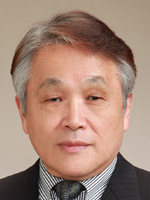
How has skeletal anchorage changed the orthodontic strategies for Class III correction in adults?
Junji Sugawara
Professional Experience and Education
| 2017-2019 | Director, Department of IDT, Sendai Aoba Clinic, Japan |
|---|---|
| 2007-2016 | Director, Department of Orthodontics, sendai Aoba Clinic, Japan |
| 2006-2019 | Visiting Clinical Professor, Department of Orthodontics, University of Connecticut, USA |
| 1991-2006 | Associate Professor, Department of Orthodontics, Tohoku University Graduate School of Dentistry, Japan |
| 1989-1991 | Instructor, Department of Orthodontics, Tohoku University Graduate School of Dentistry, Japan |
| 1973-1998 | Assistant Professor, Department of Orthodontics, Tohoku University Graduate School of Dentistry, Japan |
| 1981 | DDSc, Tohoku University, Japan |
Honors and Awards
| 2013 | The Vasavi Memorial Oration, The Indian Orthodontic Conference |
|---|---|
| 2011 | The Northcroft Memorial Lecture, The British Orthodontic Conference |
| 2007 | The BF and Helen E Dewel Research Award, AJO-DO |
| 2005 | The World Champion Lecturer Representing The Central and Eastern Asia, The 6th International Orthodontic Congress |
Research Interests
Temporary Anchorage Devices
Abstract
The Skeletal Anchorage System (SAS) consists of titanium orthodontic anchor plates and monocortical screws that are temporarily implanted in the zygomatic buttress or the mandibular body, or in both, as absolute orthodontic anchorages. The most distinguished feature of SAS is enables us to predictably move molars. The SAS mechanics has revolutionized the concept of orthodontic and orthognathic treatment for adult patients. In this conference, I will focus on Class III patients and discuss how the strategies for Class III correction were changed following the development of SAS. Firstly, it became possible to effectively camoufalge severe Class III maloclusion in adults by distalization of the mandibular molars and/or entire dentition. Secondly, thanks to the development of SAS, it became possible to eliminate or shorten pre-surgical orthodontic treatment and significantly reduce total treatment time in Class III surgical cases. Thirdly, in moderate or severe growing Class III patients, SAS is an extremely effective biomechanics for solving various problems in the second phase treatment. Therefore, the second phase treatment for non-growing patients became more important than the first phase treatment. Thus, nowadays, the SAS becomes an indispensable modality for correction of any Class III malocclusions in my clinical practice.
TMJ
no img
The Mechanism of Degenerative Changes in Temporomandibular Joint and Possible Approach for Orthodontic Treatment
no img
Idiopathic Condylar Resorption: Current Approaches to Diagnosis and Management
TMJ
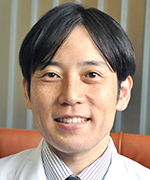
The Mechanism of Degenerative Changes in Temporomandibular Joint and Possible Approach for Orthodontic Treatment
Kotaro Tanimoto
Professional Experience and Education
| 2016 - 2019 | Vice dean, Hiroshima University School of Dentistry, Japan |
|---|---|
| 2016 - 2019 | Section chief , Hiroshima University Hospital, Division of Speech therapy, Japan |
| 2016 - 2019 | Section chief, Hiroshima University Hospital, Cleft and Craniofacial Center, Japan |
| 2013 - 2019 | Professor, Department of Orthodontics and Craniofacial Developmental Biology, Hiroshima University Graduate School of Biomedical Sciences, Japan |
| 2009 - 2012 | Lecturer, Hiroshima University Dental Hospital Department of Oral Health Development Orthodontics, Japan |
| 1999 - 2008 | Assistant Professor, Department of Orthodontics and Craniofacial Developmental Biology, Hiroshima University Graduate school of Biomedical Sciences, Japan |
| 2001 | Ph.D, Hiroshima University Post Graduate Education of Dental Sciences |
| 1995 - 1999 | Resident, Department of Orthodontics, Hiroshima University Dental Hospital, Japan |
| 1992 - 1995 | Associate dentist, Akabane Dental Clinic, Tokyo, JAPAN |
| 1992 | DDS, Faculty of Dentistry, Hiroshima University |
Honors and Awards
| 2019 | Best Poster Presentation Award, Japanese Society for the Temporomandibular Joint |
|---|---|
| 2019 | Excellent Posterboard Presentation Award, Korean Association of Orthodontics |
Research Interests
Temporomandibular disorders
Abstract
Temporomandibular disorders (TMDs) are frequently accompanied with malocclusion in orthodontic patients. Severe mandibular condylar resorption causes retrusion and deviation of the mandible, leading to the onset and progress of malocclusions such as skeletal open bite. In our department, if TMDs are diagnosed during the initial clinical examination of malocclusion patients, Temporomandibular joint (TMJ)-MRI is taken as a general rule. In cases where mandibular condylar deformity is suspected, orthodontic treatment will not start unless the condylar resorption abates.
The pathogenic mechanism of TMDs has been studied to establish safe and reliable orthodontic treatment procedure for patients with malocclusion accompanied by TMD. Although the detailed mechanism of TMDs pathology still remains unclear, inflammation in the synovial membrane and condylar cartilage has been believed to play a crucial role in the incidence of severe TMDs such as osteoarthritis (OA). TMJ-OA is characterized by degenerative joint changes such as deterioration and abrasion of the articular cartilage, and occurrence of thickening and remodeling of the underlying bone. Several cytokines were detected in the synovial fluid in patients with TMJ-OA, and induce matrix metalloproteinases:MMPs. These enzymes cause breakdown of condylar cartilage, resulting in further deterioration of the lubricating and buffering function of TMJ. Recently, details of the mechanism by which an inflammatory response is induced through mechanoreceptors that receive an excessive mechanical load has been clarified.
In this presentation, the molecular mechanism of condylar resorption will be considered based on the basic research and clinical data for the past 28 years.
TMJ
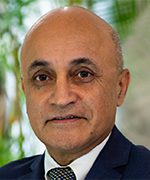
Idiopathic Condylar Resorption: Current Approaches to Diagnosis and Management
Sunil Kapila
Professional Experience and Education
| 1977-1981 | University of Nairobi, Kenya, Bachelor of Dental Surgery |
|---|---|
| 1984-1987 | University of Oklahoma Health Sciences Center, MS & Certificate of Specialization in Orthodontics |
| 1987-1994 | University of California San Francisco, Ph.D. in Oral Biology |
| 1993-1999 | Assistant Professor, Department of Growth and Development, UCSF |
| 1999-2004 | Associate Professor, Department of Growth and Development, UCSF |
| 2000-2004 | Eugene E. West Endowed Chair, Division of Orthodontics of Orthodontics, UCSF |
| 2004-2016 | Robert W. Browne Endowed Professor of Orthodontics and Chair, Department of Orthodontics and Pediatric Dentistry, University of Michigan |
| 2016-Present | Professor and Eugene. E. West Endowed Chair of Orthodontics, UCSF |
| 2017-2019 | CEO and Chief Dental Officer, UCSF Dental Center, UCSF School of Dentistry |
Honors and Awards
| 1984-1987 | Fulbright Hayes Scholarship |
|---|---|
| 1987-1992 | Dean's Fellowship, School of Dentistry, UCSF |
| 1989-1990 | Regents Fellowship, UCSF |
| 1993 | Hatton Award Winner, American Association for Dental Research |
| 1995 | Milo Hellman Research Award, AAO |
| 1999 | B.F. Dewel Honorary Research Award, AAO Foundation |
| 2007 | Outstanding Alumnus Award, Department of Orthodontics University of Oklahoma College of Dentistry |
| 2012 | 16th Annual Robert E. Moyers Memorial Lecture, Ann Arbor, MI. |
| 2013 | Salzmann Lecture, Annual Session of the AAO, Philadelphia, Penn |
| 2013 | Fellow of the International College of Dentists |
| 2015 | 150th Anniversary Alumni Excellence Award Recipient, UCSF |
| 2018-2019 | Burstone Fellow in Biomechanics, AAO Foundation |
Research Interests
Hormonal Pathobiology of TMJ Degeneration
Biomodulation of Tooth Movement and Root Resorption in Orthodontic Therapy
Cone Beam Computed Tomography and 3D Imaging
Abstract
The pre-treatment or in-treatment identification of patients undergoing idiopathic condylar resorption of the TMJ and their management remains one of the biggest challenges in orthodontics. Frequently, because these joint resorptive events and associated adverse dental and skeletal alterations occur during orthodontic treatment, the concomitant compromised function and facial changes are often attributed to the orthodontic therapy itself. Much is still unknown about these perplexing conditions. In his presentation, Dr. Kapila will discuss the current understanding of the pathogenesis, diagnosis and management of idiopathic condylar resorption, including that which may occur during juvenile idiopathic arthritis. Early recognition through careful history taking and clinical examination together with newer diagnostic methods using 3D imaging and biomarkers and constant monitoring can help mitigate some of the challenges arising during orthodontic treatment. Alternatively, these findings can be used to defer treatment of these patients until stabilization occurs. Specific radiographic and other features that indicate cessation of the disease process are a prerequisite for initiating orthodontic therapy. Dr. Kapila will also discuss a range for patient-specific treatment options for individuals presenting with different phenotypic and degenerative TMJ findings in idiopathic condylar resorption ranging from conservative management to orthognathic surgery.
Rising Stars
no img
An orthodontist tale of cellular plasticity and stem cell activation in skeletal development and regeneration
no img
Identification of gene mutations in oligodontia patients and in vivo functional analysis of genes using genome editing technology
Rising Stars
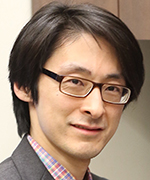
An orthodontist tale of cellular plasticity and stem cell activation in skeletal development and regeneration
Noriaki Ono
Professional Experience and Education
| 2014 - 2020 | Assistant Professor, Department of Orthodontics & Pediatric Dentistry, University of Michigan School of Dentistry, Ann Arbor, MI, USA |
|---|---|
| 2012 - 2014 | Instructor, Endocrine Unit, Massachusetts General Hospital and Harvard Medical School, Boston, MA, USA |
| 2009 - 2012 | Research Fellow, Endocrine Unit, Massachusetts General Hospital and Harvard Medical School, Boston, MA, USA |
| 2007 - 2009 | Clinical Fellow in Orthodontics, Tokyo Medical and Dental University, Tokyo, Japan |
| 2007 | PhD, Tokyo Medical and Dental University, Tokyo, Japan |
| 2003 | DDS, Tokyo Medical and Dental University, Tokyo, Japan |
Honors and Awards
| 2017 | Most Outstanding Basic Abstract Award, American Society for Bone and Mineral Research |
|---|---|
| 2012 | Young Investigator Award, American Society for Bone and Mineral Research |
| 2011 | Gideon and Sevgi Rodan Fellowship Award, International Bone and Mineral Research |
| 2003 | Nagao Academic Award (for summa cum laude), Tokyo Medical and Dental University |
| 2003 | Kobayashi Ikueikai Award (for excellence in clinic), Tokyo Medical and Dental University |
Research Interests
Skeletal stem cells and bone regeneration
Mechanism of bone development
Growth plate and cartilage biology
Abstract
Orthodontists can do amazing things for bones and teeth, but what is actually going on? I have been asking the fundamental question about special bone cells called skeletal stem cells, and what these cells do for us over the last decade. Skeletal stem cells are the cells that can produce a variety of bone cells with important functions in bone health and diseases. Our recent findings are beginning to unravel their unique properties: these stem cells are diverse, malleable and local in nature. For example, we have identified skeletal stem cells in the resting zone of the growth plate cartilage - these stem cells look exactly like chondrocytes that usually make cartilages, but acquire special features of life-long self-renewal. The question is how a small number of skeletal stem cells are maintained in adulthood: our more recent findings point to the possibility that some types of functionally dedicated mature bone cells, such as those residing in bone marrow space termed bone marrow stromal cells, can revert into stem cells under special conditions. In this lecture, I will present the current concept on skeletal stem cells, and how they can help our daily and future orthodontic practice.
Rising Stars
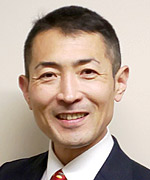
Identification of gene mutations in oligodontia patients and in vivo functional analysis of genes using genome editing technology
Akihiro Yasue
Professional Experience and Education
| 2014-Present | Senior Lecturer, Department of Orthodontics, Tokushima University, Japan |
|---|---|
| 2009-2014 | Research Associate, Department of Orthodontics, Tokushima University, Japan |
| 2008-2009 | Fellow, Baylor College of Dentistry, Texas, U.S.A |
| 2005-2008 | Fellow, University of Texas Health Science Center at Houston Dental Branch, Texas, U.S.A |
| 2004-2005 | Research Associate, Department of Orthodontics, Tokushima University, Japan |
| 2003-2004 | Postdoc, Department of Orthodontics, Tokushima University, Japan |
| 2002-2003 | Resident, Tokushima University, Japan |
| 1998-2002 | PhD, Tokushima University Graduate School of Dentistry, Japan |
Honors and Awards
| 2004 | Award for Encouragement of Research, JADR |
|---|---|
| 2010 | Award for Encouragement of Research, JADR |
| 2012 | Award for Encouragement of Research, Japanese Cleft Palate Association |
| 2001 | Bernard G. Sarnat Award, Craniofacial Biology Group, IADR |
Research Interests
Tooth Development, Oligodontia, Genome editing technology
Abstract
Non-syndromic tooth agenesis or isolated hypodontia is the most common human malformation. The prevalence of the condition ranges from 1.6% to 9.6% in different populations. Non-syndromic tooth agenesis has been reported to be associated with heterozygous mutations in MSX1, PAX9, WNT10A and WNT10B. MSX1 and PAX9 are the most reported genes associated with agenesis of the premolars and/or molars. Oligodontia patients with PAX9 mutation exhibit clear phenotype with agenesis in molar region, on the other hand, the patients with mutations in MSX1 gene show various phenotypes including agenesis of the premolars.
Previous functional analyses for detected mutations have been examined with cell culture system because of the methodological limitation. It means that the causality of the reported mutations detected in small pedigrees or unclear phenotypes is not always reliable. Recently, more than half of patients with hypodontia were reported to have WNT10A mutation without any functional analysis of the gene, however, the causality is statistically questionable. For such a reason, the genotype/phenotype correlation is occasionally in a state of chaos.
The presentation will show the mutation detection of the genes for the patient with oligodontia using next-generation sequencing technology-based targeted panel sequencing analysis which improves the molecular diagnosis in target genes. The presentation will also make clear the causality of pathogenic SNVs using genome editing technology in mice. This strategy showing tooth phenotype can be a useful method to verify genotype/phenotype correlation of human disorders. For Msx1 gene, in vivo functional analysis for each conserved domain will also be presented.
Allied Health Professional Program
Allied Health Professional Program 4 themes
For Clinical Practice and Support Staff
| 1 | Myofunctional Therapy |
|---|---|
| 2 | New Digital Technology in orthodontic clinic |
| 3 | Marketing and Practice Management |
For Technicians
| 4 | Advancement Digital Technology |
|---|
Clinical Practice and Support Staff (1):Myofunctional Therapy
no img
Awareness Training and Myofunctional Therapy in Orthodontics
[Part 3] Orthodontic Boards Around the World
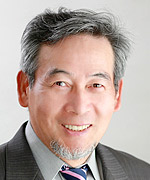
-
The System of Japanese Orthodontic Board
Ryuzo Kanomi, DDS, DDSc, PhD
Professional Experience and Education
| 2008- | Adjunct Lecturer, Department of Orthodontics and Dentofacial Orthopedics of Osaka University Graduate School of Dentistry, Japan |
|---|---|
| 2008-2013 | Adjunct Clinical Professor, Department of Orthodontics at Osaka University, Japan |
| 2002 | PhD, Orthodontics, Osaka University, Japan |
| 1989 | DDSc, Pedodontics, Osaka Dental University, Japan |
| 1980- | Director, Kanomi Dental Office, Japan |
| 1977 | DDS, Osaka Dental University, Japan |
Honors and Awards
Joseph E. Johnson Table Clinic Awards by A.A.O. (1994, 1997, 1998, 2000, 2001)
Research Interests
Early Treatment Orthodontics, Orthodontic Anchor Screw
Clinical Practice and Support Staff (1):Myofunctional Therapy
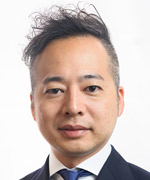
Awareness Training and Myofunctional Therapy in Orthodontics
Takashi Nezu
Professional Experience and Education
| 2013-2020 | The deputy director and Clinical chief, Nezu Orthodontic Clinic, Japan |
|---|---|
| 2010-2013 | An associate doctor, Nezu Orthodontic Clinic, Japan |
| 2009 | Completion of Graduate School of Dentistry at TDC to obtain PhD |
| 2009 | Completion of postgraduate course at Orthodontic Department, Tokyo Dental College, Japan |
| 2005 | DDS, Tokyo Dental College, Japan |
Research Interests
Diagnosis and Treatment of Dysfunction in Orthodontics
Treatment planning in Orthodontics
Treatment of High Degree of Difficulty Cases
Abstract
Malocclusion is not merely caused by morphological anomalies and/or improper eruption of teeth, but it is closely related to dysfunctional problems. In addition, diagnosis and training of dysfunctions such as various oral habits etc. are extremely important in executing orthodontic treatment properly. Particularly, in the high degree of difficulty cases, both morphological correction with mechanics and functional training of the patients is quite necessary.
Unlocking of malocclusion includes mechanical unlocking, which is morphological correction with mechanics, and functional unlocking, which is neutralizing various dysfunction to release from restricted environment (locking), and to restore the health of the orofacial structure including the TMJ. During growth, it refers to induce normal growth and development.
To improve dysfunctional problems and to reduce their influence on development of malocclusion, functional unlocking consists of Awareness Training (AT) to every patient including Myofunctional Therapy (MFT).
AT is to point out the effects of dysfunctions that patients are sometimes not aware of daily, and to understand the causal relationship with malocclusion, and to finally change their behavior. Patients without any exceptions need breathing/swallowing, muscles, posture and habit training. We identify the relevance and conduct individual training procedures to each case.
In our practice, we share the information and the need for training with patients through precise clinical examination, ordinary diagnostic materials and other data from implemented technologies, such as rhinomanometry and electromyograms. In this presentation, I am going to illustrate the why and the how of our functional training.
Clinical Practice and Support Staff (2): New Digital Technology in orthodontic clinic
no img
What changes are caused by digital technology in the orthodontic field?
Clinical Practice and Support Staff (2): New Digital Technology in orthodontic clinic
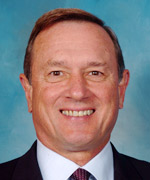
New Technology Enhancing Patient Care: What is Your Role?
David R Musich
CV
| 1990-2020 | Clinical Professor of Orthodontics, U of Pennsylvania Department of Orthodontics |
|---|---|
| 1981-1990 | Associate Professor of Orthodontics, U of Pennsylvania Department of Orthodontics |
| 1979-1981 | Acting Chairman, Division of Orthodontics, University of Chicago Orthodontic Residency |
| 1974-1975 | Acting Chairman, Department of Orthodontics, U of Pennsylvania SDM |
| 1973-1975 | Orthodontic Consultant Craniofacial & Cleft Palate Division, Children's Hospital of University of Pennsylvania |
| 1971-1981 | Assistant Professor of Orthodontics, U of Pennsylvania Department of Orthodontics |
| 1969-1971 | MS Degree, University of Nebraska School of Dentistry |
| 1965-1969 | DDS Degree, Loyola University School of Dentistry |
Honors and Awards
| 2006 | Award of Merit, College of Diplomates, American Board of Orthodontics |
|---|---|
| 2006 | Special Recognition Award, United Parents Supporting Down Syndrome |
| 2008 | Angle East's Harvey Peck Award of Excellence |
| 2009 | AAO's James Brophy Distinguished Service Award |
| 2020 | AAO's Annual Session Mershon Lecture |
Key Publications and Research Interests
Musich, DR: Orthodontic Treatment In Patients Requiring Orthognathic Surgical Procedures. In Integrated Clinical Orthodontics, First Edition.Edited by Vinod Krishman and Ze'ev Davidovitch. Blackwell Publishing Ltd. 2012.
2 Chapters in last 6th editions of Orthodontics: Current Principles and Techniques. (titles below)
Vanarsdall, Robert L. and Musich, David R.: Adult Interdisciplinary Therapy: Diagnosis and Treatment. In Graber, Lee, Vanarsdall, Robert, Vig, K. & Huang, G: (Eds.), Orthodontics: Current Principles and Techniques, 6th ed., Chapter 21, Elsevier Publishing Co. St. Louis, 2016.
Musich, David R.and Chemello, Peter: Orthodontic Aspects of Orthognathic Surgery. In Graber, Lee, Vanarsdall, Robert, Vig, K. & Huang, G: (Eds.), Orthodontics: Current Principles and Techniques, 6th ed., Chapter 23, Elsevier Publishing Co. St. Louis, 2016
Ngan P, Musich D: Stability and Relapse of Class III Treatment. In Stability and Relapse. In Christos Katsaros & Theodore Eliades. Quintessence Publishing. Berlin. 2018.
Abstract
Abstract
In the past 10-15 years all fields of patient care in both medicine and dentistry have been affected by significant technological advances. New technology has influenced the delivery of orthodontic treatment in 3 key areas of patient care:
1. Enhanced diagnostic tools such as 3-D radiographs, airway assessment, digital scanners and the use of biomarkers for preventive services.
2. Sophisticated treatment tools: TADS for enhanced anchorage; algorithm generated removable aligners, digitally generated lingual appliances, precise, robotically generated arch wires, minimally invasive anterior implants and surgically facilitated orthodontic treatment (SFOT).
3. Retention protocols that require enhanced communication tools.
Allied staff are required to understand the details of these technological advances, how these advances will enhance patient treatment outcomes, and be able to educate their patients how these advances, when applied, will improve the quality of their orthodontic outcome. Allied staff become a "trusted advisor" when patients are hesitant to proceed with advanced therapies; they are the ones that answer key questions when the doctor has left the room and they are the ones that help the patient make the commitment to the desired treatment plan.
Clinical Practice and Support Staff (2): New Digital Technology in orthodontic clinic
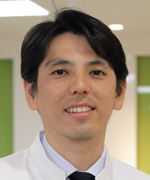
What changes are caused by digital technology in the orthodontic field?
Tatsuya Kosaka
Professional Experience and Education
| 2018- | Director, Kosaka Orthodontic Office |
|---|---|
| 2014- | Part-time Faculty, Department of Orthodontics, Tokyo dental college |
| 2013-2018 | Deputy Director, Kosaka Orthodontic Office |
| 2007-2013 | Assistant Professor, Division of Orthodontics, Department of Clinical Oral Health Science, Tokyo Dental College-Suidobashi Hospital |
| 2006-2007 | Hospital Resident, Department of Orthodontics, Tokyo Dental college-Chiba Hospital |
| 2006.03 | PhD, Tokyo Dental college, Doctor's Course, Completed |
| 2001-2003 | Postgraduate training course at the Department of Orthodontics, Tokyo Dental College |
| 2001.03 | DDS, Tokyo Dental College Graduated |
Research Interests
3D analysis of masticatory movement, Straight-Wire technique
Abstract
Social life has undergone large-scale transformations with the development of digital technology in recent years. These changes are accelerating day by day, with developments in both hardware and software taking place. One advantage of digitalization is the systematic consolidation and organization of large amounts of information, a change that has dramatically enhanced operational efficiency. In the medical field, digitalization has been accompanied by the increased use of keywords such as "3D," "automatization," and "network." The field of orthodontics is currently witnessing a major revolution in diagnosis and treatment as a result of the utilization of digital tools such as CBCT and intraoral scanners. This study explores the effects of digitalization at the levels of research, clinical care, and the operations of clinics respectively, and discusses the future prospects of orthodontic treatment.
Clinical Practice and Support Staff (3): Marketing and Practice Management
no img
Challenges of being a Dental Hygienist in a foreign land
no img
Periodontal consideration -Don't start Orthodontic treatment without the charting !-
Clinical Practice and Support Staff (3): Marketing and Practice Management
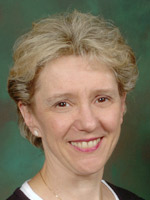
Marketing "On Message" : The Eight Step Discipline in Action
Elizabeth M. Barrett
Professional Experience and Education
| 2019-2020 | Practice Administrator for Matthew J. Busch, D.D.S., Ltd. |
|---|---|
| 2002-2019 | Practice Administrator for Musich,D.D.S.and Busch,D.D.S.,Ltd. |
| 1976-2002 | Practice Administrator for David R.Musich,D.D.S.,Ltd. |
| 2018 | Speaker AAO Annual Session, Washington, DC |
|---|---|
| 2017 | Speaker AAO Annual Session, San Diego, CA |
| 2016 | Speaker Illinois Society of Orthodontists Meeting |
| 2015 | Speaker AAO Annual Session, San Francisco, CA |
| 2011 | Panelist AAO Annual Session - Practice Transition - Chicago, IL |
| 2010 | Speaker NESO Meeting, Montreal, Canada |
| 2008-2009 | Member AAO Voluntary Certification Steering Committee |
| 2006 | Speaker SWSO Annual Meeting |
| 2006 | Speaker AAOMS Meeting, San Diego, CA |
| 2005 | Speaker CDABO Annual Meeting, New Mexico |
| 2004 | Paper Presentation at Angle East Meeting, Boston, MA |
| 2004 | Speaker AAO Annual Session, Orlando, FL |
| 2003 | Guest Speaker Profit Marketing Users Group Meeting |
| 2001 | Moderator AAO Annual Session - Toronto, Canada |
| 2001 | Panelist AAO Annual Session - Toronto, Canada |
| 2000 | Speaker AAO Annual Session, Chicago, IL |
| 1997-2017 | Program Editor Eastern Component of EHASO Annual Meeting |
| 1997 | Speaker AAO Annual Session, Philadelphia, PA |
| 1996 | Speaker AAO Annual Session, Denver, CO |
| 1977-1997 | Program Coordinator-Dentofacial Study Group of Greater Chicago |
| 1973 | Bachelor of Arts Degree from St. Xavier College Chicago, IL |
Honors and Awards
| 2017 | Honorary Member of the Edward H. Angle Society of Orthodontists |
|---|
Research and Interests
Enhancing Case Presentation Using Non-Verbal Communication Skills
Systematic Orthodontic Fee Calculation Method
Practice Transition and the Role of Orthodontic Team Members
Systems of Operation in Orthodontic Practice Management
Abstract
Course Description
As practices develop and become busier, orthodontic teams can benefit from a straight forward marketing plan that doubles as a risk management program. The speaker has worked in orthodontic practice management for 44 years and, with David R. Musich, D.D.S., M.S., has developed The Eight Step Discipline system for standardized communication as an enhanced due diligence protocol. Initially, each step was designed to create specific solutions for treatment planning and communication with patients, parents, general dentists and dental specialists. However, it quickly became apparent that The Eight Step Discipline is much more than a system of communication; it is also an invaluable tool for risk management in patient charting and a subtle, but effective marketing strategy that leaves a lasting impression. This program will present details of The Eight Step Discipline, its practical application in specific patient situations, its capacity to enhance due diligence in treatment record keeping and its impact on practice marketing results.
Learning Objectives
Attendees of this course will be able to:
1. Understand the crucial connection between standardized communication and effective systems of operation.
2. Identify individual team member roles in the internal and external marketing of the practice.
3. Recognize the marketing and risk management benefits of 4 vital treatment reports which are generated at specific milestones in the orthodontic patient's course of treatment.
Clinical Practice and Support Staff (3): Marketing and Practice Management
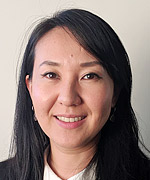
Challenges of being a Dental Hygienist in a foreign land
Yuko Shimizu
Professional experience and education
| 2009- 2019 | The Orthodontist, Perth WA, Australia |
|---|---|
| 2007-2008 | Associate Degree in Dental Hygiene, Graduated Curtin University of Technology, Perth WA, Australia |
| 2002 | Post graduate dental hygienist workshop, University of Gothernburg, Sweden |
| 1998-2002 | Ohgushi dental clinic, Tokyo Japan |
| 1996-1998 | Graduated Tokyo Dental Association Dental Hygienist College, Tokyo Japan |
Yuko Shimizu
Dental Hygienist, Perth, Western Australia
Yuko Shimizu currently works as a dental hygienist at The Orthodontist, Perth's leading orthodontic clinic. After graduating from Tokyo Dental Association Dental Hygienist College in her homeland, Japan, in 1998, Yuko's passion for travel brought her to multicultural Australia, where she fell in love with the laid-back lifestyle. In order to live and work in Australia, Yuko undertook extensive English language studies before gaining her Associate Degree in Dental Hygiene from Curtin University of Technology in 2008. In addition to her duties in the practice's two Perth metropolitan clinics, Yuko is also part of a travelling team providing orthodontic treatment to patients in remote communities. Her daily interaction with patients from various cultural backgrounds has added a new dimension to Yuko's technical skills as a dental hygienist, making her a value member of the orthodontic services team at her practice. Yuko is a member of the Dental Hygienists Association of Australia.
Abstract
While technical skills as a dental hygienist can be transferred across borders, as a Japanese trained dental hygienist, the cultural exposure of working in Australia has been the biggest challenge, but also the most rewarding aspect of my career to date.
Less than 2% of Japan's population is non-Japanese, so the patient profile is very similar across the country. In Australia however, almost a third of the population are born overseas, every day brings new opportunities to learn more about the people we treat, and how to cater to their needs to ensure that they receive the very best of care.
Working in this environment has taught me to appreciate ethic and cultural diversity, how to communicate with individual patients accordingly, and how to respect the cultural sensitivities of my patients and colleagues in the clinic.
Through sharing my experiences, this presentation will discuss how cultural exposure and understanding can improve technical performance as a dental hygienist - something that simply can't be taught in a structured learning environment.
Clinical Practice and Support Staff (3): Marketing and Practice Management
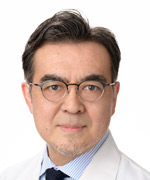
Periodontal consideration -Don't start Orthodontic treatment without the charting !-
Hajime Kamiyasu
| 1986 | DDS, Nippon Dental University |
|---|---|
| 1991 | DDSc, Nippon Dental University Graduate school in Orthodontics |
| 1995-1997 | The University of Michigan Graduate periodontal clinic |
| 1998- | Kamiyasu Orthodontic Office |
| 2008 | MOrth, Membership in Orthodontics of Edinburgh |
| 2018 | Board of the Japanese Orthodontic Society |
Abstract
Recently, many adult patients who are seeking orthodontic treatment visit orthodontic offices. Although there is regional difference, it is said that percentage of adult patients is about 20~30%.
Different from child or teenage patients, providers in orthodontic offices need another consideration for adult patients. The government survey in 2011 found the prevalence of moderate to severe periodontitis in 25~54 years of age were 18~34% in Japan.
Periodontal disease is called as silent disease, so it is difficult to be aware of involved this disease for patients. And for us, it is hard to evaluate condition of gingival tissue with just visual examination.
Oral cavity harbors more than 700 kinds of resident microbial species, they are usually as good bacterium and keep balance between periodontal tissue and microbiota. However, periodontal disease occurs due to break down of this equilibrium.
After placement of orthodontic appliances, plaque accumulation by inadequate oral hygiene enhances gingival inflammation such as reddish and bleeding. This kind of situation results in increasing periodontal pathogenic anaerobic microbial species in the subgingival site.
As above, we need to recognize patient´s history of periodontal treatment and know state of periodontal tissue before or during orthodontic treatment.
Main points are following,
Equilibrium between periodontal tissue and microbial species
Subgingival microbiota after placement of orthodontic appliances
Necessity of monitoring of periodontal tissue during orthodontic treatment
In order not to develop to periodontitis from gingivitis
Technicians: Advancement Digital Technology
no img
3D digital models generated by intraoral scanning - Is it reliable for clinical use?
no img
Evolution of orthodontic treatment with optical impression and 3D technology
Technicians: Advancement Digital Technology
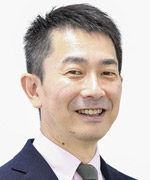
3D digital models generated by intraoral scanning - Is it reliable for clinical use?
Masahiro Iijima
Professional Experience and Education
| 2018-Present | Professor and Chair, Division of Orthodontics and Dentofacial Orthopedics, Health Sciences University of Hokkaido, Japan |
|---|---|
| 2005-2018 | Associate Professor, Division of Orthodontics and Dentofacial Orthopedics, Health Sciences University of Hokkaido, Japan |
| 2002-2005 | Assistant Professor, Division of Orthodontics and Dentofacial Orthopedics, Health Sciences University of Hokkaido, Japan |
| 2000-2002 | Visiting Scholar, Ohio State University |
| 1998-2000 | Instructor, Division of Orthodontics and Dentofacial Orthopedics, Health Sciences University of Hokkaido, Japan |
| 1998 | PhD, Health Sciences University of Hokkaido, Japan |
| 1993 | DDS, Health Sciences University of Hokkaido, Japan |
Award
| 2013 | Best Paper Award, Japanese Society of Dental Materials and Devices |
|---|---|
| 2015 | Academic Award, Japanese Society of Dental Materials and Devices |
Research Interests
Biomaterials
Abstract
The use of digital technology in orthodontics has been increasing in the last few decades. In particular, digital 3D model generated by intraoral scanning has been widely accepted by the field of clinical orthodontics, and is advantageous due to the compact storage space, simplified method of transferring data, potential to expand application for treatment planning, and fabrication of customized appliances. Most studies reported that intraoral scanners are highly accurate, however, the accuracy is possibly decreased as the range of the scan and the morphology. Therefore, full-arch scan with undercut areas caused by crowded teeth may influence the accuracy. The establishment of a reliable reference is also important to investigating the accuracy of digital models. For fabrication customized fixed appliances and indirect bonding trays, the digital setup models should have reliable accuracy. This presentation will review the accuracy of full-arch digital models by intraoral scanning. In addition, setup accuracy in digital models and the clinical applications will be also discussed.
Technicians: Advancement Digital Technology
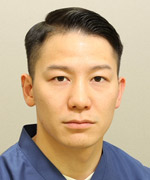
Evolution of orthodontic treatment with optical impression and 3D technology
Makoto Tashiro
Professional Experience and Education
| 2020 | Assistant Professor, Department of Orthodontics, School of Dentistry, Showa University, Japan |
|---|---|
| 2019 | PhD, Department of Orthodontics, School of Dentistry, Showa University, Japan |
Research Interests
Optical impression
3D Technology in Orthodontics
Abstract
In recent years, digital technologies have been applied in orthodontic clinic. There are many types of intraoral scanners on the market. The performance of the intraoral scanner has been improved, and it has become possible to obtain highly accurate three-dimensional intraoral data by an optical impression. With this situation, treatment using clear aligners has also become widespread. Clear aligners orthodontic treatment has many advantages over conventional fixed appliance treatment, including aesthetic aspects, and it is clear that it will become more widely used in the future. There are also many types of simulation software for designing clear aligners. This presentation will provide the principles, accuracy and scanning time, and the workflow using some simulation software. In addition, this will suggest the possibility of future orthodontic treatment using optical impression and 3D technology.
APOS Lectures
APOS Oration
no img
Redirecting mandibular and maxillary growth in pubertal growing patients with Class III malocclusion
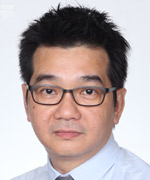
Redirecting mandibular and maxillary growth in pubertal growing patients with Class III malocclusion
Eric J.W. Liou
Dr. Eric Liou is an associate professor and the immediate past chairman of the Faculty of Dentistry, Chang Gung Memorial Hospital & Chang Gung University, Taipei, Taiwan. He is also a visiting professor in the Department of Orthodontics, Showa University, Tokyo, Japan. For the profession affiliations, Dr. Liou was the president of the Taiwan association of Orthodontists 2015-2016, and is the immediate past president of the World Implant Orthodontic Association (WIOA). Currently, he is the Vice President of the Asian Pacific Orthodontic Society (APOS) and an editor of the APOS Trends in Orthodontics, and Secretary General of the WIOA. His main clinical and research interests are TADs, orthodontic tooth movement, platelet rich plasma (PRP) and bone physiology, and surgical and non-surgical innovative approaches for canting, facial asymmetry, or Class III malocclusion. Dr. Liou has numerous presentations especially on the topics of Class III orthognathic camouflage treatment, treatment of occlusal cant and facial asymmetry with yin-yang arch wires, accelerated orthodontic tooth movement with PRP, maxillary orthopedic protraction, surgery first orthognathic approach, and TADs.
Abstract
Mandibular prognathism and/or maxillary hypoplasia are the two most common features in pubertal patients with Class III malocclusion. Maxillary hypoplasia includes sagittal and/or vertical deficiency. The orthodontic camouflage treatment or orthopedic maxillary protraction in growing Class III patients usually focuses on the sagittal improvement of anterior cross bite and maxillary growth, but seldom on the maxillary vertical deficiency and control of mandibular growth. Furthermore, the subsequent relapse & cease of maxillary sutural growth after maxillary protraction, and outgrowth of mandible during puberty are substantially unsolved problems. Although we are not able to reduce the growth amount of mandible, the purpose of this presentation is to propose innovative thoughts and clinically feasible techniques for redirecting mandibular growth inferiorly and even posteriorly, and at the same time redirecting maxillary growth anteriorly and inferiorly by surface remodeling of maxilla (periosteal growth of maxilla). The rationales, clinical studies, and cases illustrations will be presented.
APOS Lectures
no img
invisible aligner- Changes To Orthodontics Today
no img
Pre-Restorative/Prosthodontic Orthodontics: Balancing The Esthetic And Functional Needs Of Our Patients
no img
Contemporary Orthodontic management of loss of maxillary central incisors
no img
Veracity in an Era of Rampant Industry Disruption: What is the Role of the ASO?
no img
Management strategies for compromised first permanent molars: An orthodontic perspective
no img
Be ahead of the curve: In-house clear aligners
no img
Surgery First Orthodontic Management
no img
Aggravation of gummy smile by straight wire mechanics and its management with or without orthognathic surgery up to 10 year follow-up
no img
Biomechanics innovation for Class III non-surgery
no img
Efficient Non-Extraction Approach to Correct Class II Malocclusion
no img
Effectiveness of myofunctional therapy in orthodontic treatment and its scientific background
no img
The smile esthetics of evidence-based research and clinical application
no img
Easy debonding of ceramic brackets bonded with a light-cured orthodontic adhesive containing heat-expandable microcapsules with a CO2 laser
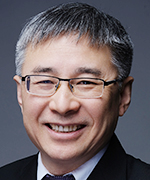
INVISIBLE ALIGNER- CHANGES TO ORTHODONTICS TODAY
Yanheng Zhou
Professional Experience and Education
| 2002-present | Professor, Department of Orthodontics, Peking University School of Stomatology, Beijing, China |
|---|---|
| 2018-2021 | Adjunct Professor, Department of Orthodontics, School of Dental Medicine, University of Pennsylvania, Philadelphia, Pennsylvania, USA |
| 2010-2015 | Chair, Department of Orthodontics, Peking University School of Stomatology, Beijing, China |
| 2009-present | Adjunct Professor, Department of Orthodontics, School of Dental Medicine, Case Western Reserve University, Cleveland, Ohio, USA |
| 2000-2010 | Vice Chair, Department of Orthodontics, Peking University School of Stomatology, Beijing, China |
| 2000-2001 | Associate Professor, Department of Orthodontics, Peking University School of Stomatology, Beijing, China |
| 1998-2000 | Vice Chair, Department of Orthodontics, School of Stomatology, Beijing Medical University, Beijing, China |
| 1997-2000 | Associate Professor, Department of Orthodontics, School of Stomatology, Beijing Medical University, Beijing, China |
| 1996-1997 | Adv. Dip. University of Hong Kong, Hong Kong, China |
| 1993-1996 | Assistant Professor, Department of Orthodontics, School of Stomatology, Beijing Medical University, Beijing, China |
| 1989-1993 | Ph.D. Beijing Medical University, Beijing, China |
| 1984-1989 | D.D.S. Xi'an Medical University, Xi'an, Shaanxi, China |
Honors and Awards
| 2012 | 2nd prize, Chinese Medical Association, China |
|---|---|
| 2012 | 2nd prize, Beijing Association for Science and Technology, China |
| 2012 | Mentor Award for Outstanding Doctoral Thesis, Peking University, China |
| 2001 | 1st prize, Chinese Medical Award, China |
| 2001 | 3rd prize, Beijing Scientific and Technical Achievements, China |
| 2000 | 2nd prize, Science and Technology Award, Ministry of Education, China |
| 2000 | 2nd prize, the 7th National Excellent Young Teacher Award, Ministry of Education, China |
| 1997 | 3rd prize, Science and Technology Award, Ministry of Public Health, China |
Research Interests
Adult orthodontics
Combined surgical and orthodontic approach
Orthodontic treatment in periodontal patients
Micro-screw anchorage
Customized lingual orthodontics
Invisible orthodontics
Mechanism and immunoregulation of orthodontic tooth movement
Application of stem cell and bioinspired material in oral tissue defects repair
Abstract
How invisible aligner change the orthodontics? As we know, invisible aligner was first released by Align Technology in 1997. After 23 years' growth and development, the invisible aligner has changed the life of our orthodontists. The invisible aligner has changed the way how the orthodontists treat the patients, and also the way how the orthodontists work at the clinic. At the same time, The invisible aligner has changed the way how the patients come to see the orthodontists. The invisible aligner has made the orthodontic treatment more invisible and more comfortable. The invisible aligner has also made the opportunity for those patients who couldn't receive the orthodontic treatment with conventional braces.
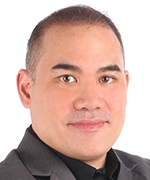
Title : Pre-restorative/ prosthodontic orthodontics : Balancing the Esthetic and Functional Needs of our Patients
Martin Antonio V. Reyes
Professional Experience and Education
| 1996 | Doctor of Dental Medicine University of the Philippines |
|---|---|
| 1999 | Certificate of Proficiency in Orthodontics University of the Philippines |
| 2003 | Masters of Science in Dentistry University of the Philippines |
| 2003-2016 | Visiting Consultant Orthodontics Asia/Arrail Dental Shanghai China |
|---|---|
| 2004-Present | Professorial Lecturer University of the Philippines Post Graduate Program in Orthodontics |
| At Present | Visiting Professor Orthodontic Department St. Mary's Hospital Seoul Korea |
| 2010-Present | CEO Dentphix Inc Ortigas East Pasig |
Honors and Awards
Philippine Dental Association : Outstanding President Affiliate Society
Research Interests
Skeletal Maturity Indicators for Orthodontics
Bracket Mesh Interphase
Abstract
Over the past decade, advances in technology have paved the way for newer restorations fulfilling both esthetic and functional needs of our patients. Long span restorations, bridges, and plates have stepped aside for modern day bio compatible fixtures with superior quality making our treatment much more conservative bridging the gap between what is esthetically pleasing and functionally stable. One thing that has not changed much is the importance of occlusion as one of the main considerations in the treatment planning for restorative and prosthodontic cases. In this modern day of dentistry, planning for veneers, crowns, bridges and implants requires a TEAM APPROACH in order to achieve the best possible outcome. The orthodontic specialist plays a very important role in the establishment of occlusion placing the teeth in the best possible positions that will allow easier placement of the restorations in a much more ideal manner while maintaining a stable and harmonious bite that will ensure the longevity of not only the restoration itself but the supporting structures as well. This lecture will put emphasis on some treatment planning guidelines for adjunctive orthodontic procedures such as space management, control of midline, strategic movement of molars , planning for implants and veneers and other procedures that will help to establish both an eshtetically pleasing smile, healthy look and stable bite in preparation for other restorative and prosthodontic treatment.
.
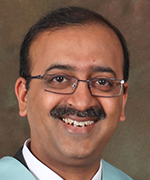
Contemporary Orthodontic management of loss of maxillary central incisors
Jayesh S. Rahalkar
Brief Biodata
Dr. Jayesh S. Rahalkar
MDS(Bom), M Orth RCS (Edinburgh)(UK), FDS RCS (Edingburgh)(UK), DNB (Orthodontics), Diplomate of Indian Board of Orthodontics (DIBO)
Professional experience & Education
- Mini Residency at Yonsei University, Seoul, South Korea in 2016
- FDS RCS (Edin)(UK) in 2014 by the Royal College of Surgeons of Edinburgh, United Kingdom
- Diplomate of National Board (DNB) in the subject of Orthodontics by the National Board of Examinations, New Delhi in 2005.
- M Orth RCS (Edin) (UK) in 2004 by the Royal College of Surgeons, Edinburgh, United Kingdom.
- Board Certified Diplomate of Indian Board of Orthodontics (DIBO) in 2003.
- Master of Dental Surgery (MDS) in Orthodontics and Dentofocial Orthopedics from Govt. Dental College & Hospital, Mumbai in 1996.
- Bachelor of Dental Surgery (BDS) from the Govt. Dental College & Hospital, Mumbai, in 1992 by standing first class first in the University of Bombay
- Exclusive Orthodontic Practice since 1996 till date
- Former Head; and currently working as Professor and PG Guide, Department of Orthodontics at Dr.D.Y.Patil Dental College and Hospital, Pimpri, Pune
- Honorary Consultant Orthodontist at Deenanath Mangeshkar Hospital, Pune. He is also a team member of the complete cleft care team at Deenanath Mangeshkar Hospital.
Honours and Awards
- Past - Chairman, Indian Board of Orthodontics 2018-2019
- Director of Indian Board of Orthodontics in 2014 to 2019
- Executive Committee Member of Indian Orthodontic Society (IOS)(2013-14, 2014-15, 2015-16, 2017-18, 2018-19)
- Fellow of World Federation of Orthodontics (FWFO)
- International Member of American Association of Orthodontists (AAO)
- He is the recipient of the prestigious Best Outgoing student's trophy for his academic excellence
Research Interests
- Temporary Anchorage Devices
- Accelerated Orthodontics
- Interdisciplinary Orthodontics
Abstract
Tooth size arch length discrepancy (TSALD) is the main reason for the decision of extraction of dental units from the arches. The space thus created is used for alignment / decrowding or retraction of procumbent anteriors. The most common choice of extraction, for the space gaining in the management of malocclusion, is premolars. In some clinical situations, molars may have to be extracted if they have a poor prognosis. But there are a few cases where maxillary central incisor might be missing / avulsed / need extraction due to bad endodontic / restorative prognosis.
The manangement of the loss and/or extraction of the maxillary central incisor requires interdisciplinary orthdontic treatment. Carefully planned treatment mechanics and pre-charting of the post-treatment occlusal relationship along with proper group functional occlusal scheme are required for a better and stable final outcome. Thus the treatment protocol and mechanics for such cases are different than the routine mechanics. The adjunct periodontal, restorative and prosthodontic procedures require correct timing and need to be executed with perfection.
This presentation will discuss a rationale for extraction of maxillary central incisor, space closure mechanics; and highlight some of the problems and pitfalls with their successful management with presentation of clinical cases.
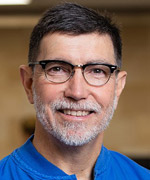
Veracity in an Era of Rampant Industry Disruption: What is the Role of the ASO?
Mike Razza
Professional Experience and Education
Employment:
| 2009-present | Associate Professor - Faculty of Medicine and Dentistry University of Western Australia |
|---|---|
| 2002-2006 | Senior Lecturer - Faculty of Medicine and Dentistry University of Western Australia |
| 1993-present | Private Specialist practice Orthodontics. The Orthodontists Booragoon, Subiaco and Broome |
| 1991-2004 | Lecturer - Faculty of Medicine and Dentistry University of Western Australia |
| 1990-1991 | Clinical Research Associate University of Western Australia Dental School |
| 1987-1990 | Graduate Orthodontic Resident, UMKC School of Dentistry, Dept of Orthodontics, Kansas City, Missouri, USA |
| 1986-1987 | Dental Health Programs, Inc. Dallas, Texas |
Professional Associations and Memberships
American Association of Orthodontists
World Federation of Orthodontists
Asian Pacific Orthodontic Association
Australian Dental Association
Delta Sigma Delta
International College of Dentists - Australasian Section
Pierre Fauchard Academy
Australian Society of Orthodontists, Inc.
| 2016-present | ASO Chairman Education Committee |
|---|---|
| 2012-2014 | ASOWA Branch President |
| 2010-2018 | ASO Representative to the APOS |
| 2010-2016 | ASOWA Branch Council |
| 2010-2012 | ASO Federal President |
| 2008-2010 | ASO Federal Chairman Australasian Orthodontic Board and ASO Federal Vice-President |
| 2006-2008 | ASO Federal Chairman Orthodontic Services Committee |
| 2002-2012 | ASO Federal Council |
| 1996-2002 | AOC Scientific Chairmen - 18th AOC March 2002 |
Education
Bachelor of Science - Sam Houston State University 1982
Doctor of Dental Surgery - Baylor College of Dentistry 1986
Certificate Orthodontics - University of Missouri at Kansas City 1990
Distinctions and Honours
2014 Distinguished Service Award - ASO, Inc.
2017 Honorary Life Membership - ASO, Inc.
Australian Orthodontic Board - Certified Board Member
Abstract
The profession of orthodontics is constantly under siege from differing forms of Industry Threats, Challenges and Disrupters. It is imperative that orthodontic professionals and professional societies or associations provide clear, honest, evidence-based information regarding orthodontic treatment to the public. In my opinion, it is a responsibility of professional associations or societies to mount public education campaigns to counter the Industry Threats, Challenges and Disrupters to the professional provision of orthodontic care. The Australian Society of Orthodontists (ASO)Public Education Campaign is at the forefront of public education on the benefits of seeking treatment from a highly educated orthodontist and providing the public with warnings regarding unconventional treatments and treatment delivery systems. This presentation will explore some of the Industry Threats, Challenges and Disrupters and display elements of the ASO's campaign to educate the public of the benefits of seeking an orthodontist's opinion and the risks of unconventional orthodontic delivery systems.
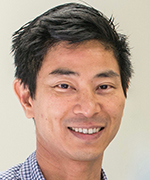
Management strategies for compromised first permanent molars: An orthodontic perspective
Desmond Ong
Professional Experience and Education
| 2017- Present | Clinical Academic in Orthodontics University of Queensland, School of Dentistry, Brisbane, Australia |
|---|---|
| 2011- Present | Private Practice in Orthodontics, Townsville, Australia |
| 2008 | Membership in Orthodontics, Royal Australasian College of Dental Surgeons |
| 2006-2010 | Private Practice in Orthodontics, Gold Coast, Australia |
| 2006-2010 | Senior Lecturer in Orthodontics University of Queensland, School of Dentistry, Brisbane, Australia |
| 2005 | Membership in Orthodontics, Royal College of Surgeons, Edinburgh |
| 2005 | MDSc (Orthodontics) University of Queensland, School of Dentistry, Brisbane, Australia |
| 2000 | BDSc (Hons) University of Queensland, School of Dentistry, Brisbane, Australia |
Honors and Awards
| 2016 | Raj Prasad Award (Australian Society of Orthodontists) |
|---|---|
| 2006 | Young Lecturer Award (Royal Australasian College of Dental Surgeons) |
| 2000 | Australian Society of Periodontology Medallion |
Research Interests
3D Technology in Orthodontics
TADs
Autotransplantation
Abstract
Compromised first permanent molars are relatively common in the adolescent population due to caries and/or developmental defects. Compromised first permanent molars with poor long-term prognosis are commonly associated with both short and long-term clinical dilemmas.
Several management strategies are available for both children and adolescents, depending upon the stage of dental development and type of malocclusion. In the majority of situations, compromised first permanent molars can be removed in conjunction with comprehensive orthodontic treatment, with complete closure of the extraction space. Temporary anchorage devices (TADs) can be used to facilitate predictable closure of large first permanent molar extraction spaces, particularly in the lower arch.
Autotransplantation of unerupted third molars into compromised first permanent molar extraction sites does warrant serious consideration where the long-term prognosis of a tooth is questionable, suitable donor teeth at the ideal stage of root development are present and where restorative implant placement is not possible due to expected future facial growth and dentoalveolar change.
This presentation will discuss the important case-specific diagnostic information required to determine the most appropriate management strategy for an individual patient.
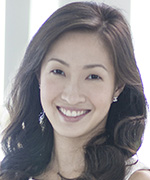
Be ahead of the curve: In-house clear aligners
Geraldine Lee
Professional Experience and Education
| 2008 - 2012 | Associate Consultant, National Dental Centre (Singapore) |
|---|---|
| 2009 - 2013 | Clinical Tutor, Orthodontic Residency Programme, National University of Singapore (Singapore) |
| 2012 - Present | Clinical Director, The Orthodontic Clinic |
| 2015-2017 | President, Association of Orthodontists, Singapore |
| 2016 - Present | Key opinion Leader, 3Shape |
Abstract
As intraoral scanners and digital workflows gain popularity in clinics everywhere, clinicians are able to increase their clinic offering with in-house clear aligners and differentiate themselves from the rest.
Dr Lee will take you through the process of fabricating clear aligner treatment for simple cases entirely within your dental clinic. She will discuss proper case selection, how to take digital impressions and create instant treatment simulations, and fabrication of the clear aligners in-house. The biomechanics of moving teeth will be discussed, as well as what to look out for when planning a treatment strategy.
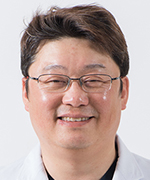
Miniscrews versus surgical archwires for intermaxillary fixation in adults after orthognathic surgery
Seongsik Kim
Education
| 1995- | D.D.S. School of Dentistry, Pusan National University |
|---|---|
| 1998- | M.S.D. Graduate School of Dentistry, Pusan National University |
| 2003- | Ph.D. Graduate School of Dentistry, Pusan National University |
Internship and Residencies
| 1996-1999 | Resident in Orthodontics, Pusan National University Hospital |
|---|
Academic Appointments
| 2003-2004 | Research Fellow, Medical Research Institute, Pusan National University Hospital |
|---|---|
| 2004-2008 | Assistant Professor of Orthodontics, School of Dentistry, Pusan National University |
| 2009-2012 | Associate Professor of Orthodontics, School of Dentistry, Pusan national University |
| 2010 | Visiting Professor, School of Dentistry, University of Florida, US |
| 2013- | Professor of Orthodontics, School of Dentistry, Pusan national University |
| 2015-2016 | Vice Dean, School of Dentistry, Pusan National University |
Abstract
Intermaxillary fixation (IMF) has the role for the maxillomandibular relation and prevention of skeletal relapse during bone healing period after orthognathic surgery. In orthognathic surgery cases with large setback movement or more counterclockwise rotation of mandible, wire fixation can immediately produce a significant extrusive load on the anterior teeth, and this vertical force persists until muscle function adapts to the postoperative mandibular morphology and occlusion. To reduce the extrusive load on anterior teeth during IMF, we have employed orthodontic mini-implant fixation in the anterior region of the jaw. We investigated the differences of skeletal and dental changes according to intermaxillary fixation (IMF) types in adult patients with Class III malocclusion treated with same orthognathic surgical method. They were divided into 2 groups according to IMF types: surgical archwire fixation (Group 1) and orthodontic mini-implant fixation (Group 2). In each cephalogram, we compared the measurements presenting vertical and horizontal tooth position immediately after surgery (T0), 3-month after surgery (T1), and 6-month after surgery (T2). Cephalometric changes were compared with the one-way analysis of variance and Independent-sample t tests were used to compare for two groups. The upper incisor after surgery tended to be proclined in both groups, but there were no significant differences between the groups. Incisor overbite was increased from T0 to T1 in both groups significantly, and the screw fixation (Group 2) showed the little more increased overbite than wire fixation (Group 1). This study suggested that orthodontic surgical arch wire could be replaced with orthodontic mini-implant for IMF
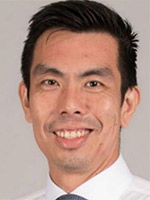
Surgery First Orthodontic Management
Chai Kiat Chng
Professional Experience and Education
| 2018-Present | Chief Dental Officer, Singapore |
|---|---|
| 2018-Present | Registrar, Singapore Dental Council |
| 2018-Present | Head and Senior Consultant, Cleft and Craniofacial Dentistry Unit, KK Women's & Children's Hospital, Singapore |
| 2019-Present | Adjunct Associate Professor, Faculty Of Dentistry, National University of Singapore |
| 2010-2017 | Executive Secretary, Singapore Dental Council |
| 2011-2013 | President, Association of Orthodontists, Singapore |
| 2004-2007 | MDS Orthodontics, National University of Singapore |
| 1996-2000 | BDS, National University of Singapore |
Honours and Awards
| 2012 | Singapore Health Quality Service Award |
|---|
Research Interests
Biomaterials.
Cleft and Craniofacial genomics.
3-D Imaging.
Professionalism and Ethics.
Abstract
As surgery first becomes more popular, the boundaries of the surgeon and the orthodontist becomes more intricately inter-twined when it comes to planning of such cases. It is therefore important that fundamental principles of both orthodontic and surgical aspects are understood by both for the successful planning of such cases. The paradigms of ortho-orthognathic management will be discussed and strategies to ensure successful and predictable outcomes in Surgery First.
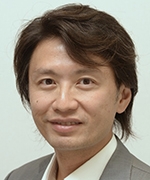
Aggravation of gummy smile by straight wire mechanics and its management with or without orthognathic surgery up to 10 year follow-up
Tsang Tsang, Franklin She
Professional experience and education
| 2004-2019 | Owner, The Smile Clinic Orthodontic Center Limited, Hong Kong |
|---|---|
| 2002-2019 | Part-time clinical Lecturer, The University of Hong Kong |
| 2014 | Biomechanics summer course, Italy |
| 1999-2002 | Master in Orthodontics, The University of Hong Kong |
Research interest
Bone biology
Orthodontics camouflage of dentofacial deformites
TADs and Segmented arch technique
Abstract
Two female patients presented with gummy smile, maxillary dentoalveolar protrusion and total vertical maxillary excess, retroclined incisors, and increased overbite received orthodontic camouflage with straight wire mechanics by general dentists. The treatments caused severe bowing of upper occlusal plane which aggravated the gummy smile and had led them to seek specialist care. They were successfully managed by orthodontic camouflage and combined surgical orthodontic treatment, respectively, in conjunction with the application of miniscrews on straight wire mechanics. Aggravation of gummy smile by straight wire mechanics, use of visual treatment objective to differentiate between orthodontic camouflage and surgical cases, and LeFort I segmentalization were discussed.
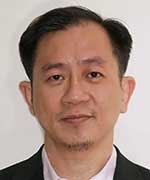
Biomechanics innovation for Class III non-surgery
Chairat Charoemratrote
Education
| 1981-1987 | DDS Chulalongkorn University, Thailand |
|---|---|
| 1989-1991 | M.Sc. (Orthodontics) Chulalongkorn University, Thailand |
| 1998-2000 | C.A.G.S. (Orthodontics and Dentofacial Orthopedics) Department of Orthodontics and Dentofacial Orthopedics, Boston University, USA |
| 1996-2001 | D.Sc.D. (Orthodontics) Boston University, USA |
Professional experiences
1. Faculty of Dentistry, Prince of Songkla University
| 1987-1996 | Lecturer |
|---|---|
| 1996-2006 | Assistant Professor |
| 2006-present | Associate Professor |
| 2002-2010 | Head of Department of Preventive Dentistry |
| 2010-2011 | Vice Dean for Administration |
Research Interest
Biomechanics in Orthodontics
| 2011- 2019 | Dean, Faculty of Dentistry, Prince of Songkla University |
|---|
2. Thai Association of Orthodontists
| 2012-2014 | President |
|---|---|
| 2014-2016 | President-Elect |
| 2016-2018 | President |
| 2018-present | Advisory board committee |
3. Digital Dentistry Asssociation
| 2018-present | President |
|---|
Abstract
When Class III non-surgery is planned for the patients, upper and lower incisor positions and inclinations must be decided to indicate types of tooth movement. Subsequently, appropriate biomechanics is established. For the upper incisor, protraction and extrusion are the most often movements while retraction and intrusion are for the lower incisors. Many times, when mandibular rotations are favorable for reducing the concavity of the face, molar extrusion should be introduced. In this presentation, an innovative biomechanics system of upper incisor protraction with extrusion, lower incisor retraction with intrusion, and molar extrusion will be presented. Samples of cases will be introduced in details of clinical applications along with their biomechanics.
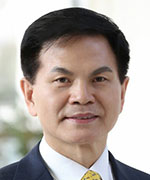
Efficient Non-Extraction Approach to Correct Class II Malocclusion
Yoon-Ah Kook
Dr. Kook is President of Korean Association of Orthodontists, the Dean of the Graduate School of Clinical Dental Science and the professor of the Orthodontic Department at Seoul St. Mary's Hospital. Currently, he is a Clinical Professor at Department of Orthodontics, Arizona School of Dentistry & Oral Health and Saint Louis Univ.
He has published about 100 articles in international peer-reviewed journals regarding corticotomy, arch form, CBCT, and arch form. He also published several book chapters.
Diplomate, American Board of Orthodontics
Abstract
purpose C-palatal appliance(MCPA) is a highly effective device, which can be easily placed and managed by orthodontists.
Scientific evidence demonstrated that the application of MCPA resulted in successful treatment outcomes by efficient molar distalization with a near-bodily movement. According to recent clinical research, effect of maxillary arch distalization related to eruption stage of second molars was evaluated. Moreover, maxillary posterior structures after distalization were evaluated after long-term retention period.
A creative and innovative approach for Class II correction using MCPA will be discussed including biomechanics and practical guidelines. Clinical pearls and a simple management of MCPA including step-by-step placement procedures with use of a digital jig will be presented.
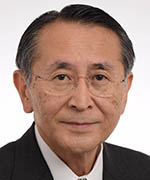
Effectiveness of myofunctional therapy in orthodontic treatment and its scientific background
Junichiro Iida
Professional Experience and Education
| 2016-present | Professor Emeritus Hokkaido University, Japan |
|---|---|
| 2016-2019 | Specially Appointed Professor and Chairman, Faculty of Dental Medicine, Hokkaido University, Japan |
| 1999-2016 | Professor and Chairman, Department of Orthodontics, Graduate School of Dental Medicine, Hokkaido University, Japan |
| 1995-1999 | Associate Professor, Department of Orthodontics, School of Dentistry, Tokyo Medical and Dental University, Japan |
| 1992-1995 | Lecturer, Department of Orthodontics, School of Dentistry, Tokyo Medical and Dental University, Japan |
| 1982-1992 | Assistant Professor, Department of Orthodontics, School of Dentistry, Tokyo Medical and Dental University, Japan |
| 1978-1982 | Graduate School of Dentistry, (Ph.D. course of Orthodontics) Tokyo Medical and Dental University, Japan |
| 1972-1978 | School of Dentistry, Tokyo Medical and Dental University, Japan |
Honors and Awards
| 2015 | Ryus Lecture Award, Korean Association of Orthodontists |
|---|---|
| 1988 | Hatton Award Competition, First Prize of Post-Doctoral Category, International Association for Dental Research |
| 1978 | Nagao Academic Award, Tokyo Medical and Dental University, Japan |
Research Interests
Biological background of orthodontic tooth movement
Muscular functions around the mouth
Research regarding jaw deformities
Research related cleft lip and palate patients
Abstract
Relapse of malocclusion after orthodontic treatment can be considered as the phenomenon of new malocclusion occurring after active orthodontic treatment due to failure of complete elimination of the cause of malocclusion. Force applied to teeth from the lips, tongue or cheek is thought to be one of the major factors responsible for the relapse of malocclusion. The research that we have been doing suggests that weak continuous forces applied from surrounding soft tissues to teeth possibly play the major role in changes of the position of the teeth.
From these considerations, I think it is very important to pay attention to the force that is applied to the teeth from surrounding soft tissues when deciding the treatment goal regarding the position of the teeth before the start of orthodontic treatment and also when the retention period starts.
On the other hand, myofunctional therapy is recommended for patients with abnormality in the position or in the movements of the tongue or lips, and much interest has been shown in methods used for and effects of myofunctional therapy.
We have focused on patients with lip incompetence and have carried out research on the pathophysiological conditions of patients with lip incompetence and the effectiveness of myofunctional therapy for these patients as well as research on appropriate training methods. I would like to introduce the results of our research and the scientific background of myofunctional therapy in this presentation.
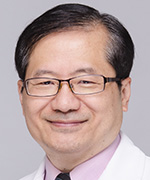
The smile esthetics of evidence-based research and clinical application
Johnson Hsin-Chung Cheng
Professor Johnson Cheng is the Immediate Past President of Taiwan Association of Orthodontists TAO (2017-2018) and the current dean and professor on College of Oral Medicine, Taipei Medical University. He has been the chairman and editor in chief of TAO Journal Committee (2013-2016). He graduated from school of dentistry, Taipei Medical University in 1983 and got Master degree and PhD from the same university in 1995 and 2008, respectively. He practiced in orthodontic department at his hospital and also engaged in teaching and research in his school of dentistry for over 25 years. His major researches were surface treatment of orthodontic TADs and high molecular orthodontic material, esthetic smile in orthodontics, efficient orthodontic treatment of anterior cross-bite, evidence based in orthodontics, etc. He has published over 300 different kinds of academic and clinical papers and been also invited to make lectures about his associated researches around the Asian countries and got an enthusiastic response.
Abstract
The clinical problems resolution and application of evidence-based information to patients have been much improved since the evidence-based medicine (EBM) developed in two decades. From the history development of EBM, the evidence-based dentistry (EBD) was severely behind than EBM. Most of dentistry remains in the "rule of thumb", representing a lack of scientific evidence, there is a great the improvement of space! For the orthodontics, the relevant discussion of EBD was emphasized only in recent years. This report will be presented first from the development and application of EBD, and then introduce the Cochrane Library website in the Cochrane Database of Systematic Reviews, consists of thousands have been systematic review evidence report on the steps to collect. My meta- analysis and clinical related researches of the smiling esthetic on orthodontic extraction will be described. I will also introduce the clinical application of my evidence-based researches and present lots of interesting clinical orthodontic cases in this report. Finally, I will take some home messages to the audiences about the clinical considerations of smiling esthetics on orthodontic extraction treatment.
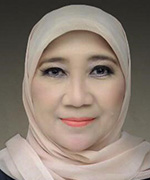
Association between Socioeconomic Status and self perceived Orthodontic Treatment need in Adolescents ( A survey using FAS III and IOTN AC )
Krisnawati Erry Tarman
Dr. Krisnawati Erry has graduated from Faculty of Dentistry, University of Indonesia and finished her Specialist in Orthodontic from the same university. She has been a lecturer at the Department of Orthodontics, University of Indonesia since 1987. She granted as advisor of the World Implant Orthodontic Association in 2017 ; She was reelected as President of the Indonesian Association of Orthodontists for the second time. Dr. Krisnawati has published numerous peer reviewed articles and with her students win the 2nd place for case report categories award at APOC 2018 in Boracay and also at 10th WIOC 2018 in Bali- Indonesia.
Abstract
Background: According to Basic Health Research 2013, the proportion of people who had received orthodontic treatment in Indonesia is very low. One of the reasons is that people often don't realize that they need orthodontic treatment. It shows that self-perceived orthodontic treatment need has an important role. One of the factors affecting self-perceived orthodontic treatment need is socioeconomic status, but previous studies showed contradictory results. Furthermore, this research has never been conducted in Indonesia. Objective: To determine whether the socioeconomic status associated with self-perceived orthodontic treatment need in students of 27 High school Jakarta. Methods: This cross-sectional study comprised 85 students of 27 High school Jakarta aged 15 to 17 years. Family Affluence Scale III questionnaire was given to assess their socioeconomic status and Index of Orthodontic Treatment Need Aesthetic Component sheet was given to assess their self-perceived orthodontic treatment need. The chi-square test was used for data analysis. Results: The significance value is less than 0.05 (p = 0.009) which indicates that there is a statistically significant difference between socioeconomic status and self-perceived orthodontic treatment need. Conclusion: There is an association between socioeconomic status and self-perceived orthodontic treatment need in students of 27 High School Jakarta.
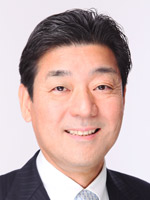
Easy debonding of ceramic brackets bonded with a light-cured orthodontic adhesive containing heat-expandable microcapsules with a CO2 laser
Noriyoshi Shimizu
Professional Experience and Education
| 2019 Project | Professor of Nihon University School of Dentistry |
|---|---|
| 2016-2018 | President of Japanese Orthodontic Society |
| 2015 | Research in Charge of Nihon University School of Dentistry |
| 2014 | Director of Nihon University Dental Technician School, School of Dentistry |
| 2013 | Vice Dean of Nihon University School of Dentistry |
| 2007-2012 | Director of Nihon University Dental Hospital |
| 2003-2018 | Professor and Chairman in Department of Orthodontics, Nihon University School of Dentistry |
| 1999 | Associate Professor of Nihon University School of Dentistry |
| 1986-1988 | Visiting Researcher, University of Toronto, MRC group in Periodontal Physiology |
| 1985 | Assistant Professor of Nihon University School of Dentistry at Matsudo |
| 1982 | Graduated from Nihon University Graduate School of Dentistry |
Honors and Awards
| 2016 | Best poster presentation award, World Federation for Laser Dentistry |
|---|---|
| 2013 | Academic award. The Japanese Society for Jaw Deformities |
| 2011 | Excellent presentation award. The Japanese Orthodontic Society |
Research Interests
Biology of periodontal tissues
Abstract
We investigated an easy debonding method for ceramic brackets using a light-cured Bis-GMA resin adhesives containing thermal expansion microcapsules and CO2 laser.
In order to debond the ceramic bracket, a heavy force must be applied physically to the bracket; this can sometimes cause fractures of the enamel and intense tooth pain. An orthodontic adhesive therefore must have contradictory properties that firmly bond the tooth and bracket during treatment but can easily separate them after treatment.
To find out the CO2 laser irradiation conditions (Operalaser PRO, YOSHIDA), the bracket surface was irradiated with the laser and the bracket base temperature and inside temperature of the pulp chamber under various conditions were evaluated using thermocouple sensor. Sixty brackets, bonded with paste and bonding agent containing microcapsule contents 0, 10, 20, 25 and 30 wt% were irradiated with CO2 laser. Shear bond strength tests were performed at 10 min after irradiation with a dental material universal testing machine.
With CO2 laser irradiation for 5s to the bracket, the bond strength in the 25% microcapsule group decreased significantly, to ~0.17 fold, compared with that of the no-laser group(P<0.05). The maximum temperature rise in the pulp chamber was 5.3°C with laser irradiation, which was less than the level that induces pulp damage.
From these results, it seems likely that the combined use of a light-cured orthodontic bonding agent containing microcapsules and a CO2 laser is a simple debonding system for ceramic brackets, with less debonding time, enamel damage, and tooth pain.
APOS Trends Award
no img
Nikhilesh R. Vaid
The evolution of ”APOS Trends in Orthodontics & Current Metrics”
no img
Nikhilesh R. Vaid
Award announcements
no img
Peter Ngan
Jyothindra Kumar APOS Tends Award for the best Original Research Article” (2017-2018)
no img
Kazuo Tanne
Hendro Kusnoto APOS Tends Award for the second best Original Research Article” (2017-2018)
no img
Tsang Tsang Franklin She
Fu Minkui APOS Tends Award for the best Clinical Article (2017-2018)
no img
Marcio Rodrigues De Almeida
Renato Africa APOS Tends Award for the second best Clinical Article (2017-2018)
no img
V. T. Vineeth
Loh Soo Ann APOS Tends Award for the best Clinical Pearl Article / Innovation Article” (2017-2018)
no img
Nikhilesh R. Vaid
APOS Trends Editor’s Choice awards for the Best Reviewers
no img
Eric Liou
APOS Trends- The road ahead!
International Boards Symposium
The WFO Committee on National & Regional Certifying Boards
- Speaker:
- Nikhilesh R. Vaid
WFO Initiative for Orthodontic Certifying Boards - A 10 year initiative
- Speaker:
- Roberto Justus
The American Board of Orthodontics: A Historical Perspective
- Speaker:
- Valmy Kulbersh
Past and Present ABO Certification: Structure and Process
- Speaker:
- David Sabott
German Board of Orthodontics: How to become a Diplomate
- Speaker:
- Kahl-Nieke Barbel
Brazilian Board of Orthodontics: past, present, and future
- Speaker:
- Adilson Luiz Ramos
The System of Japanese Orthodontic Board
- Speaker:
- Ryuzo Kanomi
20 YEAR JOURNEY OF THE INDIAN BOARD OF ORTHODONTICS
- Speaker:
- Shailesh Deshmukh
Society of World Boards-The road ahead!
- Speaker:
- Thomas Ahman



